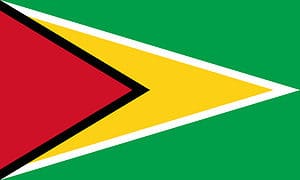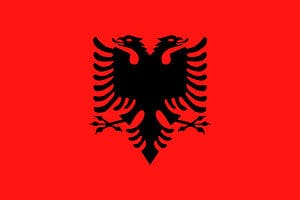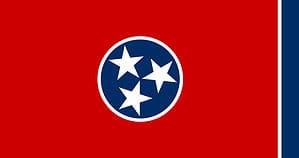Looking for every flag in the world? You’ve come to the right place!
Flags have been a key symbol of national identity since ancient times. Evoking an array of emotions, they are beacons of pride and strength for nations and regions, for which people can rally around in times of celebration or turmoil.
Symbol of National Identity
National flags are a source of pride for citizens across the world. From the stars and stripes of the United States to the tricolor of France, each flag is a unique embodiment of the country it represents. Flags are used in ceremonies and festivals to reinforce feelings of patriotism and national unity. They are symbols of victory, strength, and resilience.
Though flags often embody a nation’s history, they also represent its future. Flags can be designed to reflect the changing values and attitudes of a nation or to commemorate a special event. For example, the flag of South Africa was redesigned in 1994, after Apartheid ended, to reflect a spirit of unity and inclusion. Similarly, the Canadian flag was revamped in 1965 to include a maple leaf, symbolizing the country’s commitment to peace and international cooperation.
Flags also stand for the hope of progress and a better future. In South Africa, for example, the flag was redesigned to embody this hope, with its vibrant colors of red, green, and gold representing the country’s mineral wealth and diverse cultures. By unifying different ethnicities under a single flag, South Africans have expressed their commitment to creating a unified nation where all citizens enjoy equal rights.
Flags also embody a nation’s culture and traditions. In India, for instance, the flag is known as “Tiranga,” meaning tricolor. It consists of saffron, white, and green stripes, representing courage, peace, and prosperity. The Pakistan flag, meanwhile, is colored green to represent the country’s commitment to Islam, while the white stripe symbolizes its ethnic and religious diversity.
Similarly, the design of the German flag is steeped in history; it is composed of black, red, and gold stripes to commemorate the unification of Germany in 1871.
Many countries have adopted flags that display their national identities. These range from simple geometric shapes to complex designs with intricate symbolism. Mexico’s flag features a simplified version of the country’s coat of arms in the center, with green and white stripes around it. The flag of India features the Dharma Chakra or “Wheel of Law,” which represents truth, justice, and peace in Indian culture. Meanwhile, the flag of Japan has a bright red sun on a white background, representing the nation’s imperial lineage.
Flags are also a way for countries to express solidarity with other nations. For instance, the flags of Australia and New Zealand are similar in design due to their shared history as British colonies.
International Flags
Flags also serve to unite people on a global level, connecting citizens of different countries under one banner. The Olympic flag is a powerful reminder of this spirit; its five interlocking rings represent the union of people worldwide, competing together in a spirit of peace and goodwill.
Flags also represent international organizations such as the European Union, the United Nations, and other regional organizations. The European Union is represented by a circle of twelve yellow stars on a blue background, often called the “circle of stars.” The United Nations flag is composed of the official UN symbol, a map of the world centered on the North Pole, with white and light blue stripes radiating outwards.
The African Union also has an official flag featuring a green background with the organization’s emblem in the center.
Regional Flags
Flags can also be used to signify regional or local identities. The flags of states, provinces, and cities often feature unique designs and symbols that reflect the character of their respective regions. For example, every province and territory in Canada has its own distinct flag. The Flag of Alberta, for example, features a blue background with the provincial shield in the center. This is a nod to the province’s status as a major natural resource producer.
Similarly, the Flag of Saskatchewan features the provincial shield and green background to signify its abundance of farmland. Regional flags can also provide information about the area’s history and culture, such as the Flag of Quebec, which features a white fleur-de-lis, a symbol of French heritage.
The world is home to countless flags, each unique in its own way. Some are simple and minimalist, while others use intricate shapes and bold colors. Each flag has a story to tell; it may represent a country’s long-standing traditions or embrace modern ideals. From the flags of Europe to those of Asia and Africa, every flag has an inspiring tale to tell.
No matter where you are in the world, a national flag may help to unite and motivate citizens. It is a source of pride and strength that can be used to foster a sense of patriotism and national identity.
This article will break down every national flag in the world as well as the 50 state flags of the USA.
North America And The Caribbean
Antigua and Barbuda
Antigua and Barbuda adopted the current flag in 1967 as they transitioned into self-governance from the UK. The country gained independence in 1981. The 7 point rising sun represents the 6 parishes of Antigua and the island of Barbuda.
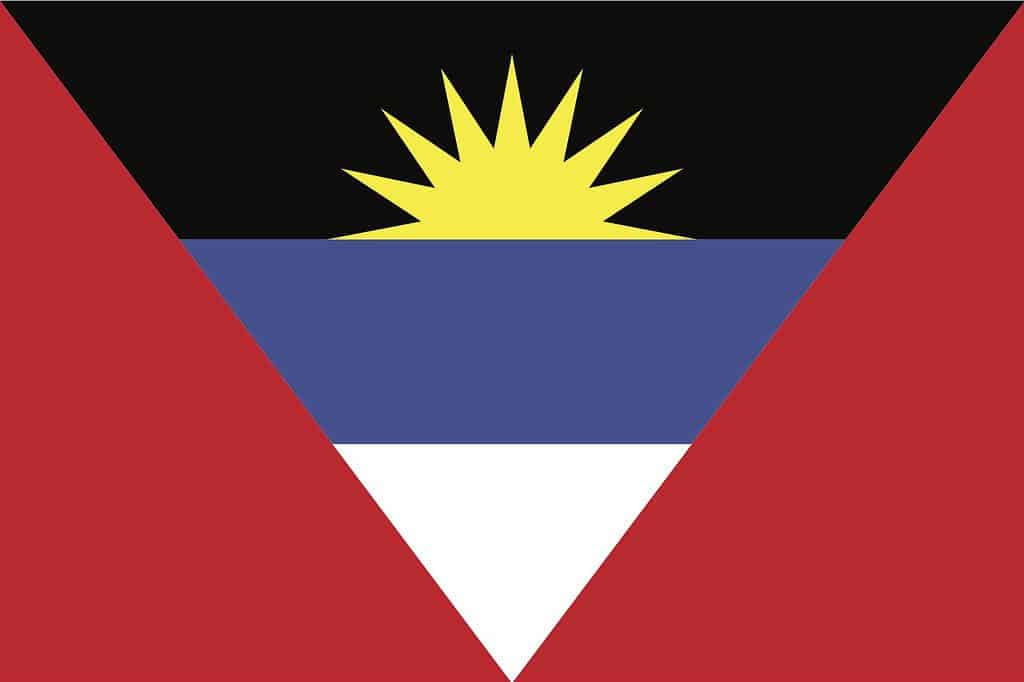
The flag of Antigua and Barbuda is vibrant with five different hues.
©nortongo/Shutterstock.com
Bahamas
The flag of the Bahamas has been around since the 1800s. However, it was not officially used until 1964, when the UK granted the nation autonomous rule. The Bahamas gained independence from the UK in 1973.
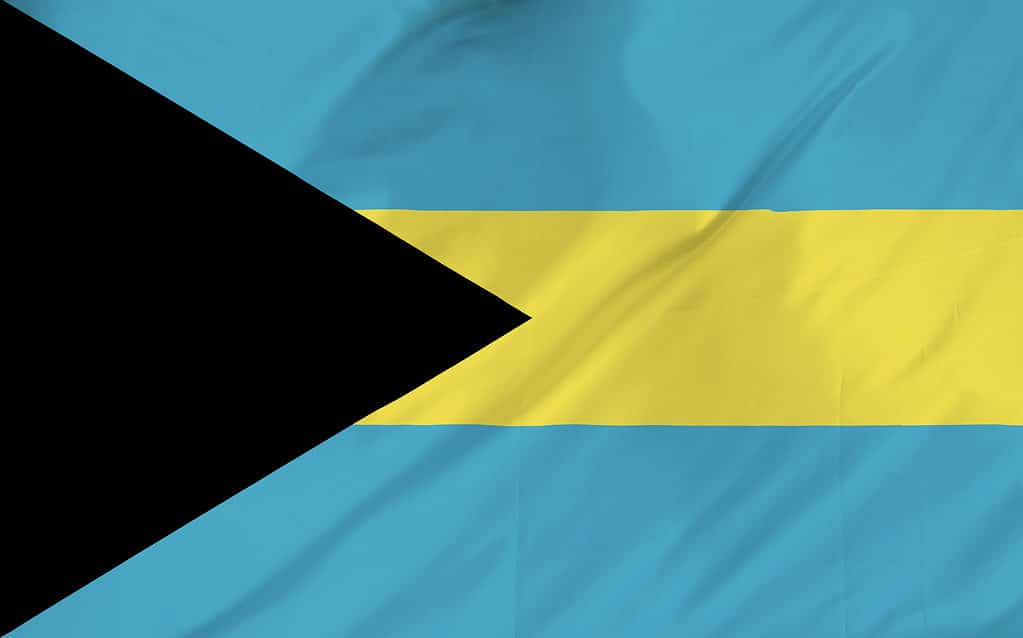
The flag of the Bahamas features the beautiful aqua shade of the Caribbean Sea.
©Sparrowbh/Shutterstock.com
Barbados
The flag of Barbados has been in use since 1966, the same year it gained sovereignty from the UK. The center of the flag features the trident of Posiden.
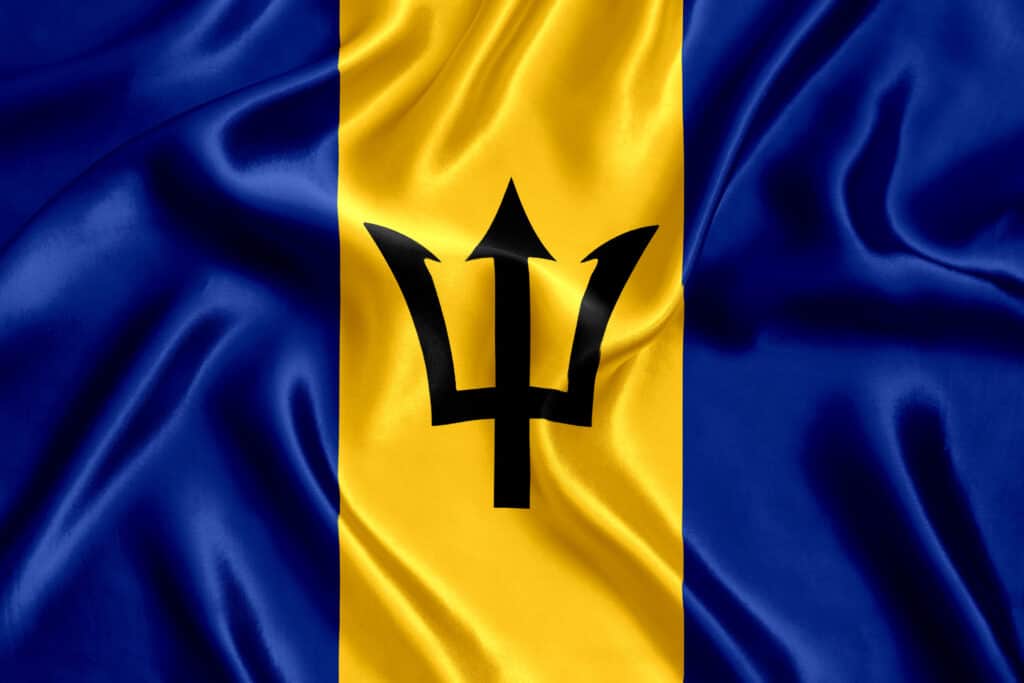
The flag of Barbados features vibrant colors of royal blue and yellow.
©iStock.com/pavlofox
Belize
The current flag of Belize is very similar to the flag of British Honduras/Belize, which flew over the nation until 1981, when it gained its independence. The flag of Belize is one of the only flags to use humans as a center point.
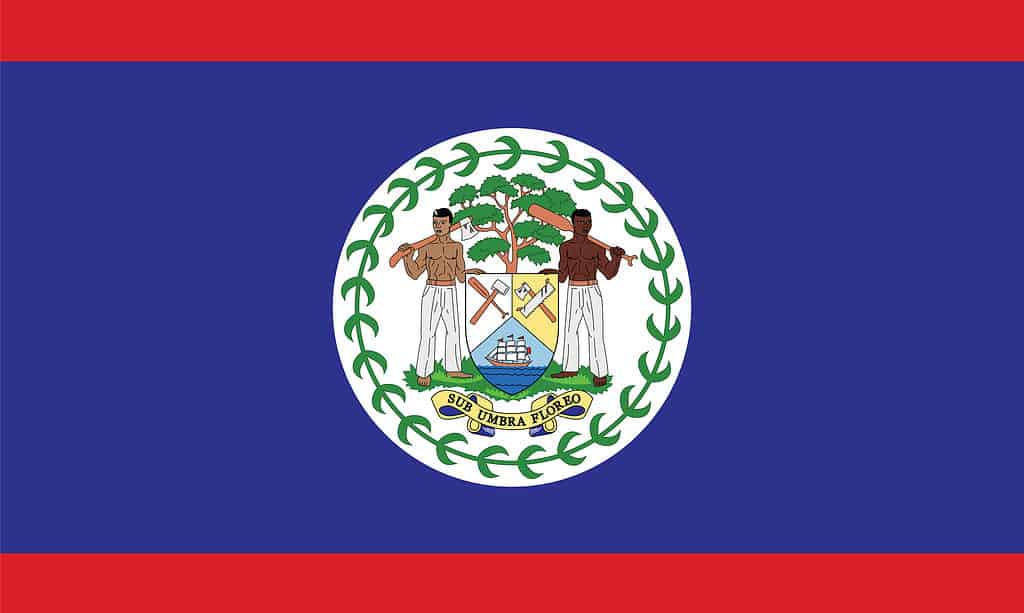
The flag of Belize consists of a blue field with the national coat of arms in the center, surrounded by two unequal red stripes.
©iStock.com/de-nue-pic
Burkina Faso
In 1984, President Thomas Sankara moved to change his country’s name from the Republic of Upper Volta to Burkina Faso, 24 years after gaining independence from French rule. This change lead to the creation of new national symbols, including the flag, which represents the country itself and its solidarity with other African nations.
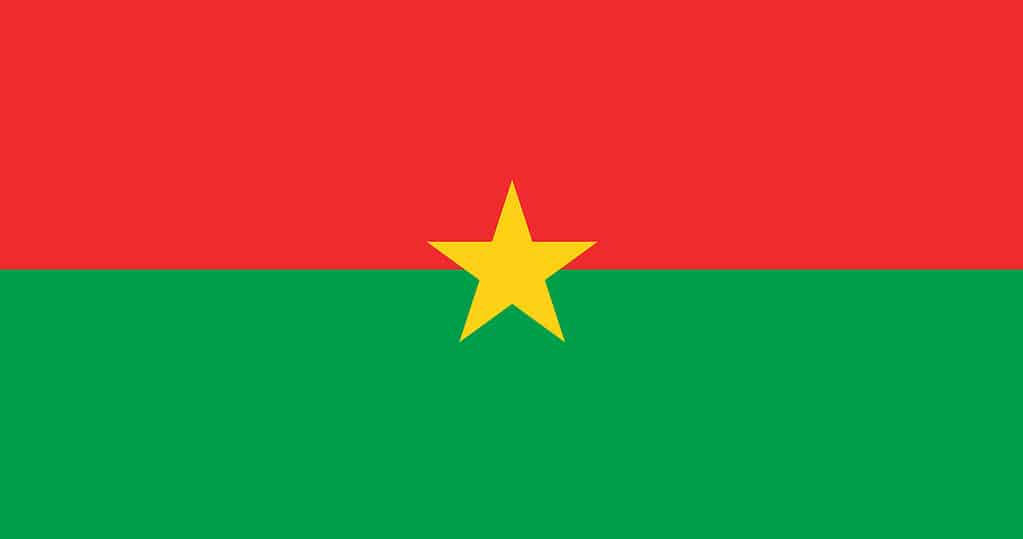
The Burkina Faso national flag is horizontally striped red and green with a central five-pointed yellow star and a 2:3 width-to-length ratio.
©imaskul/Shutterstock.com
Canada
Canada was part of the British Empire until 1931, but it still relied on the commonwealth for some time after that. In 1965, the government finally approved the famous maple leaf flag.
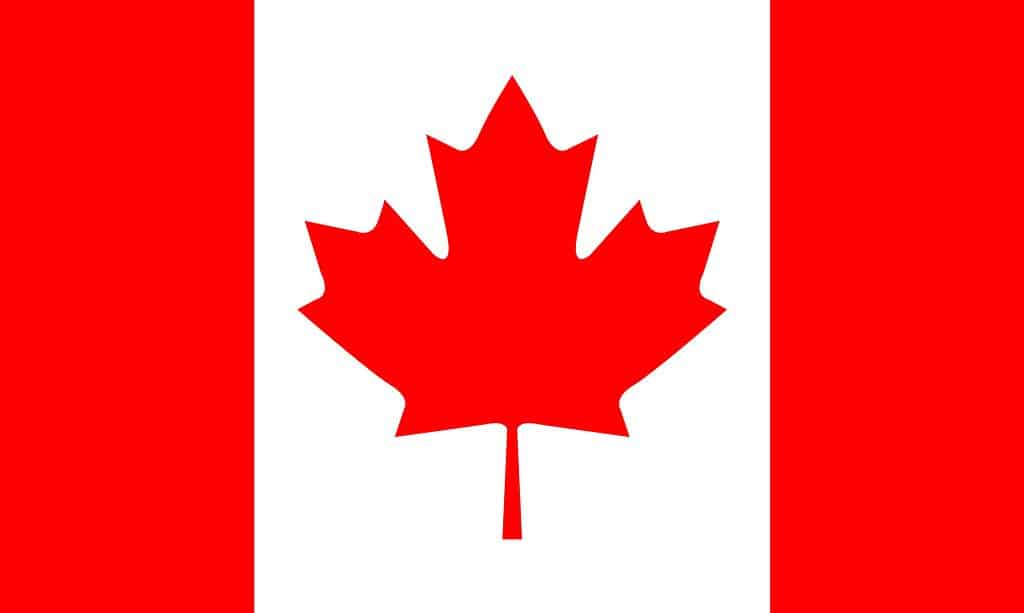
The flag of Canada has a red field with a white square in the center featuring a red, 11-pointed maple leaf.
©iStock.com/RM80
Central African Republic
The flag of the Central African Republic (CAR) was adopted after the country gained independence from France in 1958 after a long and difficult struggle.

The flag of the Central African Republic combines the traditional colors of France (blue, white, and red) with those of Africa (green, yellow, and red). The vertical stripe reminds viewers that Europeans and Africans should work together in mutual respect. The yellow star symbolizes independence, African unity, progress, and tolerance.
©Atlaspix/Shutterstock.com
Costa Rica
The Costa Rican flag is based on the French revolutionary flag and has been in use since 1848. The nation was part of the Spanish empire until 1821 and was officially recognized in 1850.
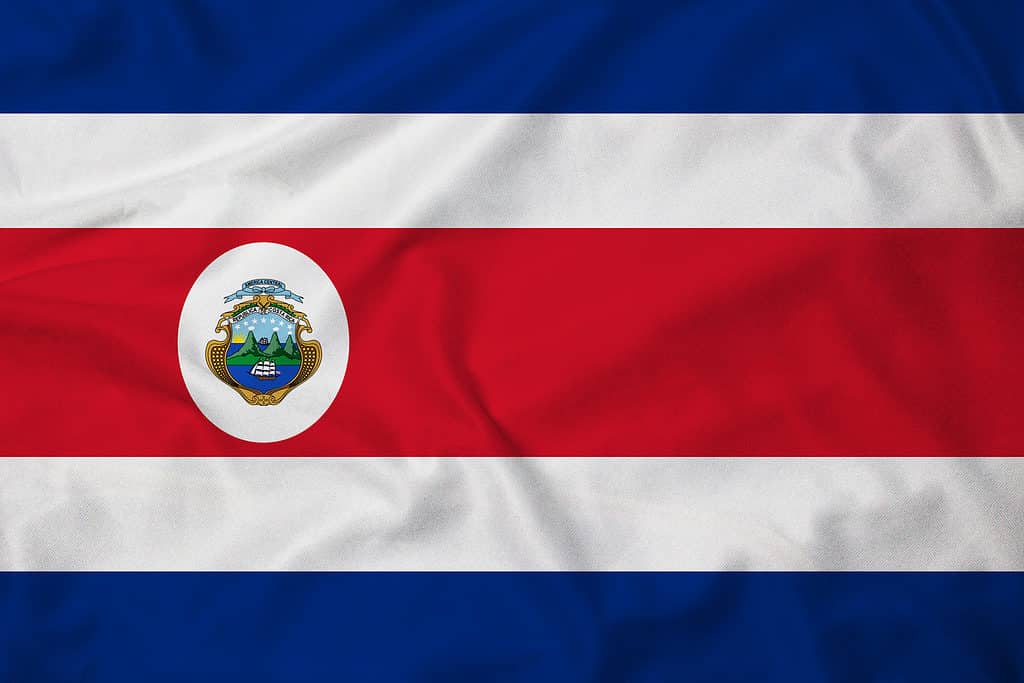
The Costa Rican flag features red, white, and blue stripes with an emblem in the center stripe.
©Royal Graphics/Shutterstock.com
Cuba
Cuba was part of the Spanish empire until 1898 and part of the USA until 1902. The official flag of Cuba was designed in 1849 and officially adopted in 1902. The white star of the flag represents indendence.
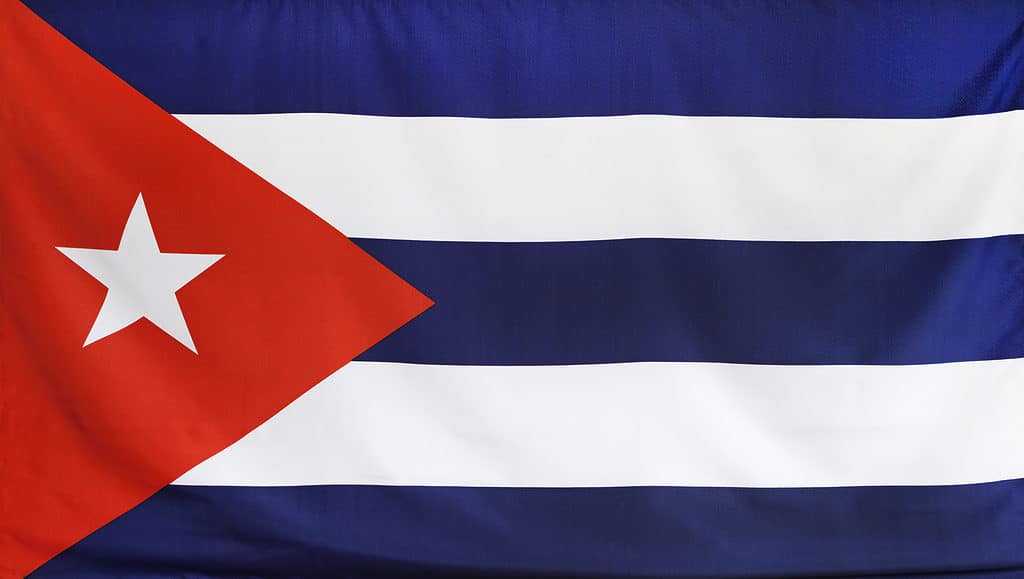
The flag of Cuba features red, white, and blue colors with a prominent white star.
©Sehenswerk/Shutterstock.com
Dominica
The official flag of Dominica was adopted in 1978 when the small island nation gained independence from the UK. Until then, the flag was blue with a parrot emblem and a union jack.
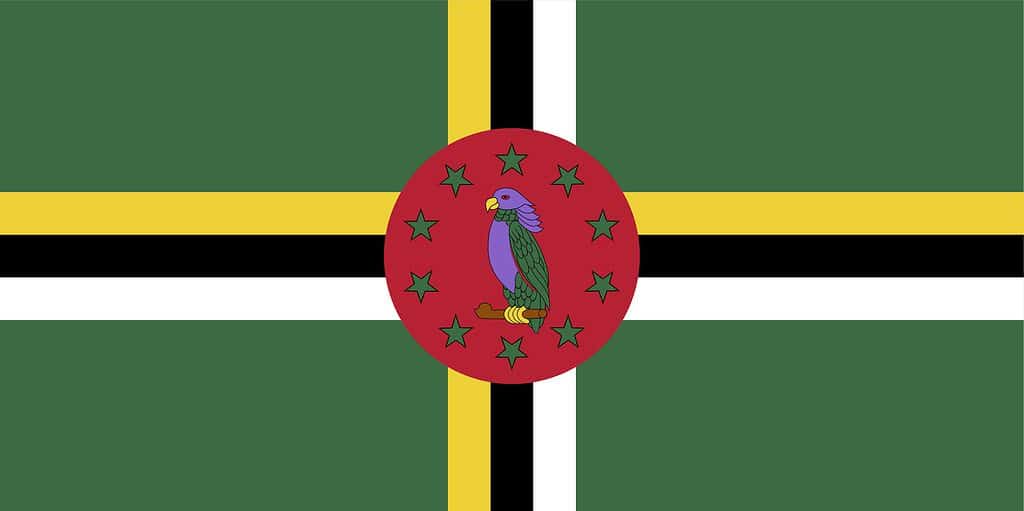
The flag of Dominica features a cheerful parrot at the center.
©mapsandphotos/Shutterstock.com
Dominican Republic
The Dominican Republic has a long history of being occupied by various powers. However, their official flag has been in use since 1863. The flag features a shield with many Christian elements and the words “Dios, Patria, Libertad” (God, homeland, liberty).
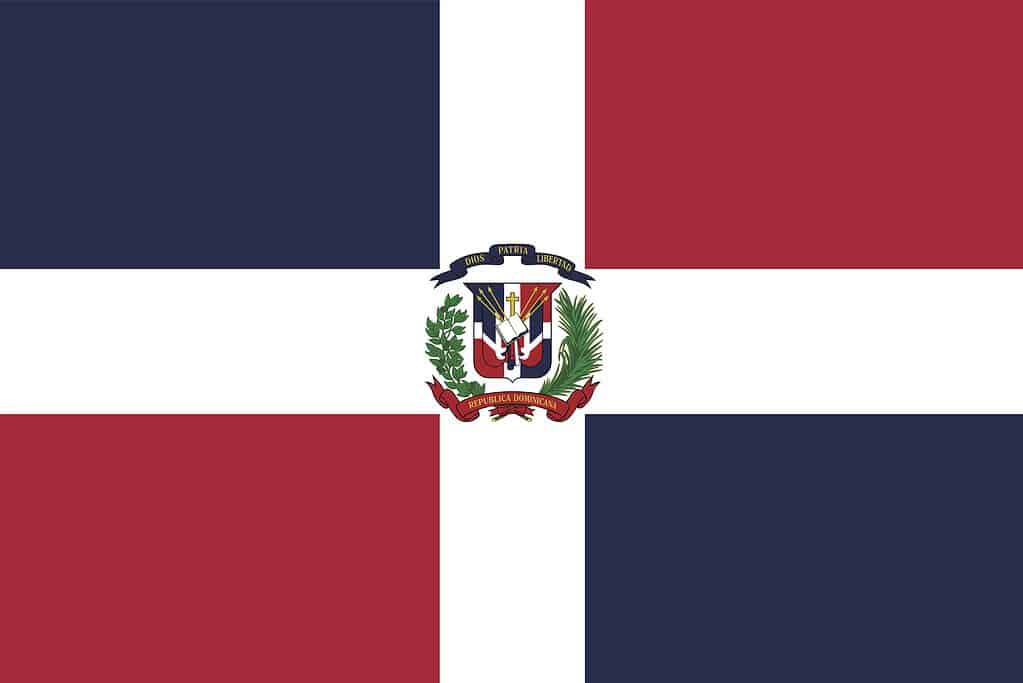
The flag of the Dominican Republic features red, white and blue with the national emblem at the center.
©N. Vector Design/Shutterstock.com
El Salvador
El Salvador was part of the Spanish Empire until 1821 and was officially regarded as an autonomous nation in 1841. There have been many versions of the flag, but the current flag of El Salvador has been in use since 1912.
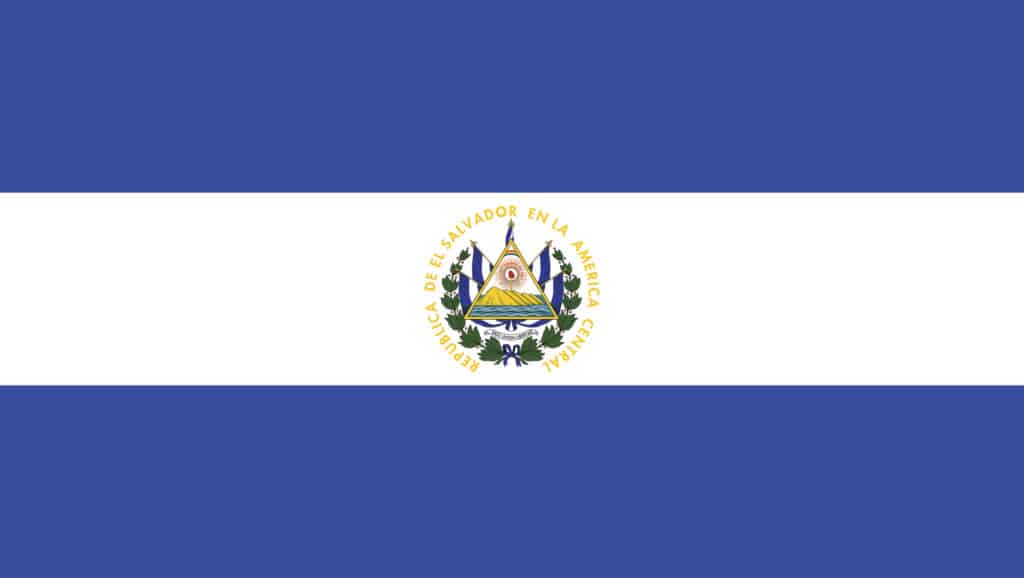
This iteration of the flag of El Salvador has been recognized as the national flag since 1912.
©iStock.com/bodrumsurf
Grenada
Grenada began using its own flag in 1967, but it was not officially recognized until the country gained independence from the UK in 1974. The flag features a symbol of nutmeg, which is one of the main exports of Grenada.
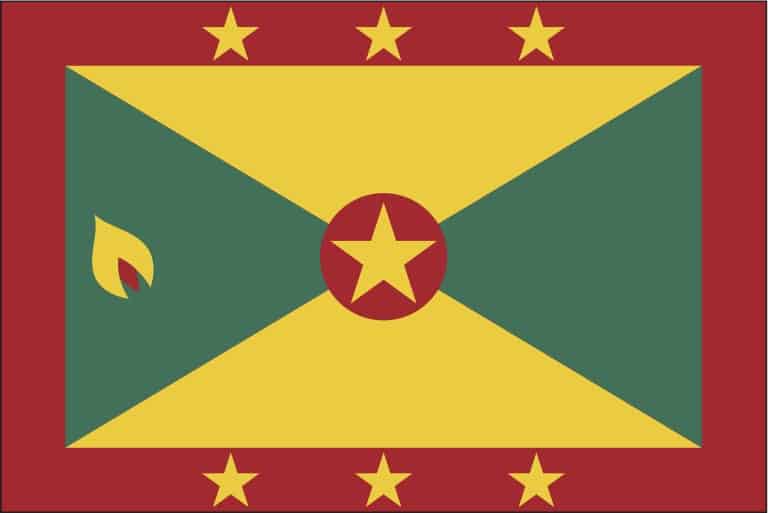
The flag of Grenada features power symbols and colors.
©MATULEE/Shutterstock.com
Guatemala
Guatemala was part of the Spanish empire until 1821 and became its own independent nation in 1839. However, the current flag was not adopted until 1871. Guatemala is one of 4 countries to feature firearms on its official flag.
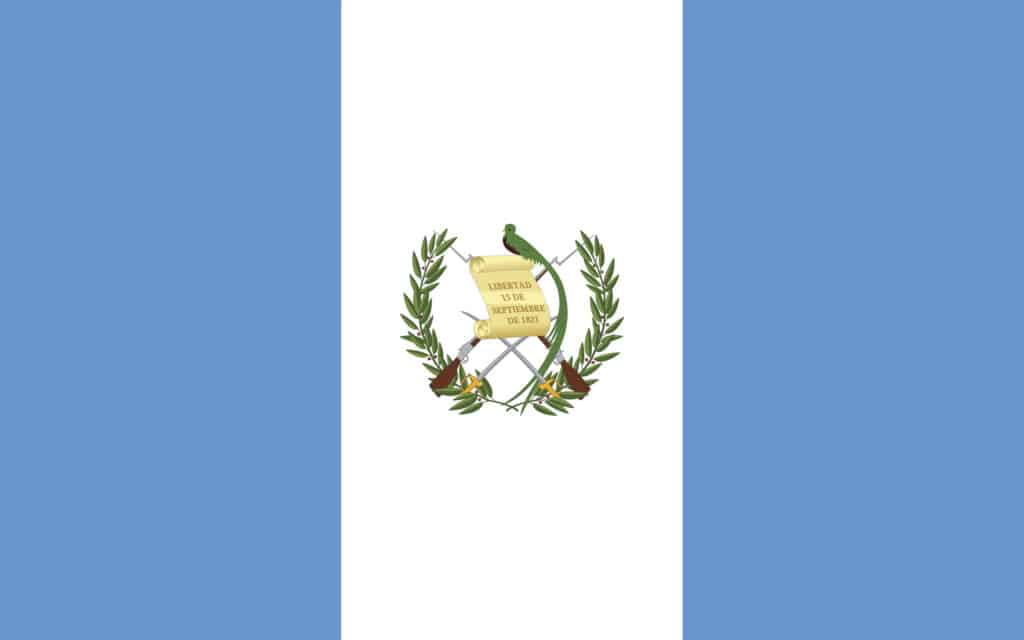
The flag of Guatemala features a lovely shade of blue with an intriguing national emblem at the center.
©bodrumsurf/Shutterstock.com
Haiti
Haiti gained independence from France through a slave rebellion in 1804. The Haitian flag represents the French tricolor banner with the white stripe removed to recognize the black and mixed-race Haitians.
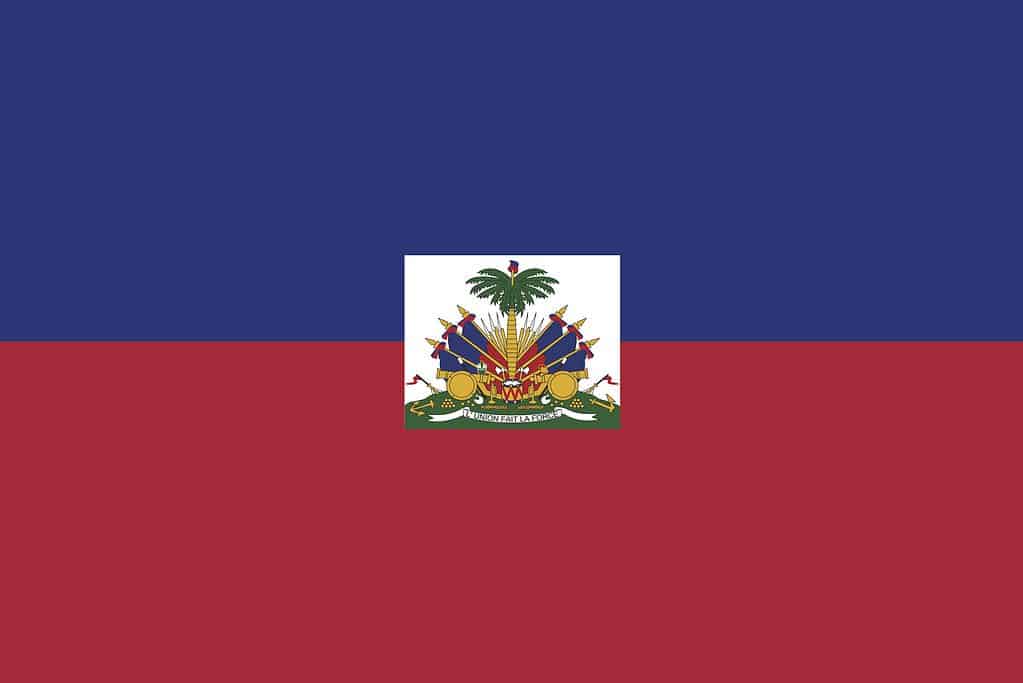
Haiti’s flag design is a nod to its gaining of independence from France.
©N. Vector Design/Shutterstock.com
Honduras
Honduras was part of the Spanish empire until 1821 and was officially recognized as a country in 1838. The nation adopted its current flag in 1866. The 5 stars represent the 5 nations that once were a part of the Republic of Central America (El Salvador, Guatemala, Costa Rica, Honduras, and Nicaragua).
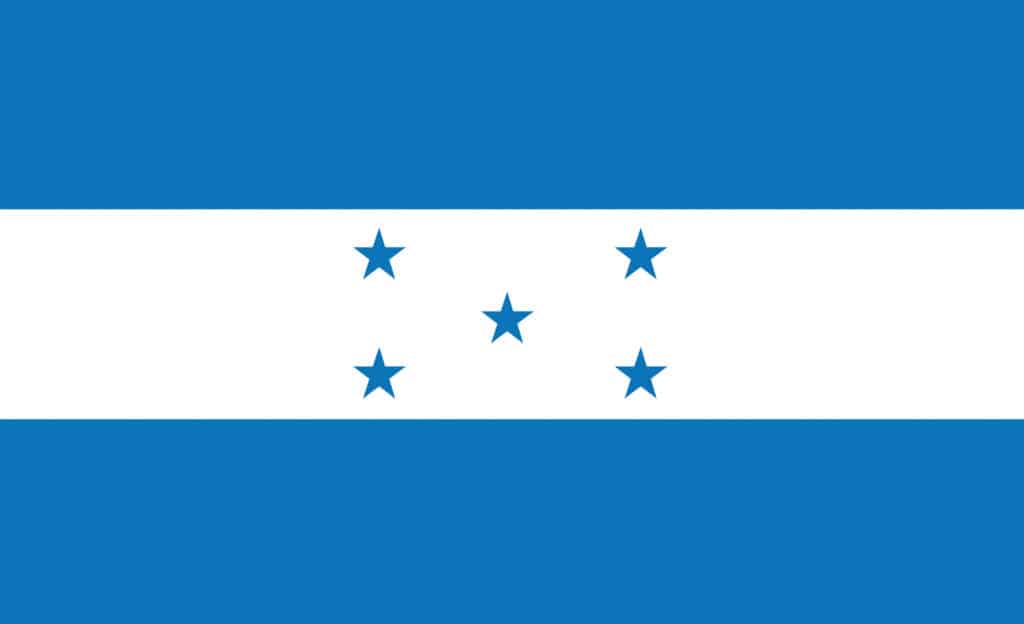
The Flag of Honduras features blue and white stripes with five blue stars in the center stripe.
©iStock.com/sebastian coll
Jamaica
Jamaica gained independence from the UK in 1962. The flag was chosen that same year from more than 360 designs. This is the only national flag that doesn’t contain red, white, or blue.
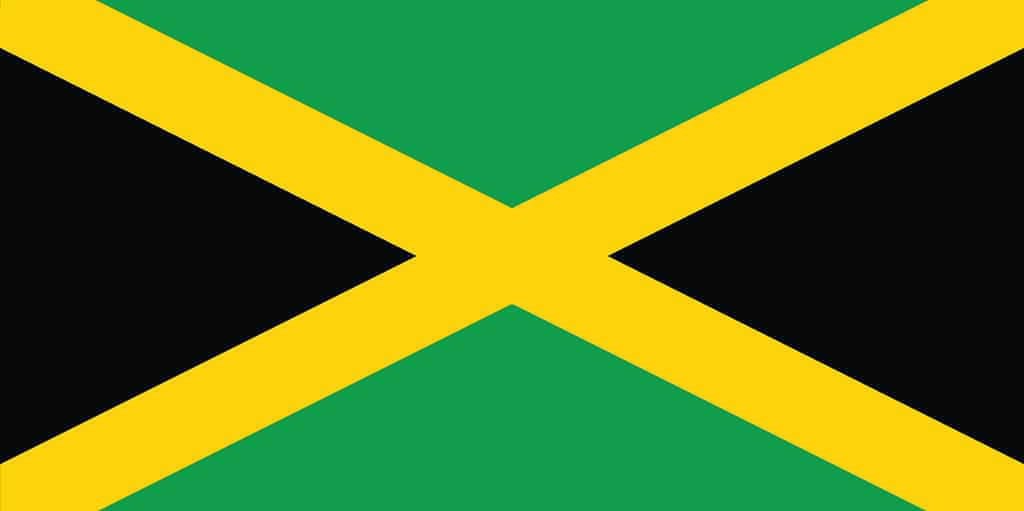
The flag of Jamaica is highly recognizable for its bold black, green and gold colors.
©iStock.com/kckate16
Mexico
Mexico officially gained independence from Spain in 1821. The nation used various flags, and the current flag depicting an eagle on a cactus eating a snake was officially adopted in 1968.
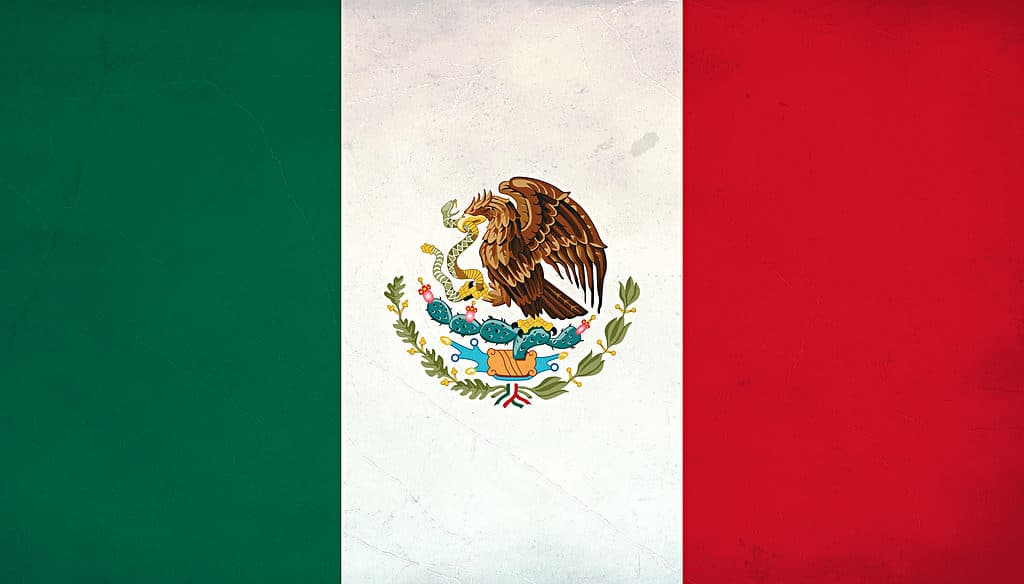
The flag of Mexico features an eagle, with a background of green, white, and red vertical stripes.
©H.studio/Shutterstock.com
Nicaragua
Nicaragua became an officially recognized country in 1850 after centuries of Spanish rule. Their current flag was adopted in 1908. Similar to the Honduras flag, this flag also symbolizes the hope to reunite the Republic of Central America.
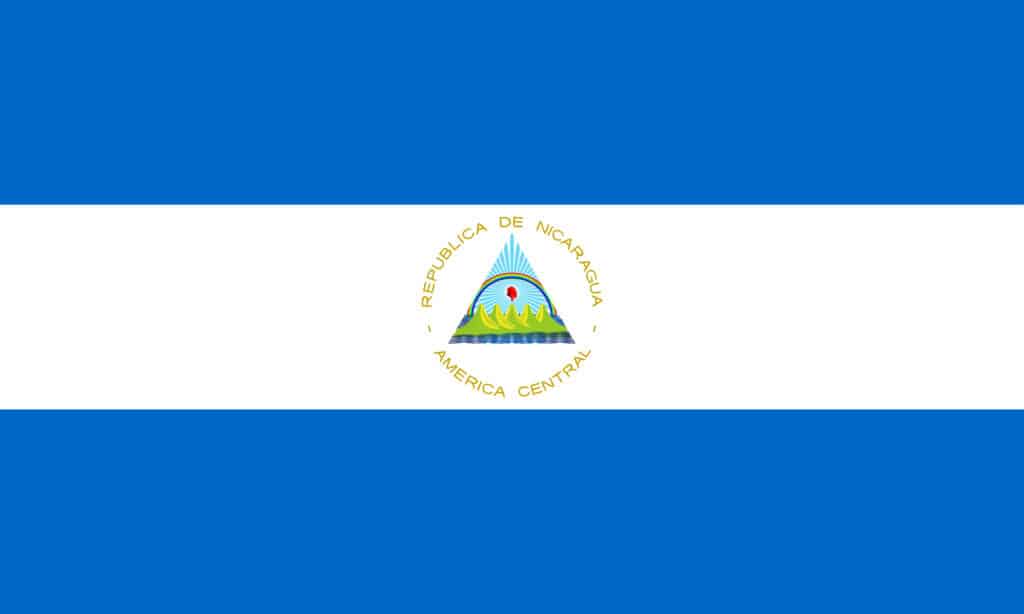
The flag of Nicaragua features blue and white stripes with an emblem at the center.
©iStock.com/Juan Ignacio Rodríguez Moronta
Panama
Panama was part of the Spanish empire until 1821 and part of Colombia until 1903. Their official flag was adopted in 1925. The 2 colors symbolize the 2 main political parties in Panama.
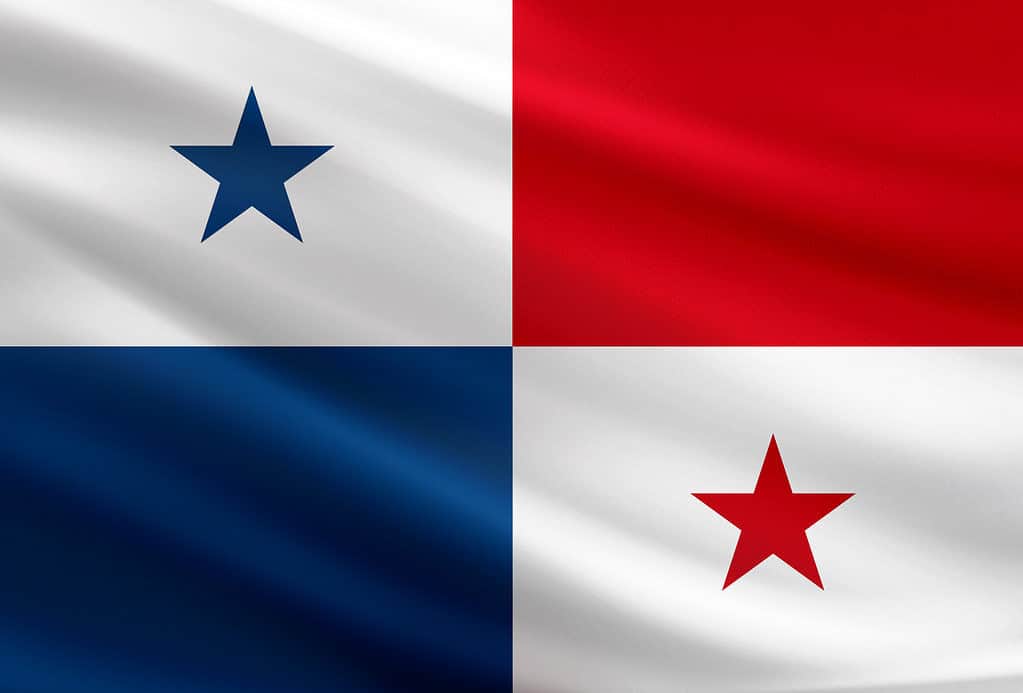
The Panama flag features red, white, and blue along with two stars.
©Osman Bugra Nuvasil/Shutterstock.com
Saint Kitts and Nevis
Saint Kitts and Nevis is a small island nation that was part of the UK until 1983. The official flag of the country was adopted that same year.
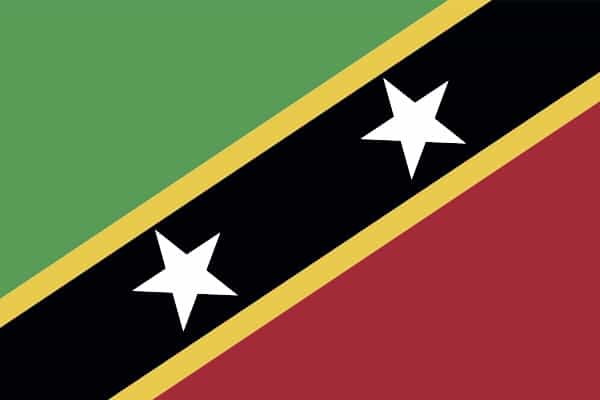
The Saint Kitts and Nevis flag features bold colors of green, red, gold, black and white with two notable white stars on the black center stripe.
©Piotr Przyluski/Shutterstock.com
Saint Lucia
Saint Lucia gained independence from the UK in 1979. However, their national flag was adopted in 1967. The center triangles, represent the volcanoes on the island.
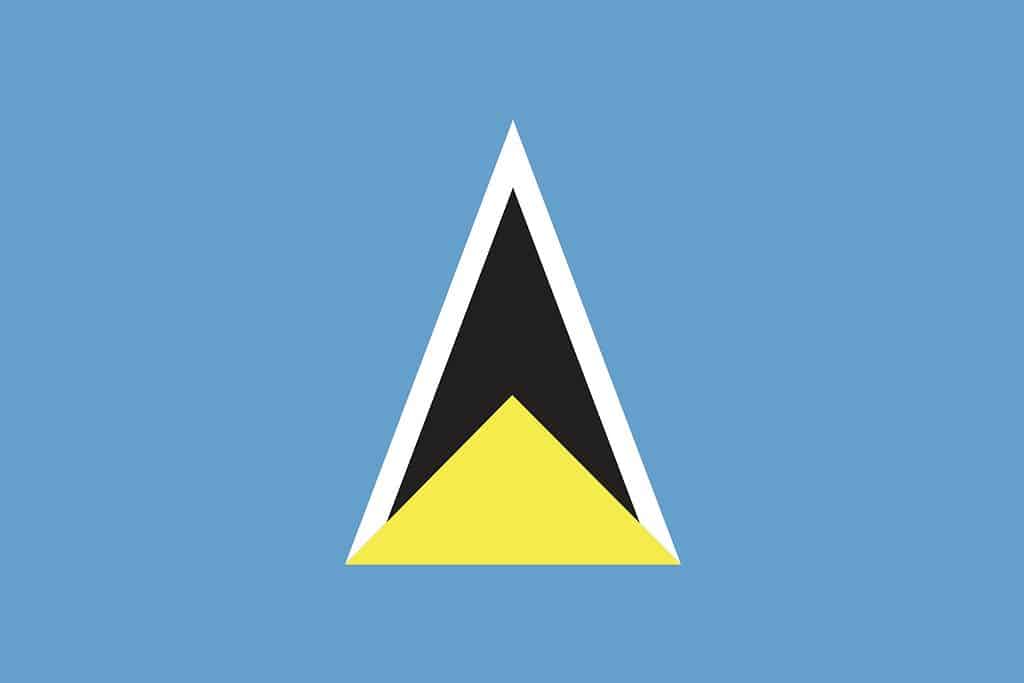
The flag of Saint Lucia features a soothing blue background and an intriguing center design.
©nortongo/Shutterstock.com
Saint Vincent and the Grenadines
Saint Vincent and the Grenadines used several different flags after its independence from the United Kingdom in 1979. The current flag was adopted in 1985.
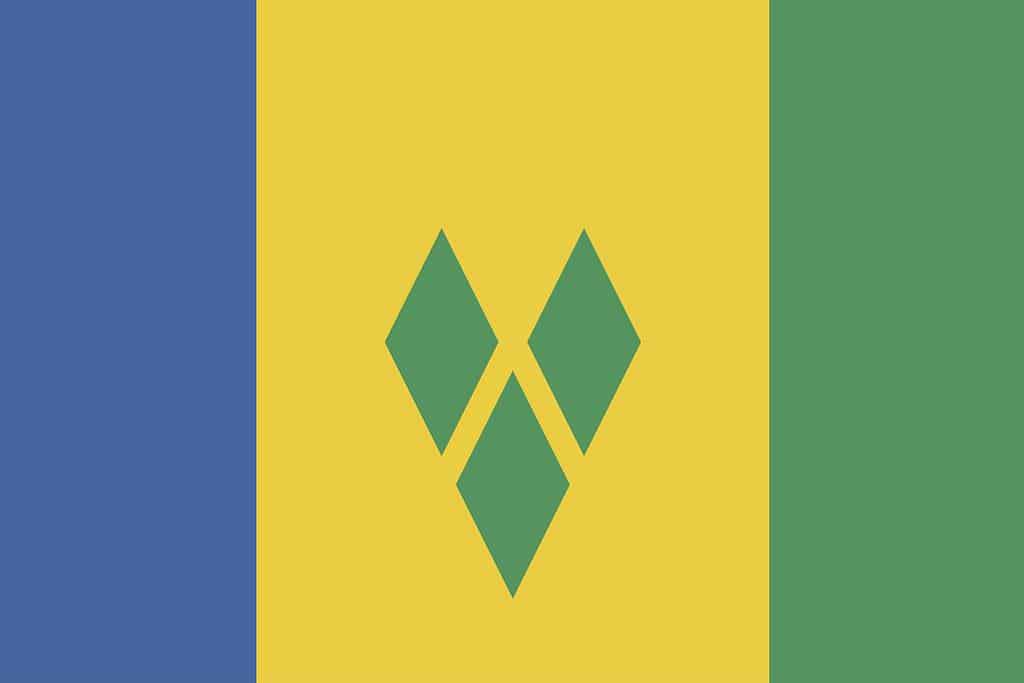
The Saint Vincent and the Grenadines flag consists of three colors: blue, green and gold.
©Gil C/Shutterstock.com
Trinidad and Tobago
Trinidad and Tobago gained independence from the UK in 1962 and adopted their official flag that same year. The red, black, white colors are said to represent fire, earth, and water.
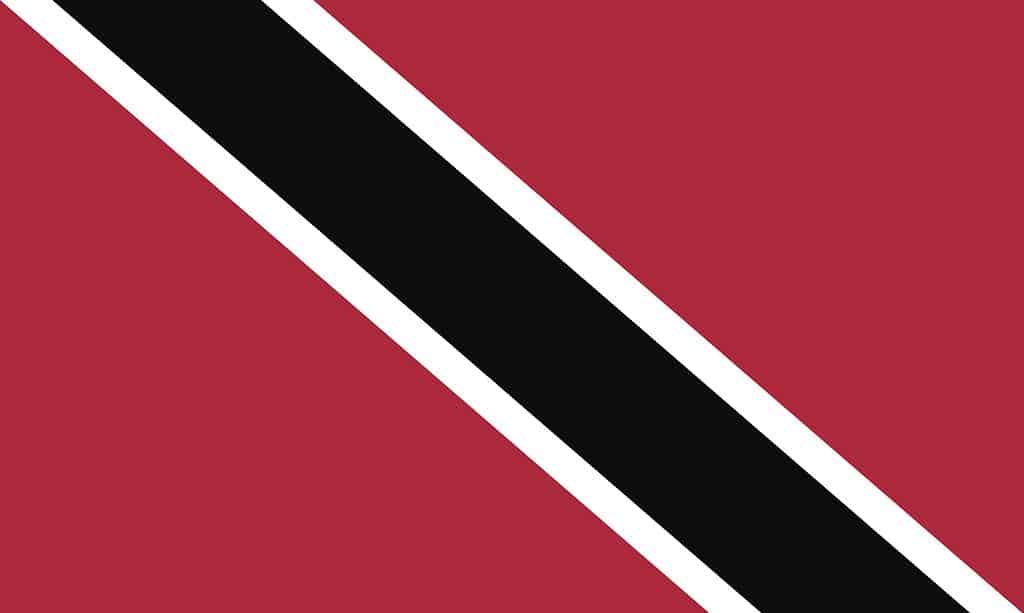
The flag of Trinidad and Tobago is simple yet impactful feature three hues: red, black and white.
©Momcilica/Shutterstock.com
United States
The US flag was first used after the 13 colonies declared independence from the UK in 1776. The current version, however, has 50 stars, while the original flag only had 13.
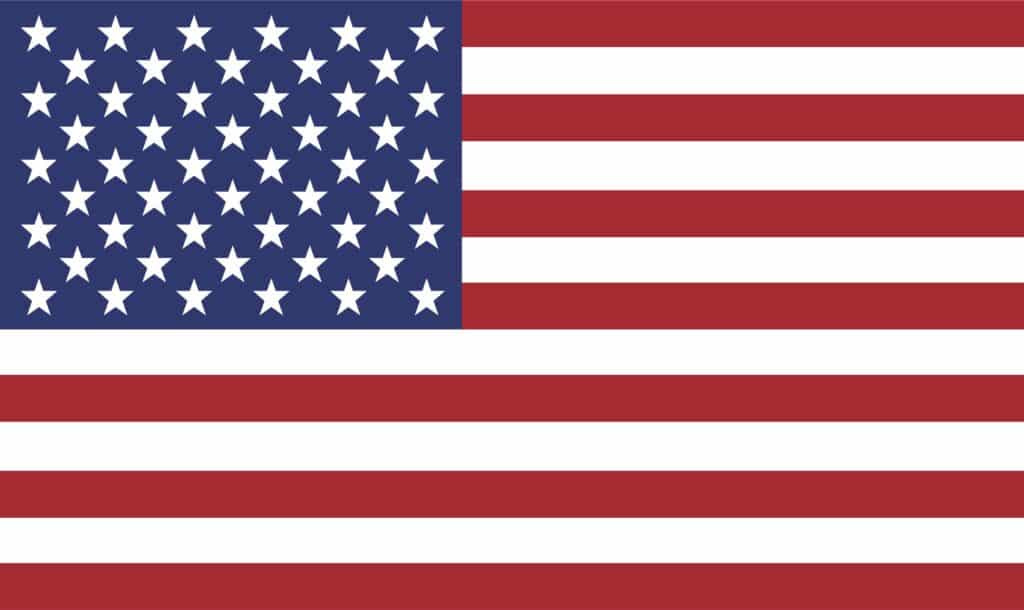
The United States flag has 13 stripes for the 13 original colonies, and it has 50 white stars, each representing the one of the 50 states in the union.
©charnsitr/Shutterstock.com
United States Flags
Alabama
Alabama was the 22nd state to be added to the union in 1819. The state flag was adopted in 1895, and many historians believe it is based on the confederate battle flag.
Alaska
Alaska was the 49th state admitted to the US in 1959. However, the state flag was adopted in 1927 when Alaska was still a territory.
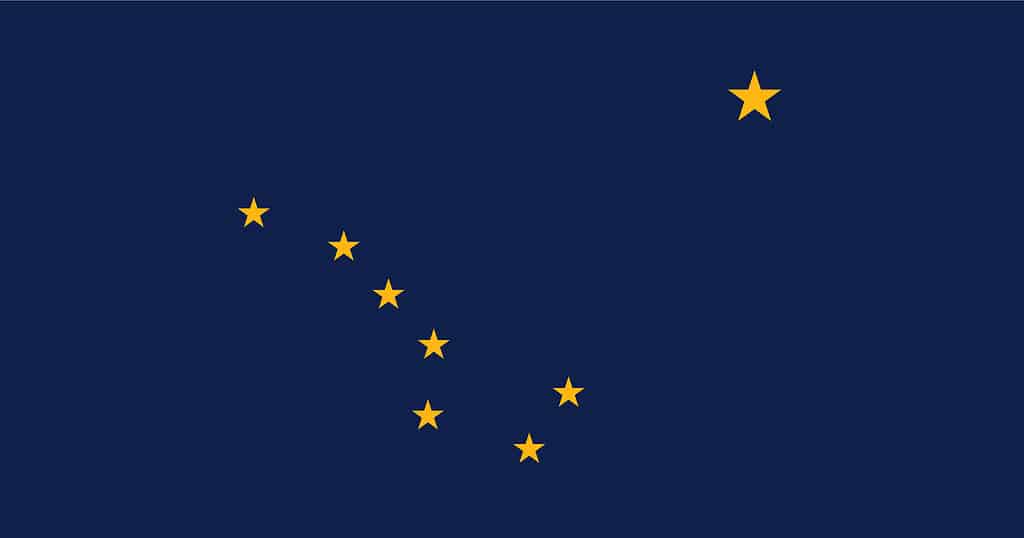
The flag of Alaska showcases eight stars which symbolize the Big Dipper and the North Star.
©iStock.com/Kamlesh Suthar
Arizona
Arizona was the 48th state added to the union in 1912. In 1917, Arizona adopted its official state flag.
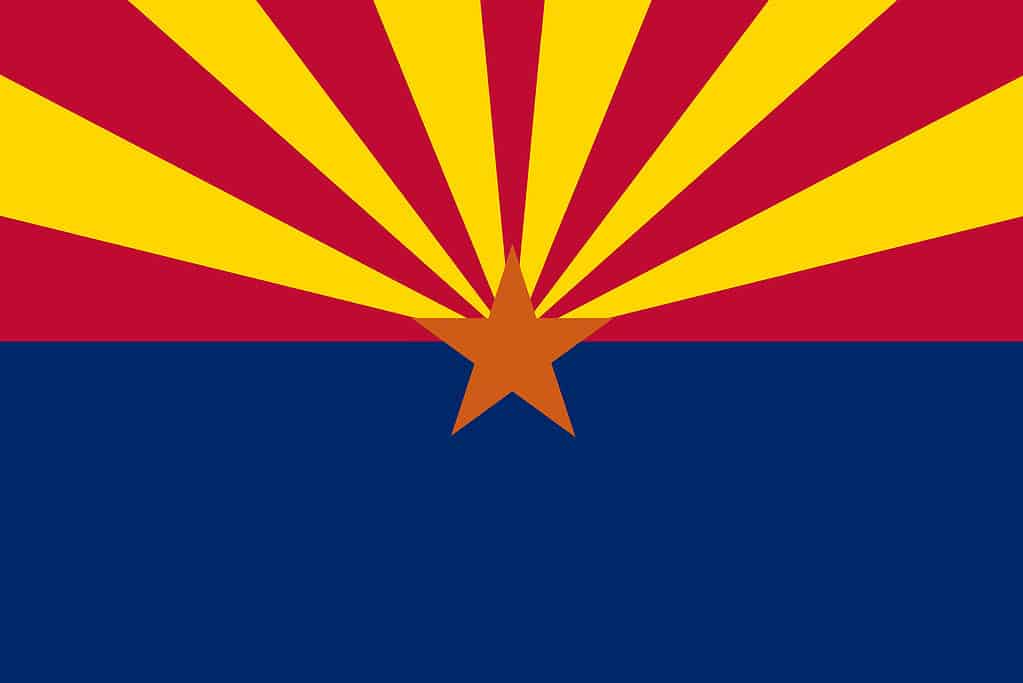
The Arizona state flag was adopted in 1917.
©iStock.com/PeterEtchells
Arkansas
Arkansas was added to the USA in 1836 and was the 25th state. They adopted their official flag in 1913.
California
In 1850, California was officially added to the US as the 31st state. The official flag was adopted in 1911.
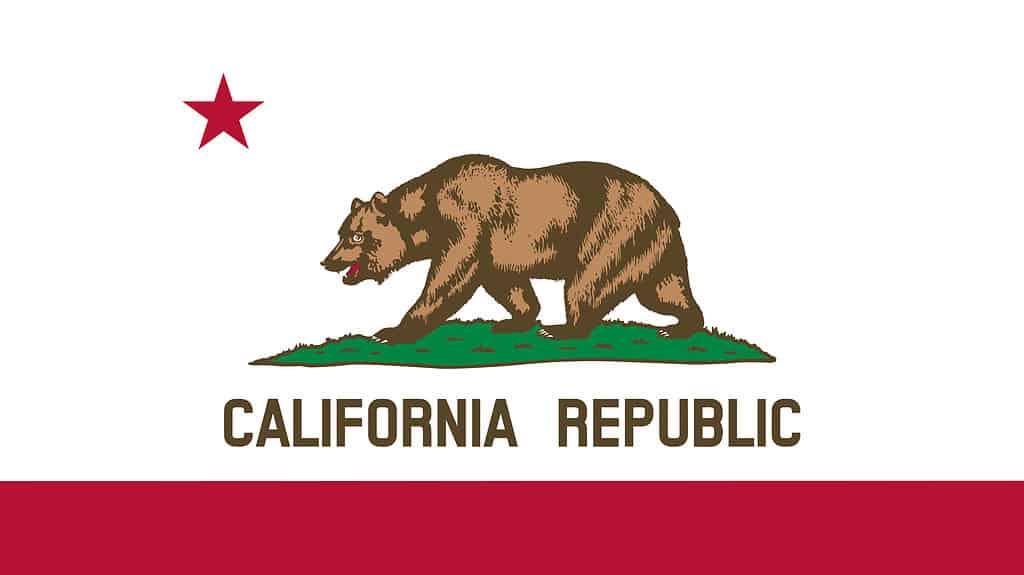
The flag of California features an image of a bear at its center symbolizing strength and independence.
©iStock.com/bndart
Colorado
Colorado became the 28th US state in 1876. However, the official state flag wasn’t adopted until 1911.
Connecticut
Connecticut was one of the 13 colonies and was admitted to the union in 1788. Their official flag was introduced in 1897. However, it had been around since 1711 as the seal of the Connecticut colony.
Delaware
Delaware was the 1st US state to ratify the Constitution, making it the first official state in 1787. This is reflected by the state flag, which was adopted in 1913.
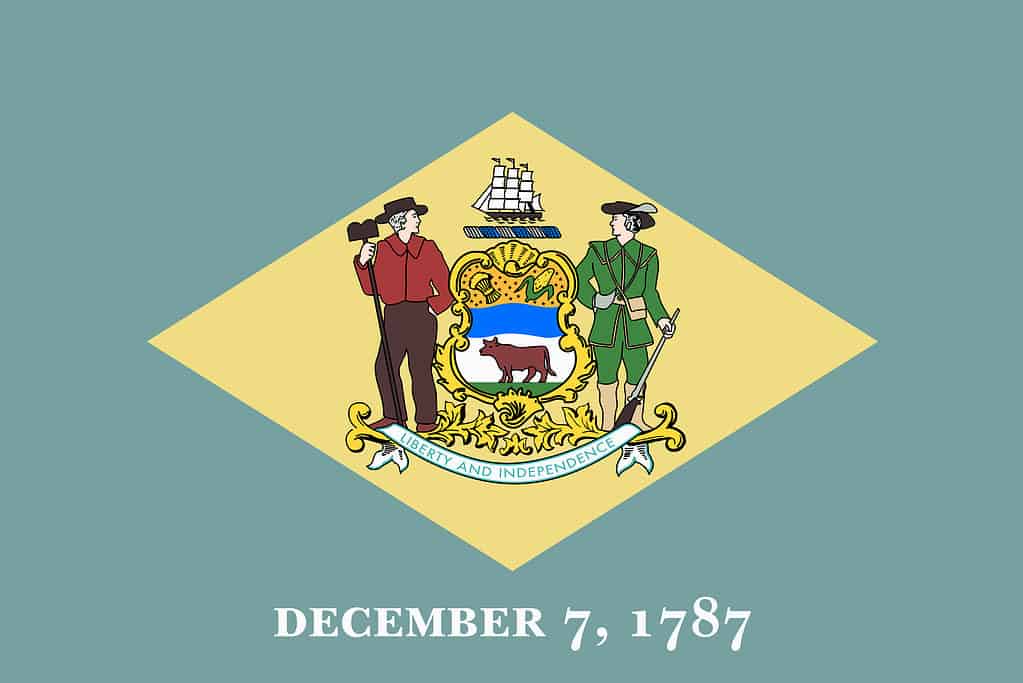
The flag of Delaware features a blue background as well as a buff-colored diamond with the coat of arms at its center.
©iStock.com/Ivan Burchak
Florida
Florida was the 27th state added to the US in 1845. They adopted the red St Andrews cross with the coat of arms in 1900.
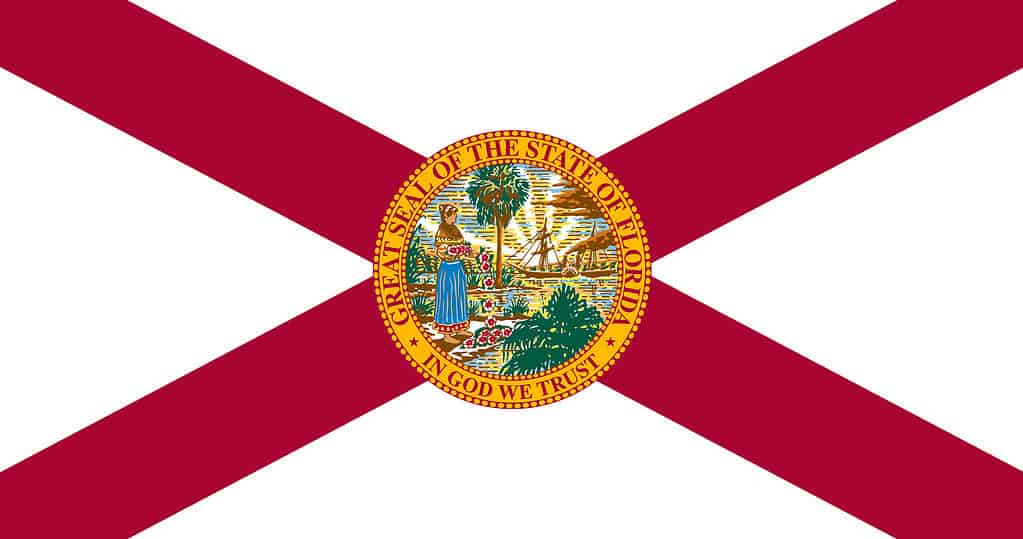
The flag of Florida consists of a red saltire on a white background with the state seal in the center.
©iStock.com/Kamlesh Suthar
Georgia
Georgia was one of the 13 colonies and was the 4th state to ratify the constitution in 1788. The state has had several different flag versions, replacing the confederate battle flag in 2001 with the current design.
Hawaii
Hawaii was the last state to be added to the union in 1959. The state flag has been the region’s official flag since 1845.
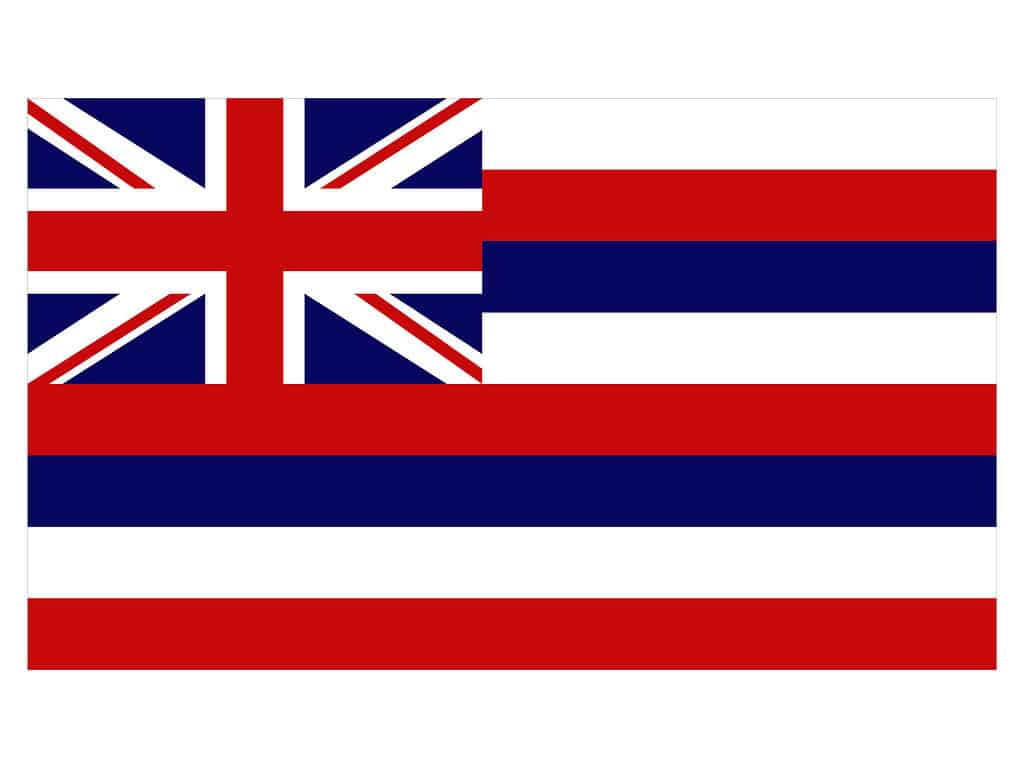
The flag of the state of Hawaii features blue, red and white stripes as well as a Union Jack design in the top left corner.
©iStock.com/Milos Subasic
Idaho
In 1890, Idaho was added to the US as the 43rd state. The official flag was added in 1907.
Illinois
Illinois was added to the union in 1818 and was the 21st state added to the union. The current state flag version was added in 1969.
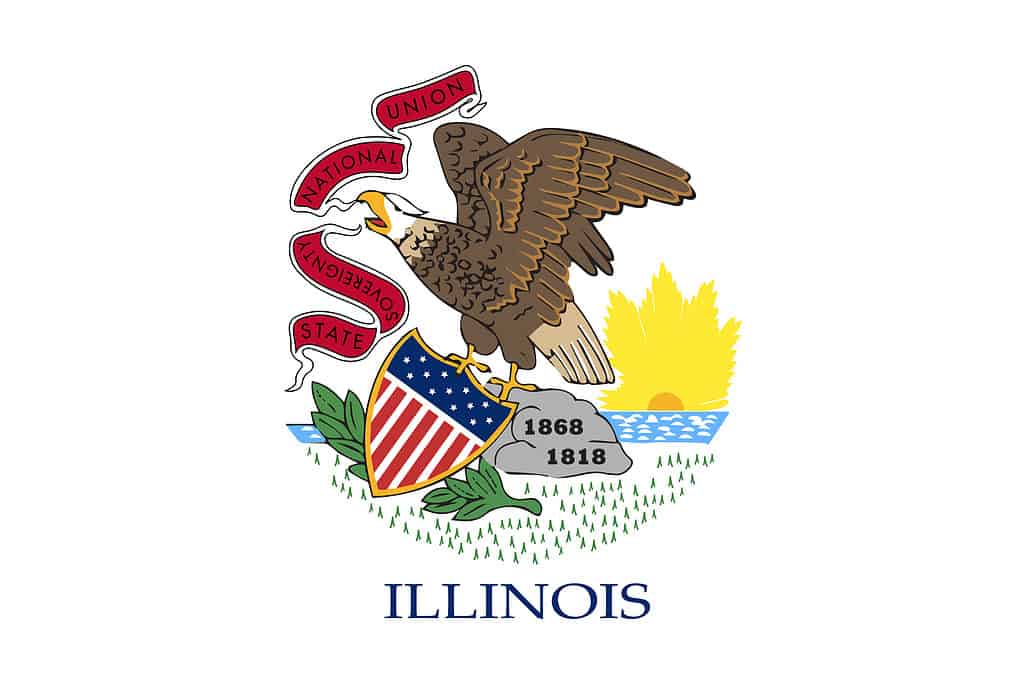
The current flag of Illinois dates back to 1969.
©Comet Design/Shutterstock.com
Indiana
Indiana was the 19th state added to the USA in 1816. The state flag has been in use since 1917.
Iowa
Iowa was added to the USA in 1846 and was the 29th state added to the union. The state’s official flag was adopted in 1921.
Kansas
Kansas was the 34th state added to the US in 1861. However, the state did not adopt its current official flag until 1961.
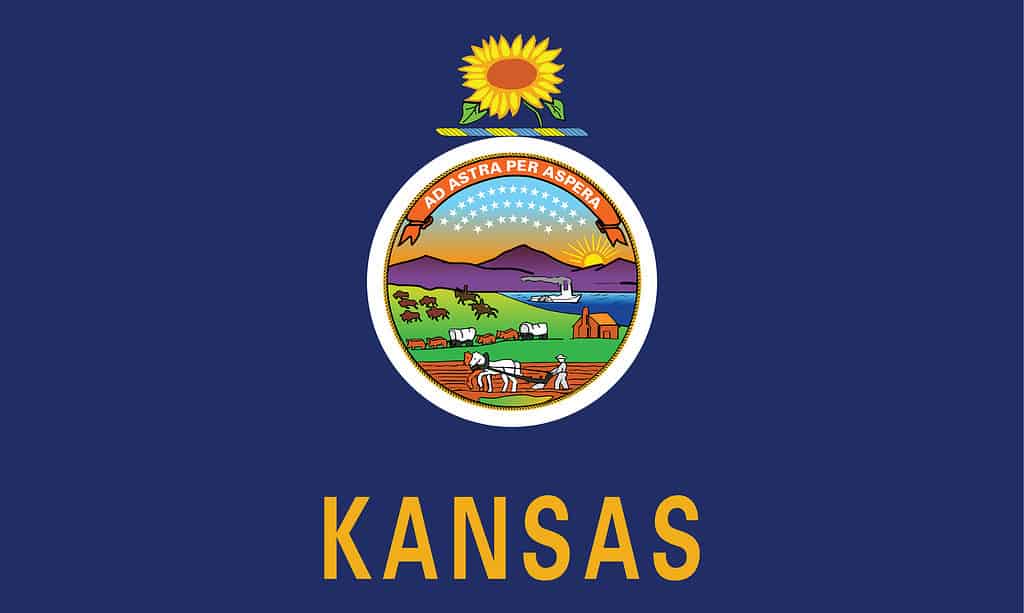
All of the images on the seal in the flag of Kansas tell a tale of the state’s history.
©iStock.com/bodrumsurf
Kentucky
Kentucky became the 15th state of the USA in 1792. The current version of its flag was adopted in 1918.
Louisiana
Louisiana was the 18th state added to the US in 1812. The official flag was adopted in 1912.
Maine
Maine was the 23rd state added to the USA in 1820. The flag currently in use was adopted in 1909.
Maryland
Maryland was one of the 13 colonies and was the 7th state to ratify the US constitution. In 1904, they combined banners that were used by both pro confederates and pro unions to create the state flag.
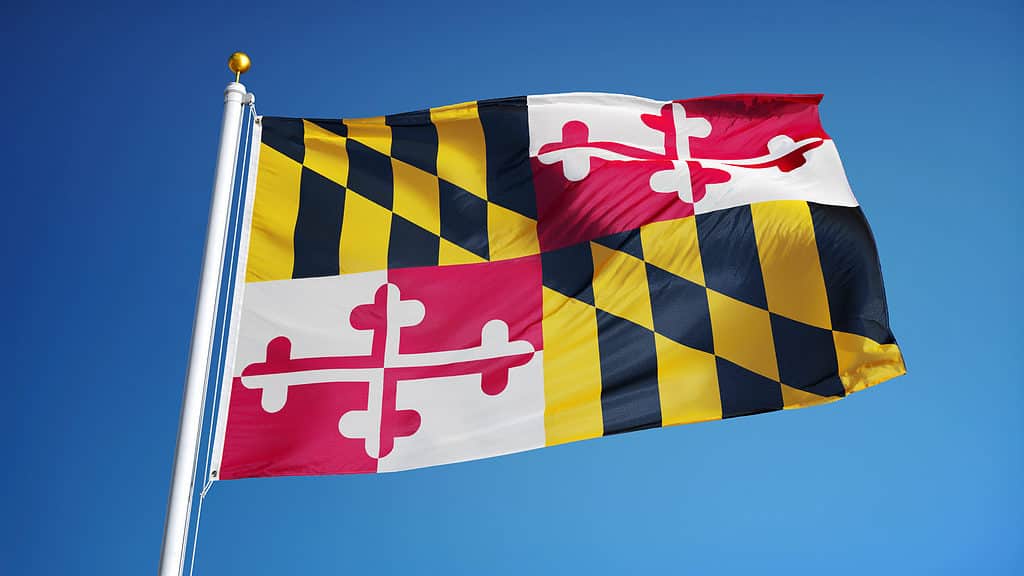
The Maryland flag represents both pro-confederate and pro-union.
©railway fx/Shutterstock.com
Massachusetts
Massachusetts was the 6th state to ratify the constitution in 1788. The state has had several flags, but the current one was adopted in 1971.
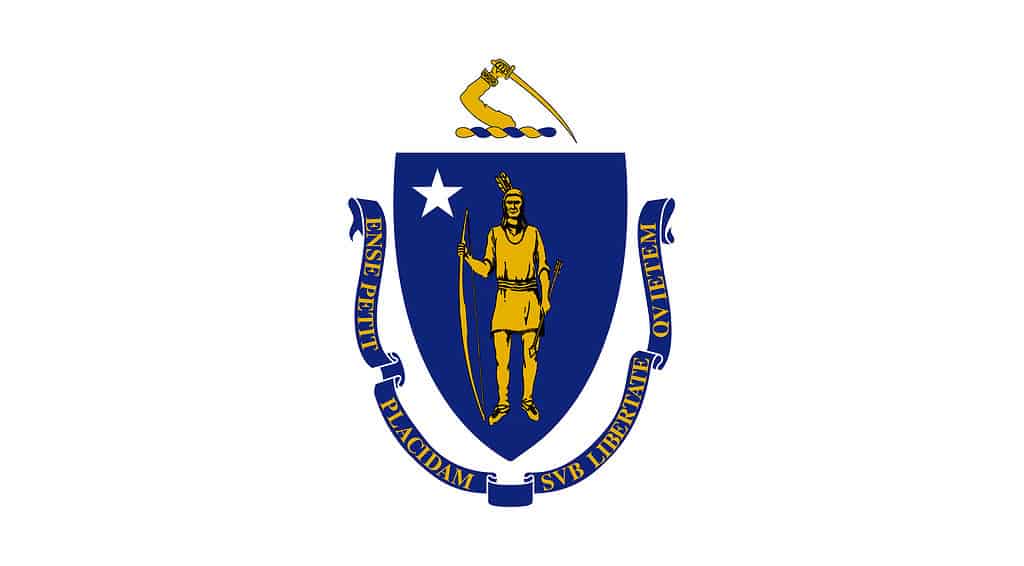
The current flag of Massachusetts was adopted in 1971.
©Comet Design/Shutterstock.com
Michigan
Michigan was the 26th state added to the union in 1837. The official flag was adopted in 1911.
Minnesota
Minnesota was added to the USA in 1858 and was the 32nd state. The current flag design has been used since 1983.
Mississippi
Mississippi was the 20th state added to the union in 1817. The state flag was recently changed in 2021 from the 1894 flag, which contained the confederate battle flag in the upper left corner.
Missouri
Missouri was the 24th state added to the US in 1821. The state flag was adopted in 1913.
Montana
Montana was the 41st state added to the union in 1889. The current flag design has been in use since 1905.
Nebraska
Nebraska was the 37th state added to the USA in 1867. The flag of Nebraska was adopted in 1925.
Nevada
Nevada was the 36th state added to the USA in 1864. The current flag is only a slight variation of the state flag adopted in 1925.
New Hampshire
New Hampshire was one of the 13 colonies and the 9th state to ratify the constitution. The state flag has been in use since 1932.
New Jersey
New Jersey was the 3rd US state to ratify the constitution in 1787. The current state flag has been in use since 1896.
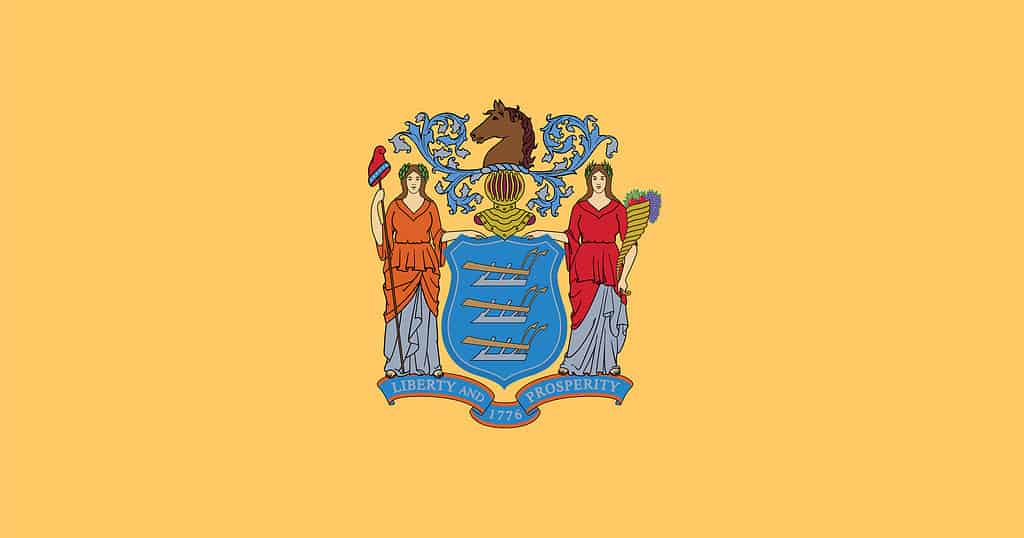
The flag of New Jersey represents strength, liberty and freedom while paying tribute to the state’s agricultural tradition.
©iStock.com/Kamlesh Suthar
New Mexico
New Mexico was the 47th state added to the USA in 1912. The state flag was adopted in 1925.
New York
New York was the 11th state to ratify the US constitution in 1788. The current flag is a slight modification of the original New York flag from 1778.
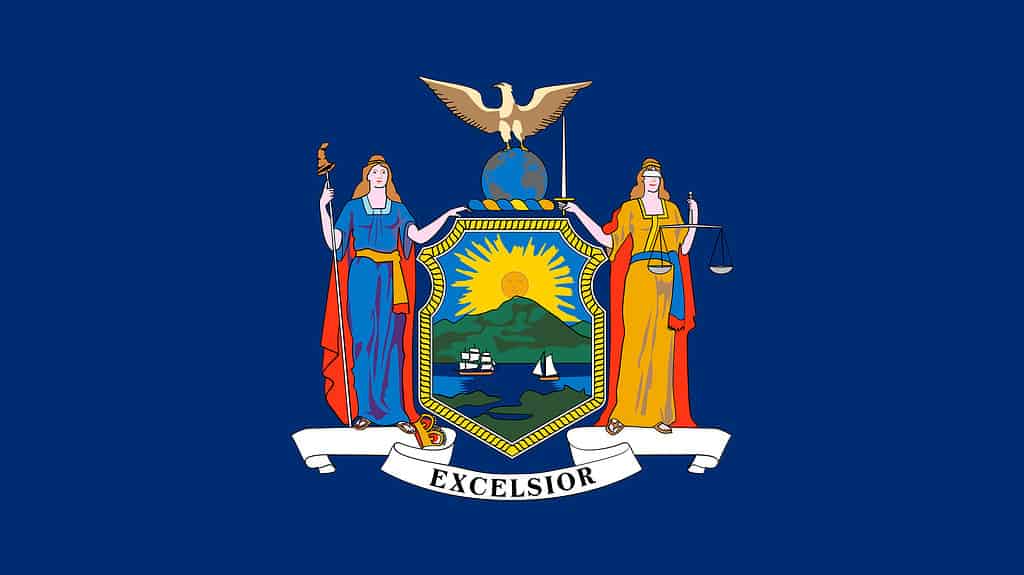
The New York state flag is only slightly modified from the original.
©iStock.com/bndart
North Carolina
North Carolina was the 12th state to join the USA in 1789. The state flag has been in use since 1885.
North Dakota
North Dakota was added to the USA in 1889 and was the 39th state. The state adopted its official flag in 1911.
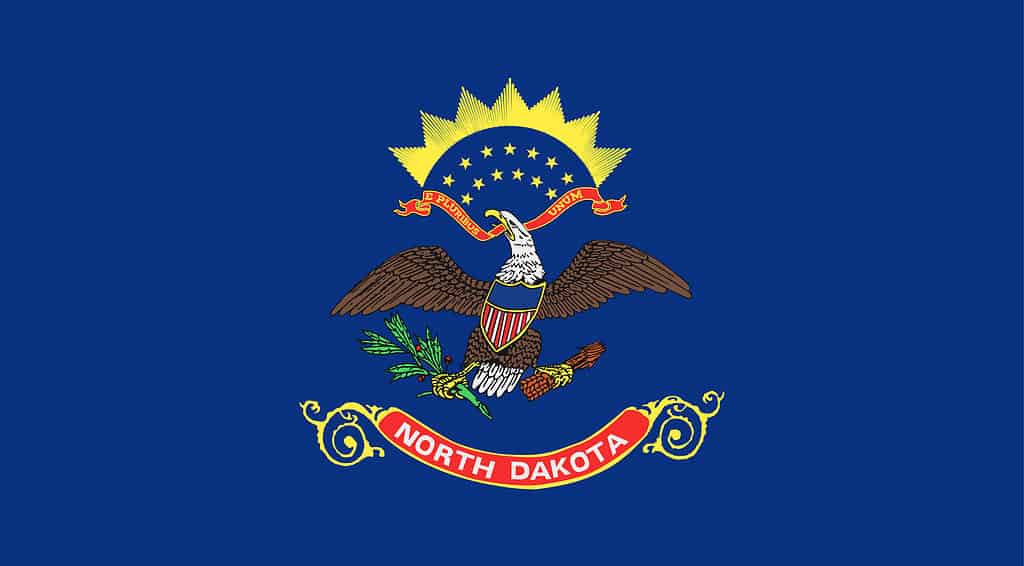
The flag of North Dakota, featuring a regal blue background and a bald eagle, was adopted in 1911.
©Comet Design/Shutterstock.com
Ohio
Ohio joined the US in 1803 and was the 17th state to be admitted. The state flag was adopted in 1902.
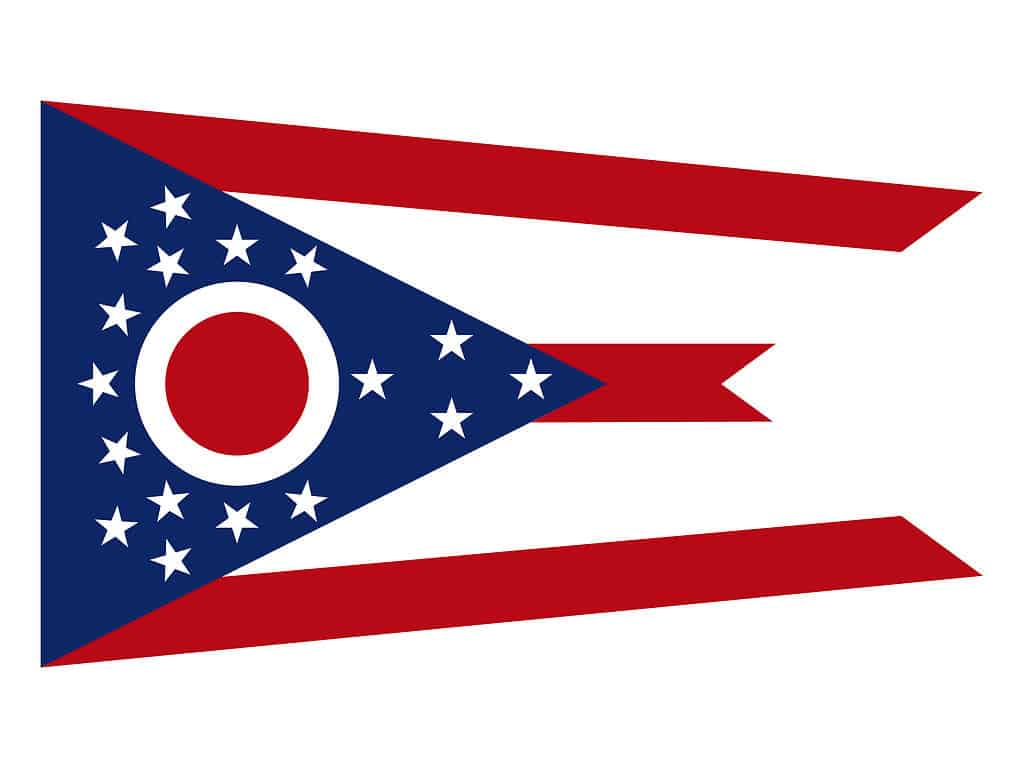
The flag of the state of Ohio varies from the traditional rectangular shape and features the patriotic red, white and blue colors.
©iStock.com/Milos Subasic
Oklahoma
Oklahoma became a US state in 1907. The official state flag was adopted in 1925.
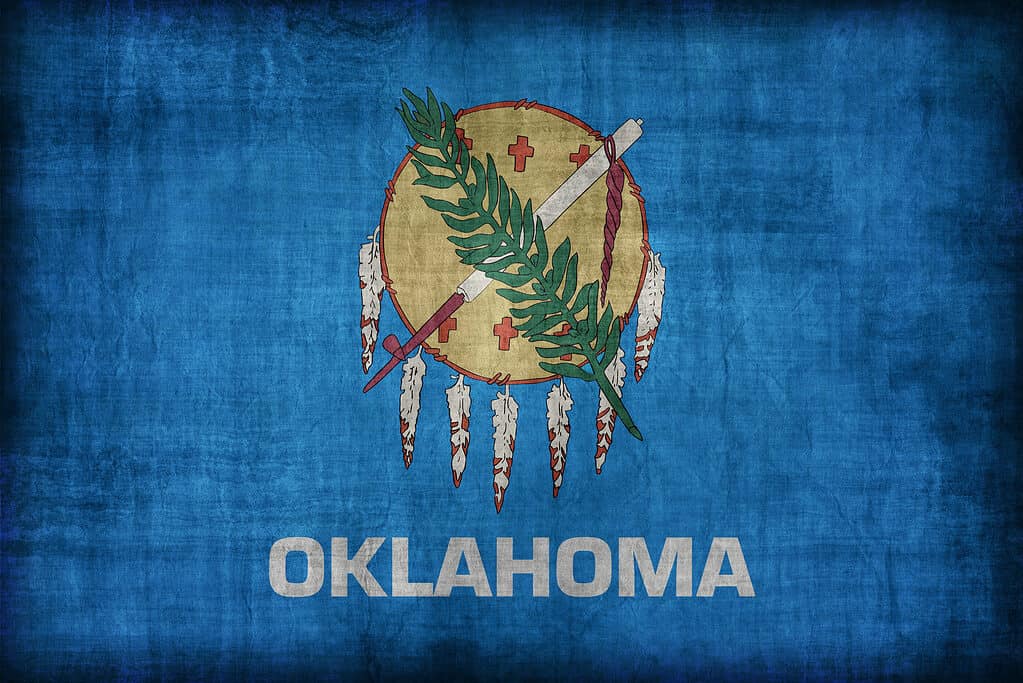
Oklahoma’s flag features an Osage
buffalo
-skin shield with seven eagle feathers.
©Wasan Ritthawon/Shutterstock.com
Oregon
In 1859, Oregon became the 33rd US state. The state flag was adopted in 1925.
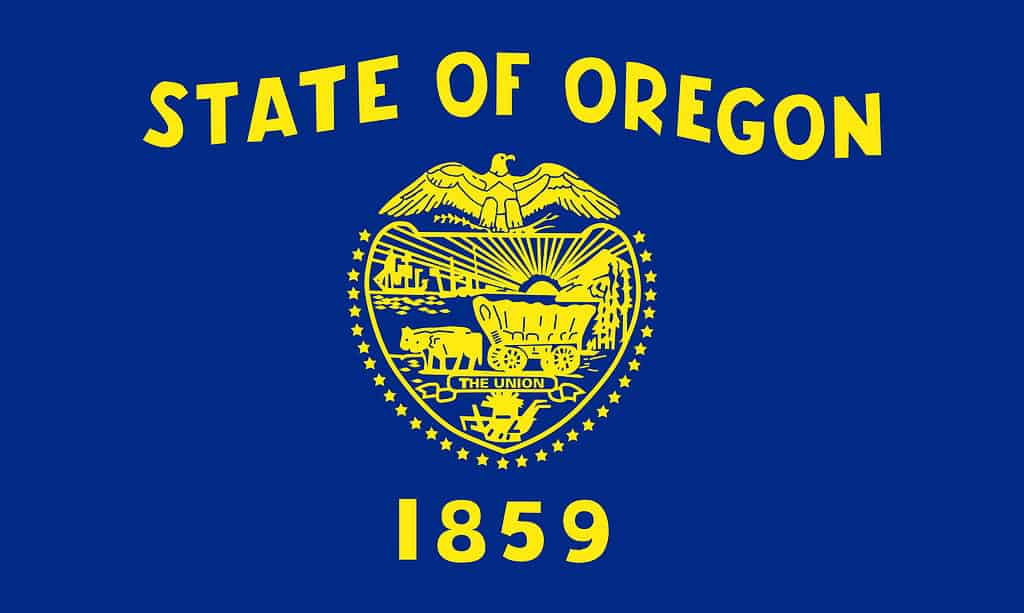
The flag of Oregon features beautifully contrasting shades of blue and yellow.
©GG Digital Arts/Shutterstock.com
Pennsylvania
Pennsylvania was the 2nd colony to ratify the constitution and become a state in 1787. The state adopted its current flag in 1907.
Rhode Island
Rhode Island was the final state of the 13 colonies to ratify the constitution. The current flag has been in use since 1897.
South Carolina
South Carolina was the 8th colony to ratify the constitution in 1788. The official flag has been in use since 1866.
South Dakota
South Dakota was the 40th state to be added to the USA in 1889. The current state flag was not adopted until 1992.
Tennessee
Tennessee was the 16th state to join the union in 1796. The current state flag has been in use since 1905.
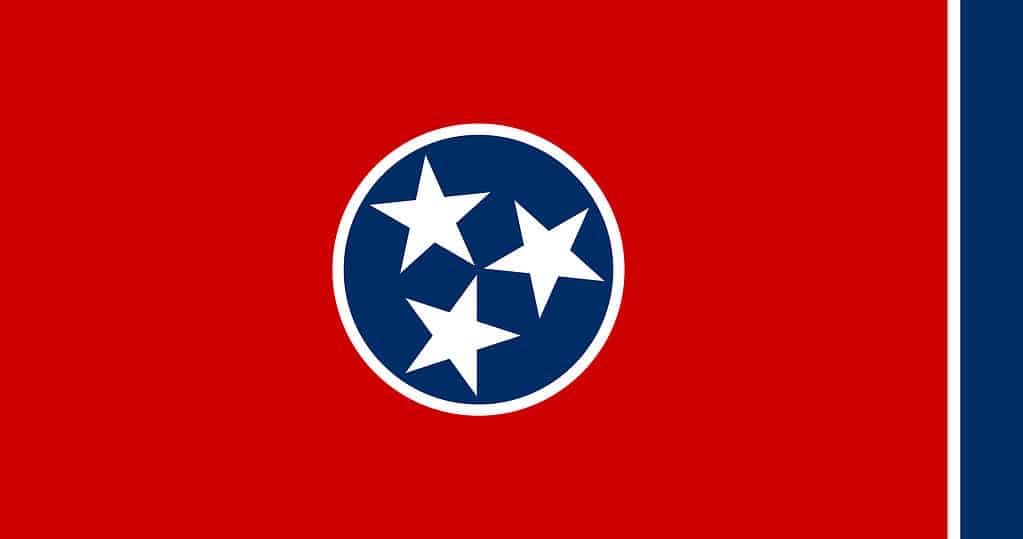
The flag of Tennessee features three white stars at its center, each of which represent a section of the state — East, Middle and West Tennessee.
©iStock.com/Kamlesh Suthar
Texas
Texas joined the USA in 1845 to become the 28th state. The flag, however, has been used since 1839 when it flew over the Republic of Texas.
Utah
Utah was the 45th state to join the US in 1896. The current flag has been used since 1922.
Vermont
Vermont was the first non-13-colony state to join the union in 1791. The state flag has been in use since 1923.
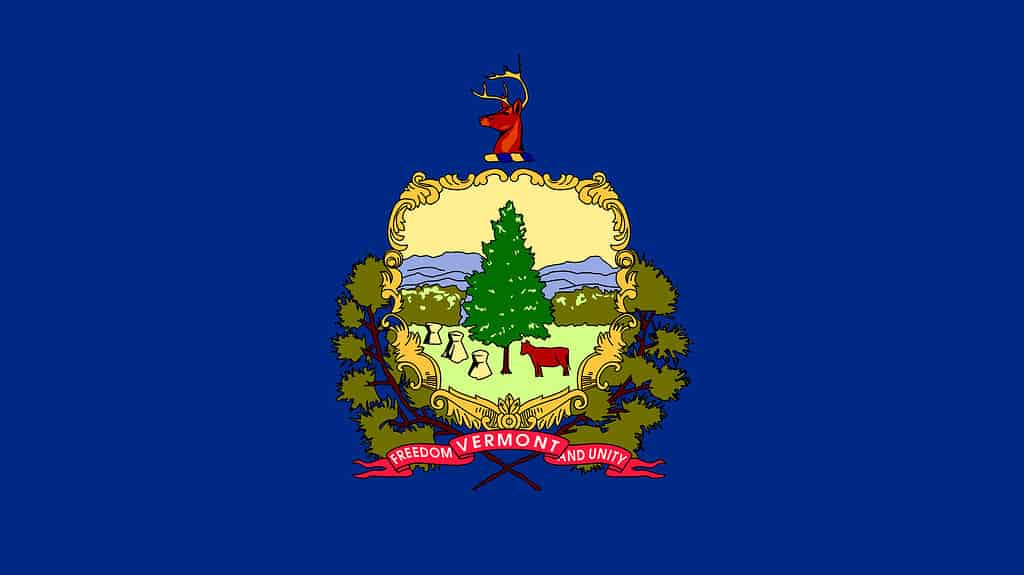
Vermont officially adopted a new state flag in 1923 with a deep blue backdrop and a coat of arms at its center.
©iStock.com/bndart
Virginia
Virginia was the 10th state to ratify the constitution in 1788. The current state flag has been used since 1912.
Washington
Washington state was the 42nd state and was added to the US in 1889. The official flag of Washington was added in 1923.
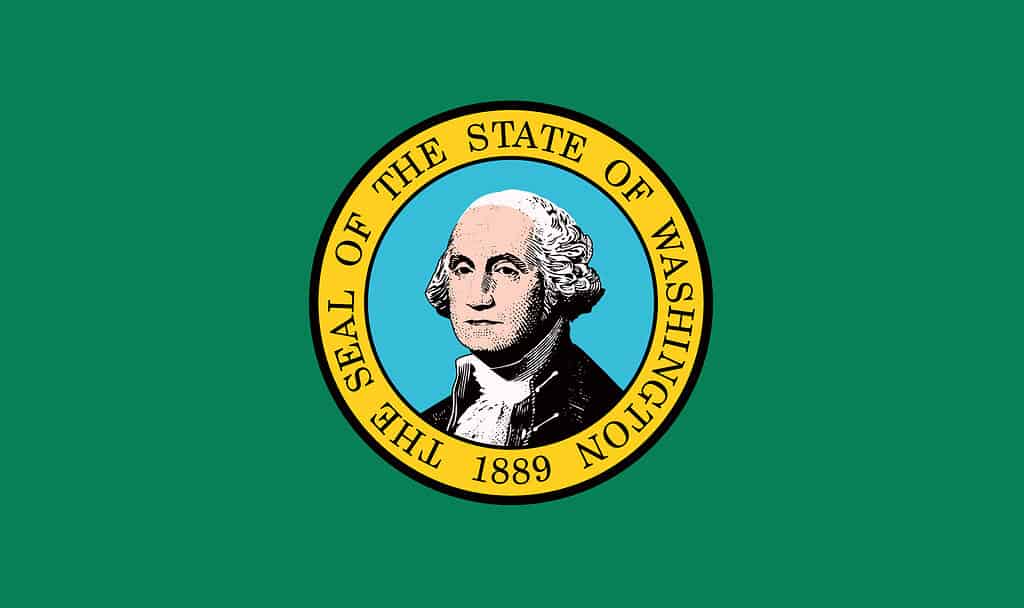
Perhaps unsurprisingly, the Washington state flag bears the likeness of George Washington.
©iStock.com/Yurchello108
West Virginia
West Virginia was formed by separating from Virginia in 1863, becoming the US’s 35th state. The current West Virginia flag has been used since 1929.
Wisconsin
In 1848, Wisconsin became the 30th state to join the USA. The current state flag has been in use since 1981.
Wyoming
Wyoming became the 44th US state in 1890. However, the official flag was adopted in 1917.
South America
Argentina
The triband flag of Argentina was first raised in 1812 during the Argentine War of Independence. In 1816, the flag was declared the national flag of a newly independent Argentina.
Bolivia
The red, yellow, and green tricolor flag of Bolivia was first adopted in 1851. As of 2009, the Wiphala (flag of the indigenous people) holds the status of dual flag.
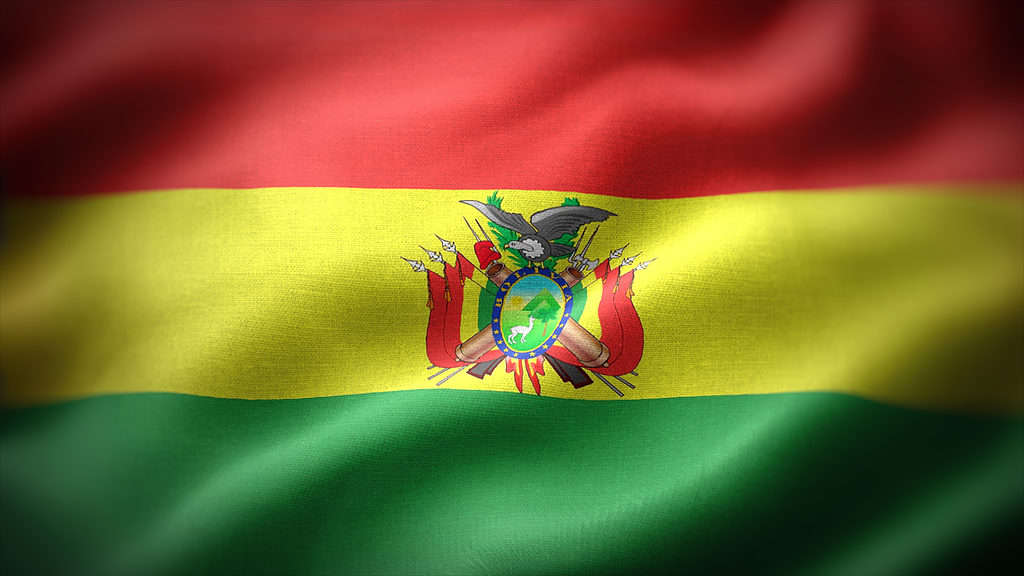
The flag of Bolivia features red, gold and green stripes with an emblem at its center.
©Tatohra/Shutterstock.com
Brazil
Brazil gained independence from Portugal in 1822. The Brazilian flag as we know it was first adopted in 1889, just days after the country transitioned into a republic. The stars on the flag represent the different states.
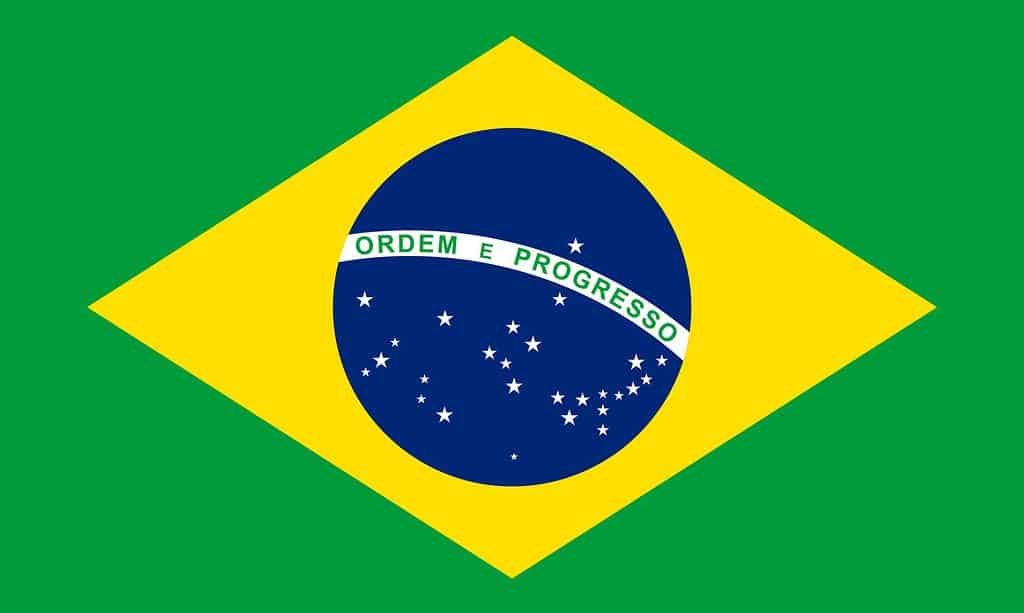
The flag of Brazil consists of a vivid green field which features a yellow diamond with a blue globe in it.
©iStock.com/VanReeel
Chile
The Chilean flag was made official in 1817 and was first raised during the Pledge of Independence ceremony on February 12, 1818. The flag looks very similar to the Texas flag.
Colombia
The current Colombian tricolor flag was adopted in 1861. This flag symbolizes the country’s independence from Spain in 1810. The flag is very similar to the flags of Ecuador and Venezuela, which were all once the same country (Gran Colombia).
Ecuador
The Ecuador flag was made official in 1860, and the coat of arms was added in 1900. Ecuador gained independence from Spain in 1822, and several versions of the flag have flown since then.
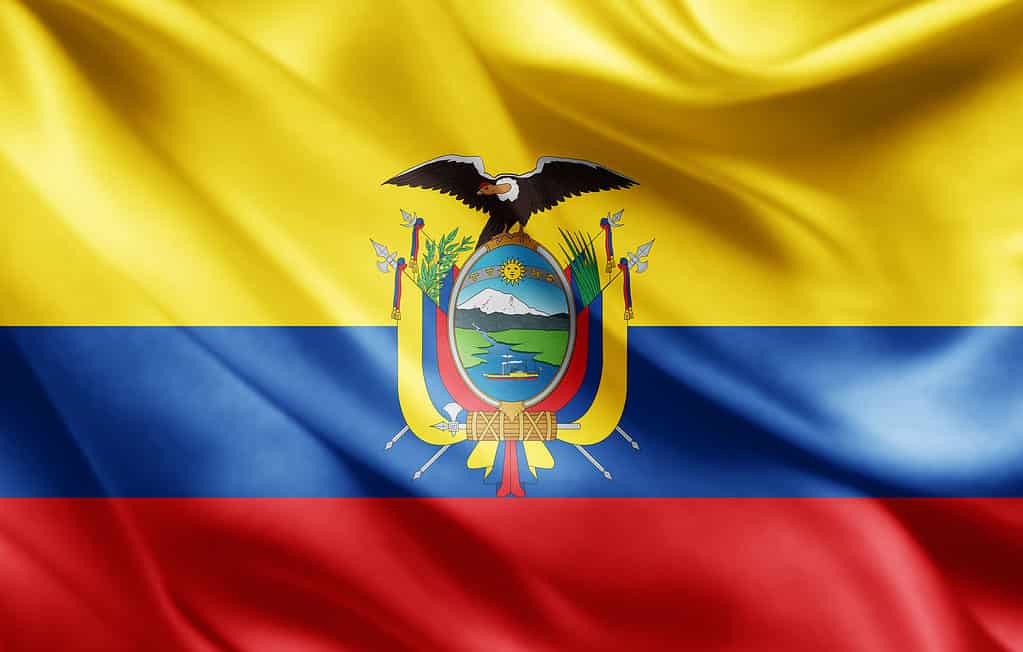
The flag of Ecuador features stripes in gold, blue and red hues.
©patrice6000/Shutterstock.com
Guyana
The flag of Guyana, which is also called the Golden Arrowhead, has flown since 1966, when the country gained independence from the UK. The colors symbolize zeal, mineral wealth, agriculture, endurance, and water.
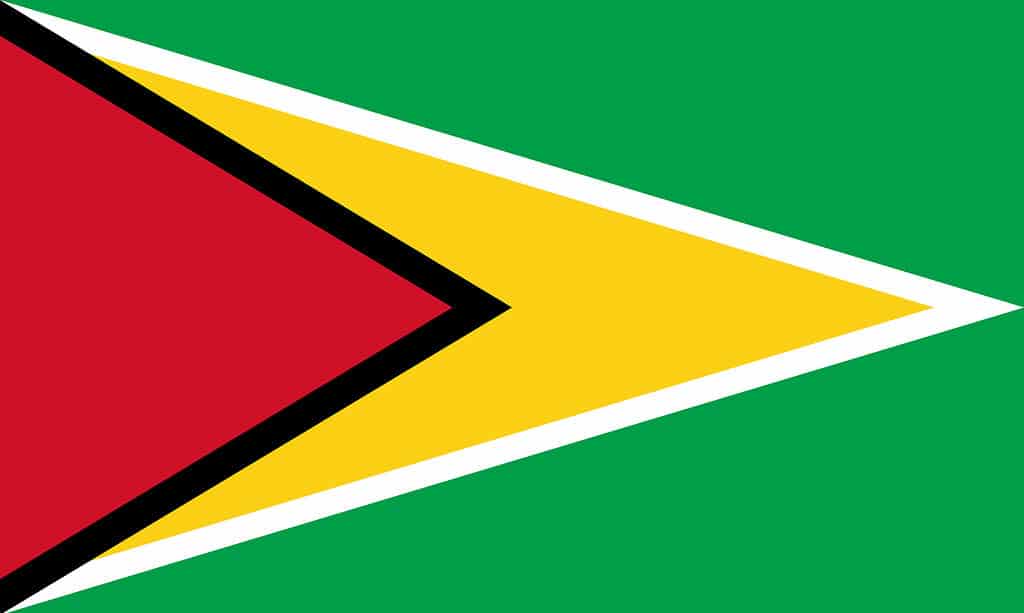
The flag of Guyana is filled with colors that represent the country’s bright future and pays tribute to its people and resources.
©iStock.com/de-nue-pic
Paraguay
The Paraguayan flag was first adopted in 1842, and its red, white, and blue tricolor design is influenced by the French flag. Paraguay gained independence in 1811.
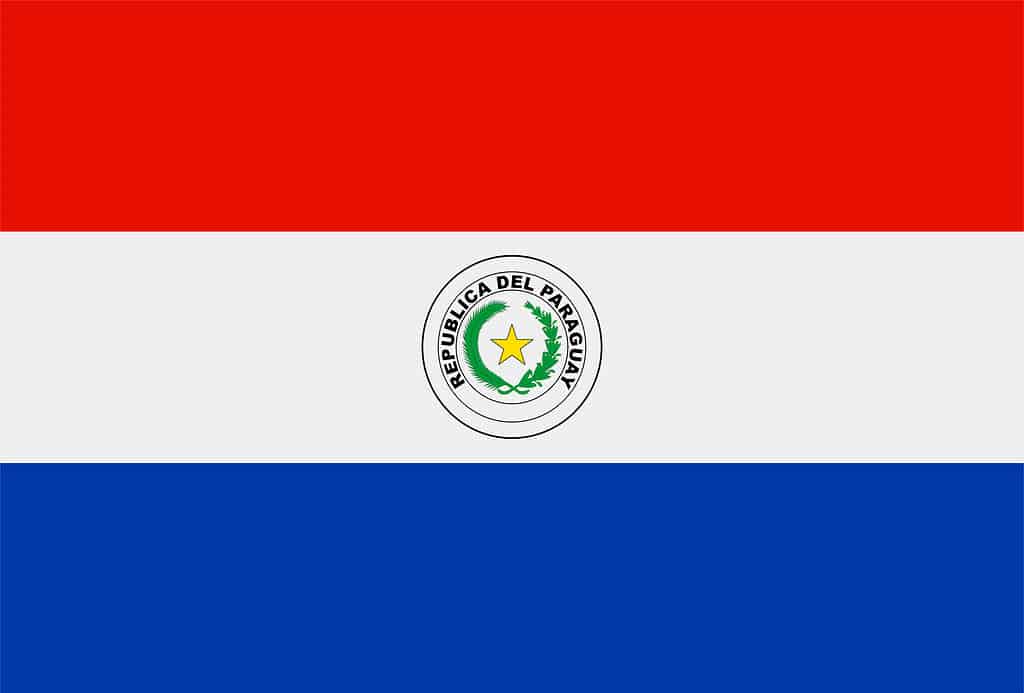
The flag of Paraguay features red, white and blue stripes with an emblem at its center.
©MaciejForyszewski/Shutterstock.com
Peru
After Peru gained independence in 1821, the flag of Peru was adopted as the national flag in 1824. The flag was modified in 1950. The coat of arms in the center of the flag has a cinchona officinalis tree, a vicuna, and a cornucopia.
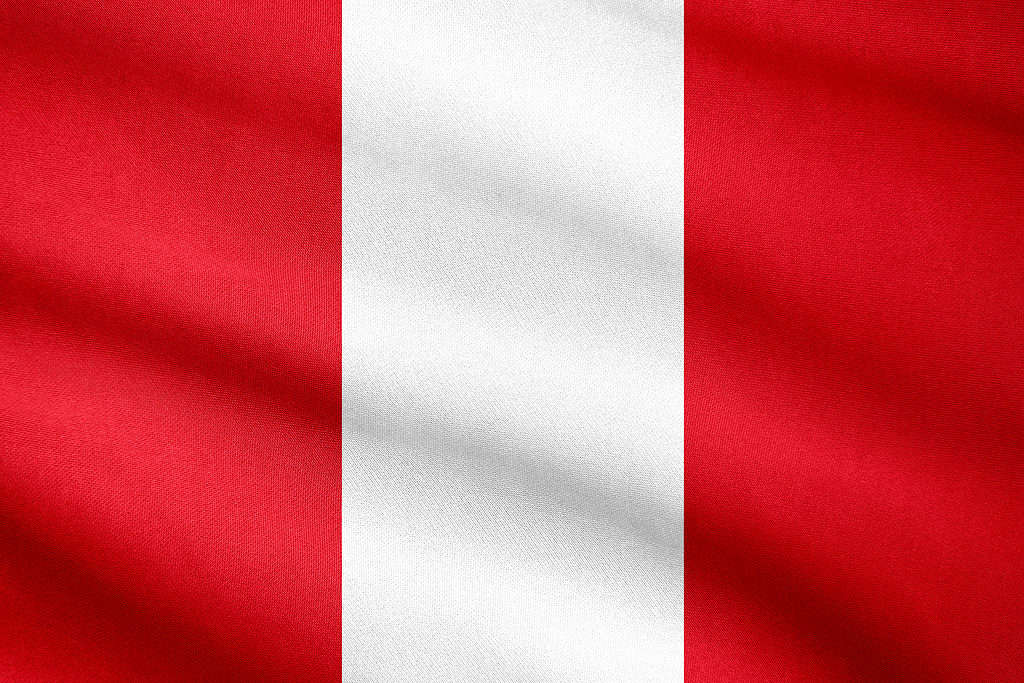
The current version of the national flag of Peru was adopted in 1950.
©MriMan/Shutterstock.com
Suriname
The flag of Suriname became the official flag of the country in 1975 when the country gained independence from the Netherlands. The golden yellow star represents a golden future.
Uruguay
The flag of Uruguay is 9 equal horizontal stripes with a canton. This flag was first adopted in 1828 when Uruguay gained independence, with the final design confirmed in 1830.
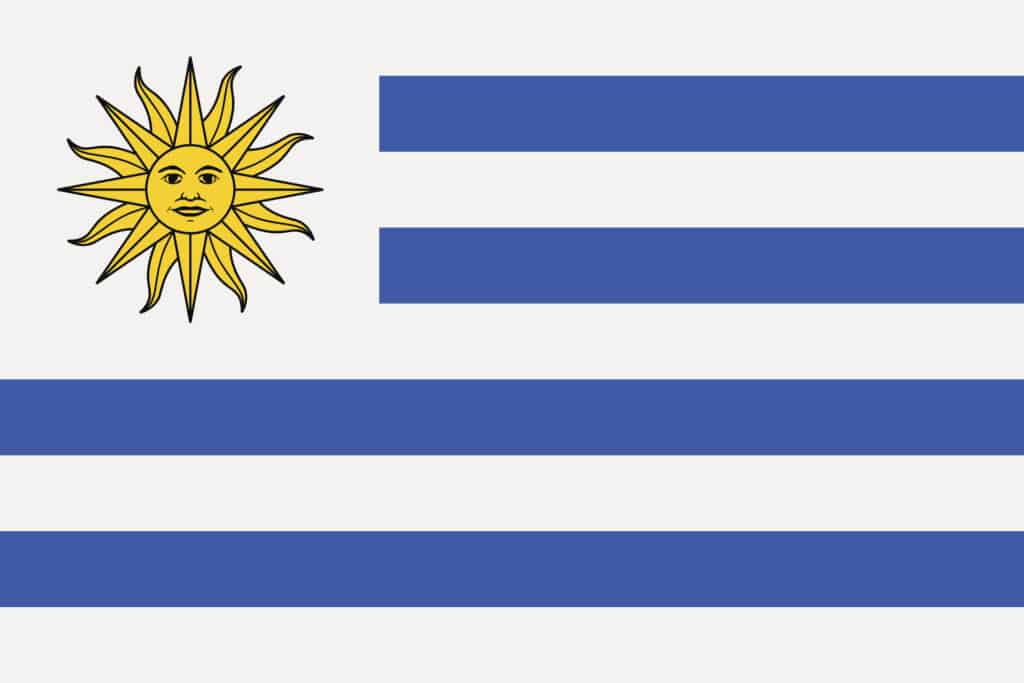
The flag of Uruguay was inspired by the U.S. flag.
©iStock.com/-Panya-
Venezuela
The flag of Venezuela, with its eight stars, was adopted in 2006. The original design of the tricolor was first introduced in 1811 when it declared independence.
Asia
Afghanistan
Afghanistan has a long history of war and invasion. The nation’s current flag was adopted in 2021 after the Taliban took over the country. This flag also flew over the country between 1997 and 2001.
Armenia
Armenia was part of the Soviet Union between 1918 and 1991. The national flag was created in 1918 but was reintroduced after independence in 1991.
Azerbaijan
Azerbaijan was part of the Soviet Union until 1991, when the USSR broke apart. In 1991, the nation declared independence and raised the official flag of the Azerbaijan Democratic Republic (1918-1920).
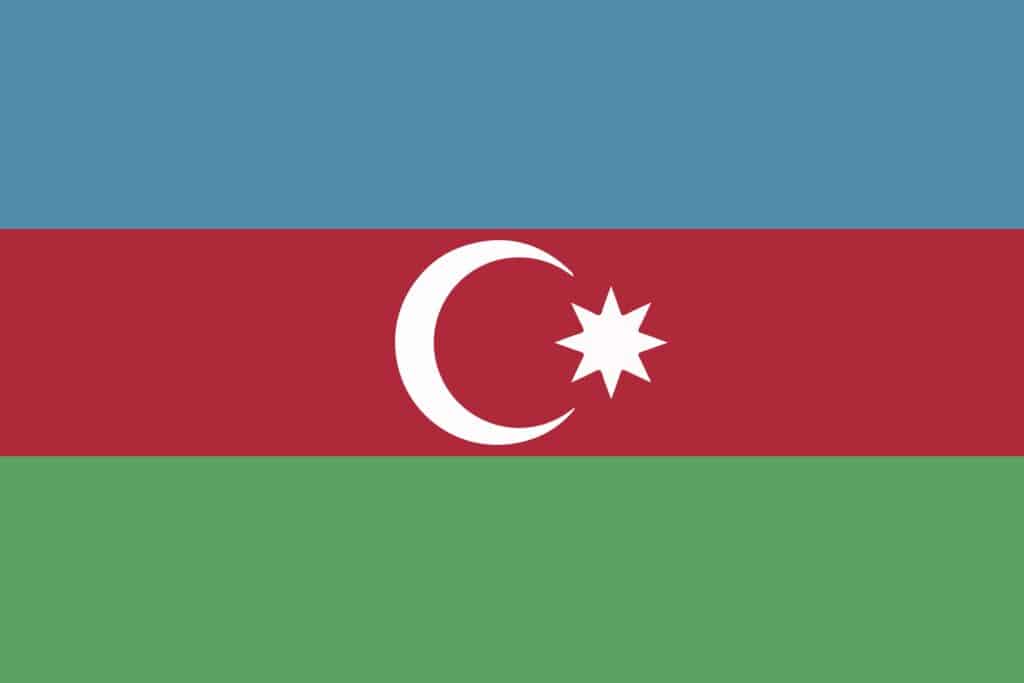
The flag of Azerbaijan symbolizes national pride, heritage, independence, and identity.
©Pavlo Lys/Shutterstock.com
Bahrain
Bahrain became an independent nation in 1971. In the 1820s, Bahrain had begun using a similar flag, but the current serrated version of the bicolor was adopted in 2002.
Bangladesh
India and Pakistan were partitioned and gained independence from the UK in 1947. Until 1971, Bangladesh was part of Pakistan. The current official flag of Bangladesh was adopted in 1972.
Bhutan
Bhutan has been an independent nation for centuries and was never colonized. The country developed its first flag in the 1940s, eventually becoming the official one in 1969.
Brunei
Brunei was a British protectorate until 1984. However, the country’s official flag has been used since 1959. The ensign symbolizes a commitment to Islam and the monarchy.
Myanmar (Burma)
Myanmar was part of the British empire until 1948. The current flag was not adopted until 2010, when there was a regime change in the country and the name was also changed from Burma to Myanmar.
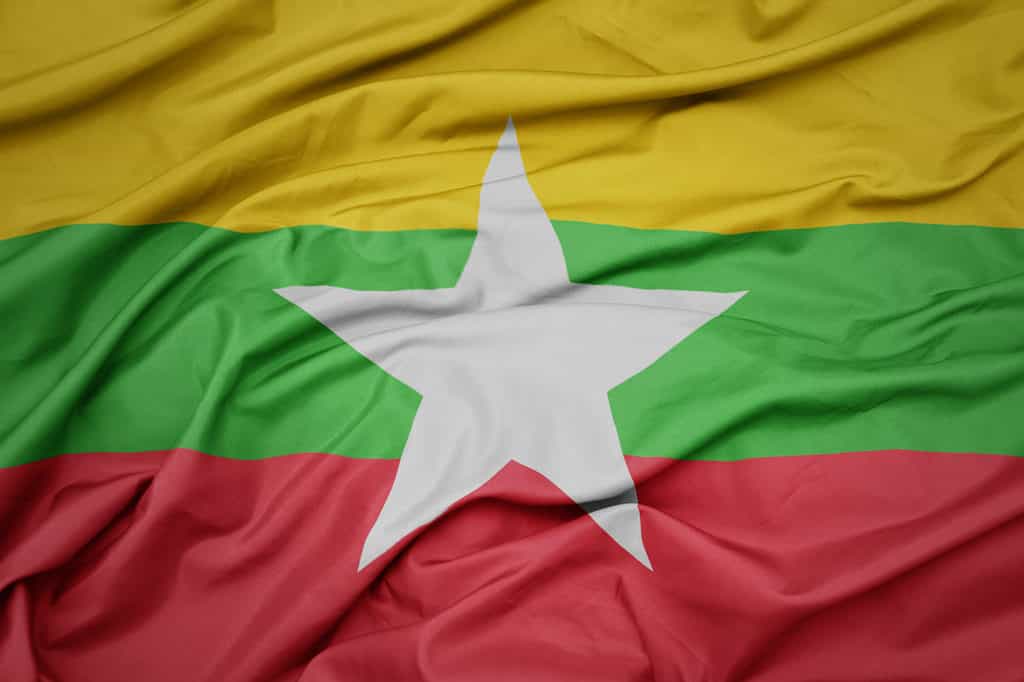
The flag of Myanmar features gold, green and red stripes with a giant white star in its center.
©esfera/Shutterstock.com
Cambodia
Cambodia was part of French Indochina until 1953. The current flag has been around since 1948 but was not used during the Khmer Rouge regime and was reinstated in 1993.
China
China is one of the world’s most ancient cultures, with dynasties dating back thousands of years. The current flag of China was adopted when the People’s Republic of China was formed in 1949.
India
India gained independence from the UK in 1947 after nearly 100 years. The official flag was adopted that same year. The wheel in the center has 24 spokes and symbolizes life principles and each hour of the day.
Indonesia
Indonesia declared independence from the Netherlands in 1945. The flag was officially raised when the Dutch recognized Indonesian independence in 1949.
Iran
Iran’s history dates back thousands of years. The current flag is a slight adjustment that has been used since 1907. In 1980, the lion and the sun were replaced by the emblem of the new Islamic Republic.
Iraq
Iraq became a British colony after the Ottoman Empire was partitioned. In 1958, Iraq gained independence, and in 1963, the official flag was raised.
Israel
Israel became a nation in 1948 after the international community recommended that an independent Jewish state be created. The flag was first used by zionists in 1897 but became the official flag in 1948.
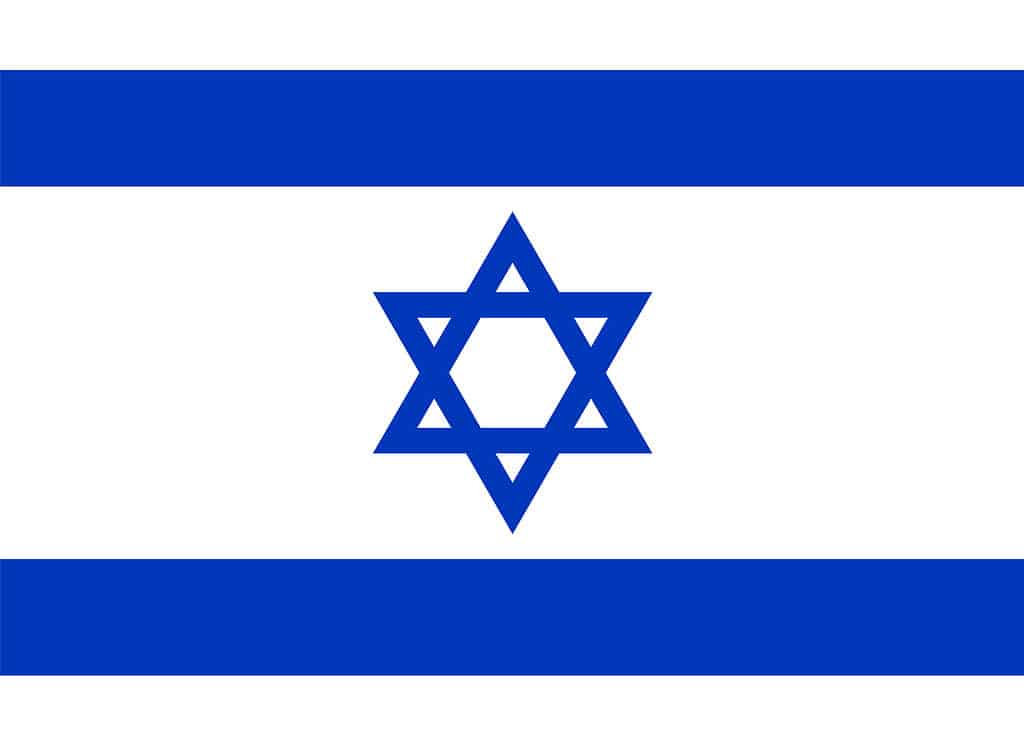
The flag of Israel features blue and white stripes with a blue Star of David at its center.
©iStock.com/Muhammad Fadlan
Japan
Japan is one of the few countries in the world that was never colonized. The nation was an expansive empire until its defeat in 1945. The current flag has been the official Japanese flag since 1870.
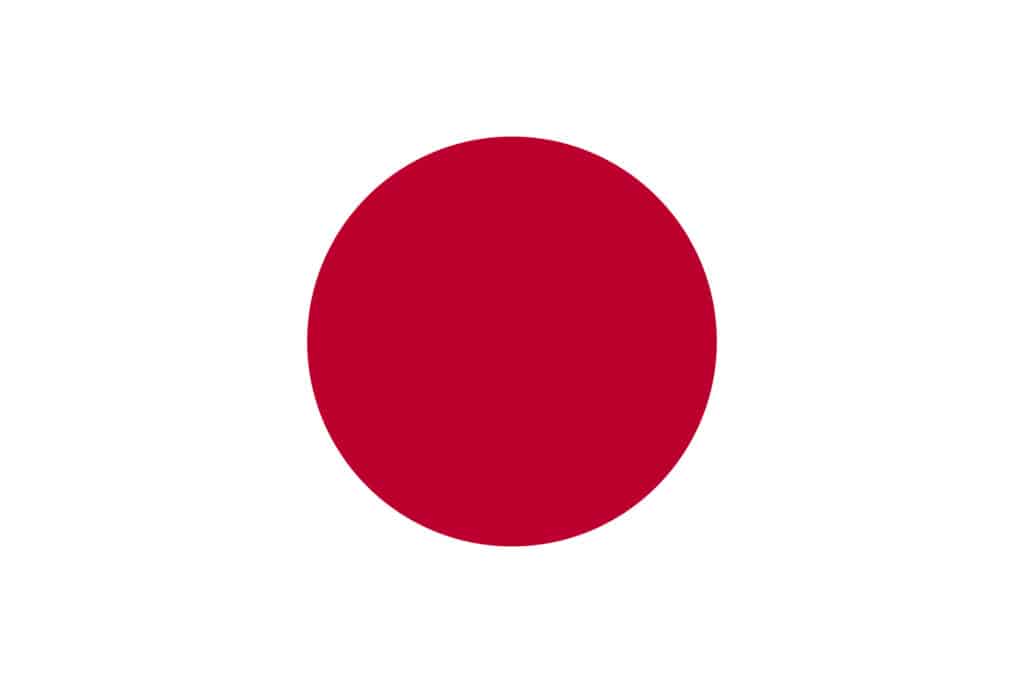
The flag of Japan has a red circle in the center of a white background. Japan is known as the “land of the rising sun,” which is what the red circle represents.
©a_b_t/Shutterstock.com
Jordan
The Jordan flag dates back to the Arab revolt against the Ottomans during WWI. The flag has been officially used since 1928. Jordan gained independence from the UK in 1949.
Kazakhstan
Kazakhstan was part of the Soviet Union until 1991. The official flag was designed and adopted in 1992 following independence.
Kuwait
Kuwait gained independence from the UK in 1961, becoming independent. That same year the nation hoisted the official Kuwait flag.
Kyrgyzstan
Kyrgyzstan became an independent nation in 1991 following the collapse of the USSR. In 1992 the country designed and raised the official flag of Kyrgyzstan. The 40 rays of the sun in the center represent the tribes that fought against the mongols.
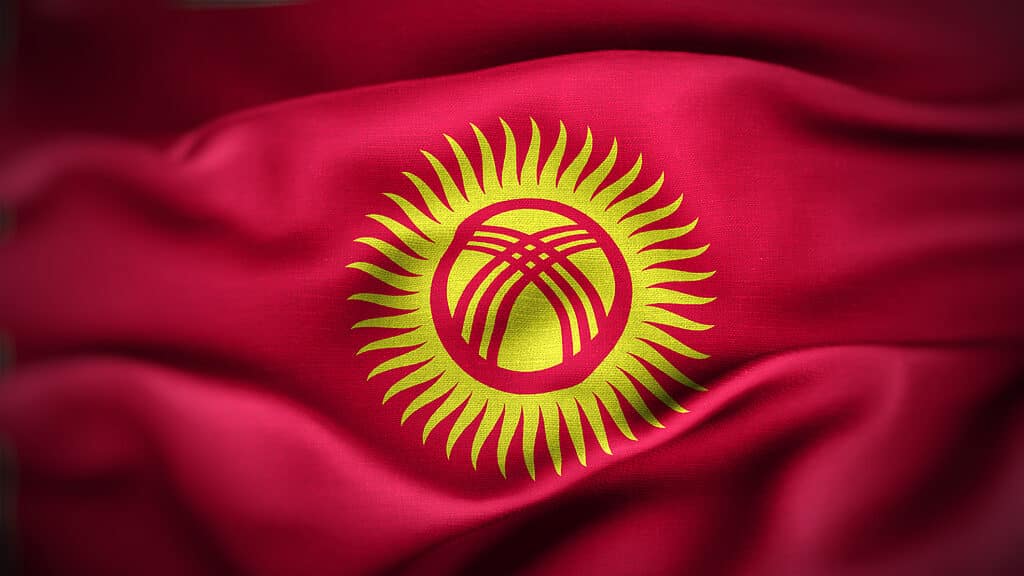
The Kyrgyzstan flag features a bold red background and a gold starburst at its center.
©Tatohra/Shutterstock.com
Laos
In 1953, Laos gained independence when French Indochina broke apart. The Laotion flag was adopted after WWII and became the official flag in 1975.
Lebanon
Lebanon was under French control between 1920 and 1946. During the revolution against the French in 1943, the Lebanese adopted the official flag of the nation.
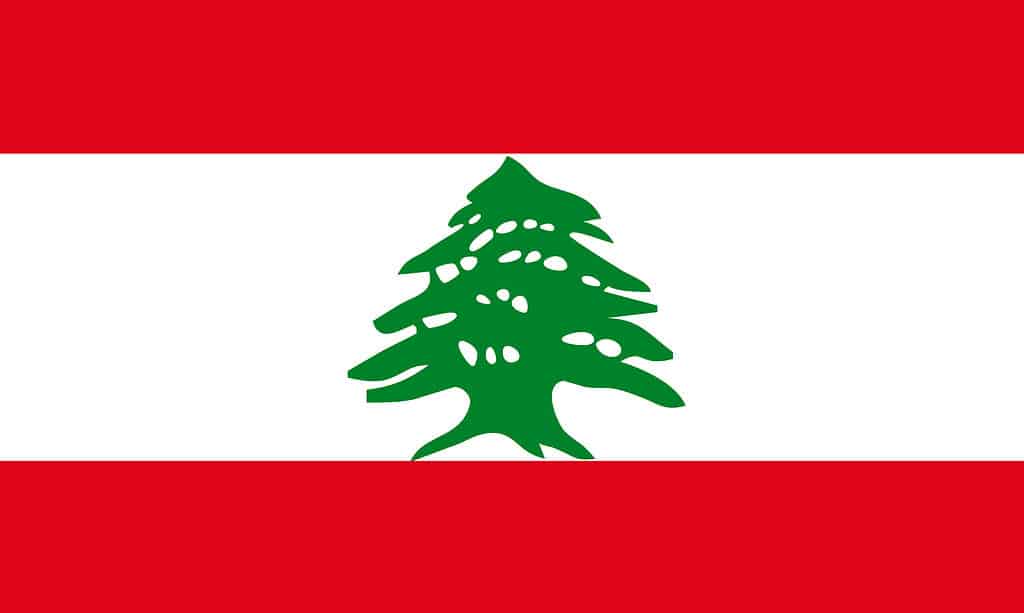
The flag of Lebanon consists of three horizontal bands of red, white, and red, with a green cedar tree in the center of the white band.
©iStock.com/flowgraph
Malaysia
Malaysia gained independence from the United Kingdom in 1957. The original flag was adopted in 1950, and in 1963, it was changed to include 14 stripes that symbolize the different regions of the country.
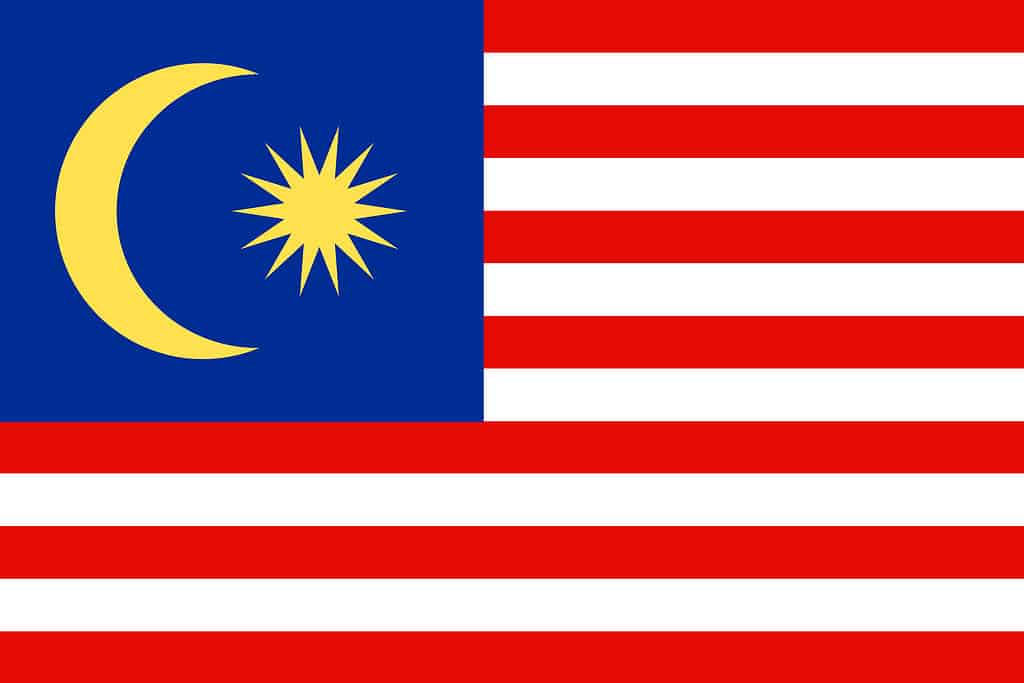
The flag of Malaysia pays tribute to the country’s leaders, its religion and symbolizes unity and cooperation between its states.
©iStock.com/Chanakarn Phinakan
Maldives
The Maldives declared independence from the UK in 1965. That same year the current flag was adopted. That flag contains a crescent moon, symbolizing a commitment to Islam.
Mongolia
Mongolia was part of the Qing dynasty until 1911, when it became an independent nation. The official flag of Mongolia was adopted in 1945.
Nepal
Nepal was never colonized and has remained autonomous throughout its history. The flag has mostly stayed the same since the 19th century. The symbols of the flag represent the 2 major religions, Hinduism and Buddhism.
North Korea
Korea was partitioned after the fall of the Japanese Empire in 1945. The USSR took control, and North Korea became communist. The North Korean flag was adopted in 1948.
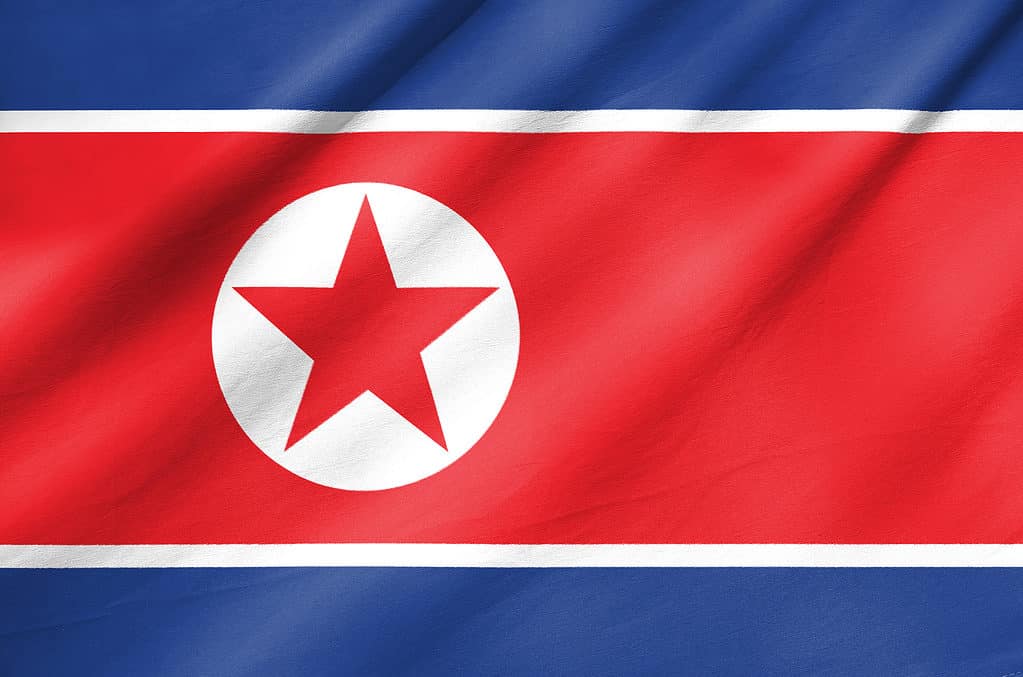
The flag of North Korea has the same colors as the American flag, though the country is not a democracy.
©Naypong Studio/Shutterstock.com
Oman
Oman has been independent since the 1600s. The nation has been under the rule of Sultans for hundreds of years. The current flag was adopted in 1970.
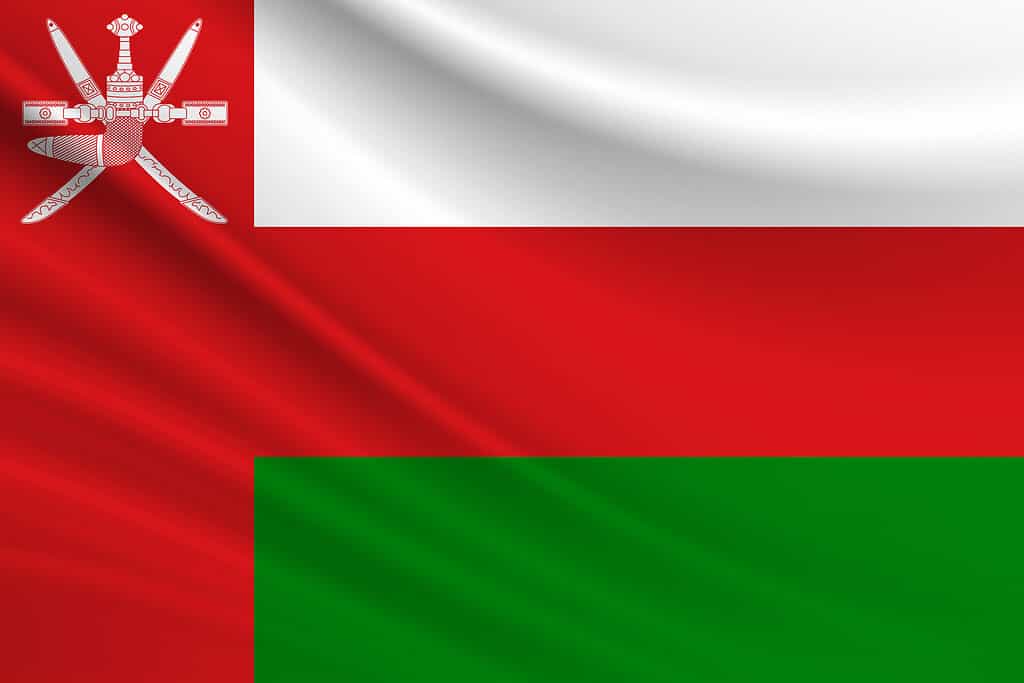
The flag of Oman is red, green, and white.
©Faievych Vasyl/Shutterstock.com
Pakistan
The UK Partitioned India and Pakistan in 1947, forming two separate states. That same year Pakistan adopted its official flag and began to self-govern. The green color and crescent moon and star represent the Muslim majority in Pakistan.
Philippines
The Philippines was colonized by Spain, followed by the USA until 1946, when it was granted independence. The official flag was first designed in 1898 and is now the current flag.
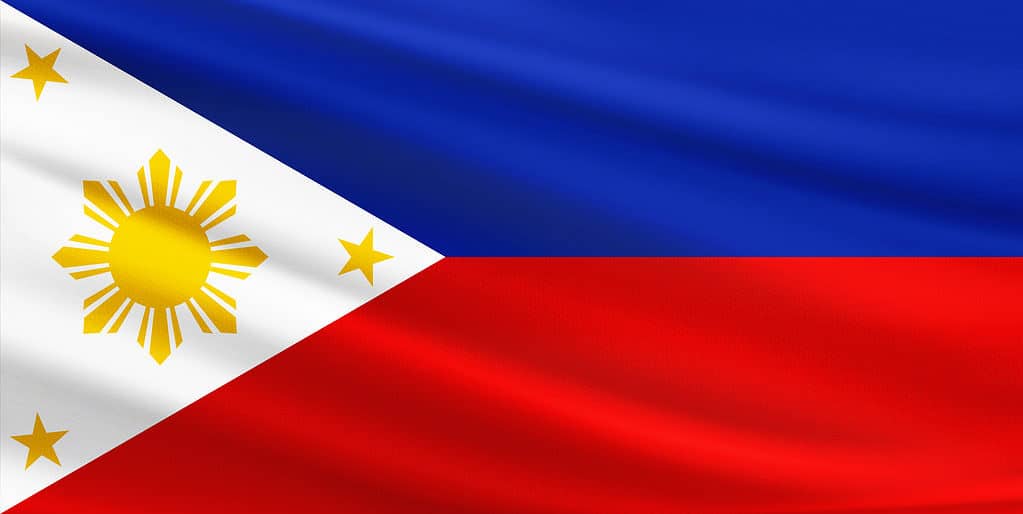
The flag of the Philippines is red and blue with small yellow stars on a white triangle.
©Osman Bugra Nuvasil/Shutterstock.com
Qatar
Qatar gained independence from the UK in 1971. The official flag was raised that year. However, it was very similar to earlier flags used from 1936 to 1971.
Saudi Arabia
Saudi Arabia was originally several emirates until it was unified under a single kingdom in 1932. The official flag was first used in the 18th century and was re-adopted in 1973.
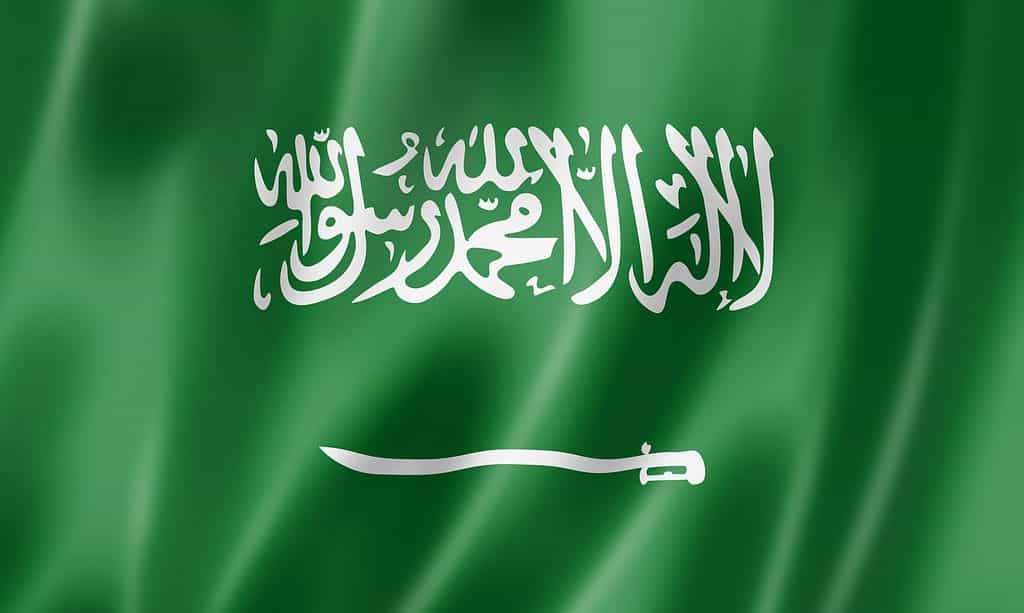
The Saudi flag features a white sword and text on a solid green background
©iStock.com/daboost
Singapore
Singapore was part of the UK until 1959, when it became a part of Malaysia. However, in 1965, Malaysia separated from Singapore, becoming a self-governing nation. The flag has been used since 1959.
South Korea
Japan colonized Korea until after WWII. In 1948, the Republic of Korea was established, and Korea became an independent nation. The official flag dates back to 1883 and was re-established in 1949.
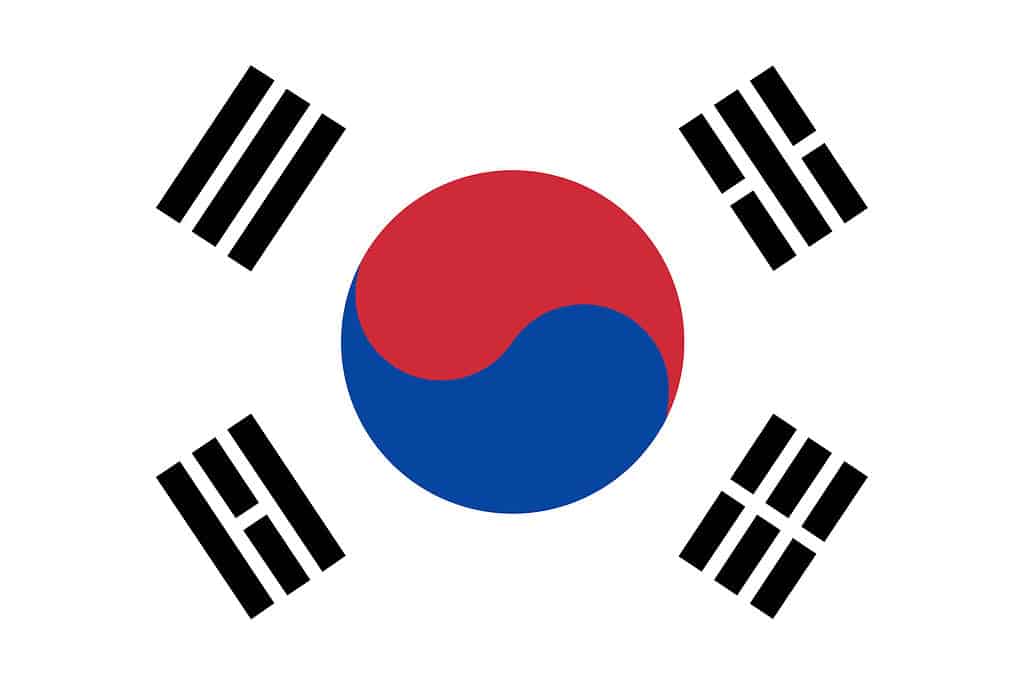
The flag of South Korea includes various symbols of Korean history.
©Pavlo Lys/Shutterstock.com
Sri Lanka
Sri Lanka gained independence from the UK in 1948. The current flag dates back to 1972 but is very similar to the original flag in 1948. The flag represents the many different ethnicities and religions in the country.
Syria
Syria gained independence from France in 1946. The country has had multiple flags since independence, with the current in place since 1980. The flag was once the flag of the United Arab Republic.
Tajikistan
Tajikistan gained independence from the USSR in 1991. In 1992, they raised the official Tajik flag over the country. The seven stars are incorporated because of the importance of the number seven in Tajik and Persian culture.
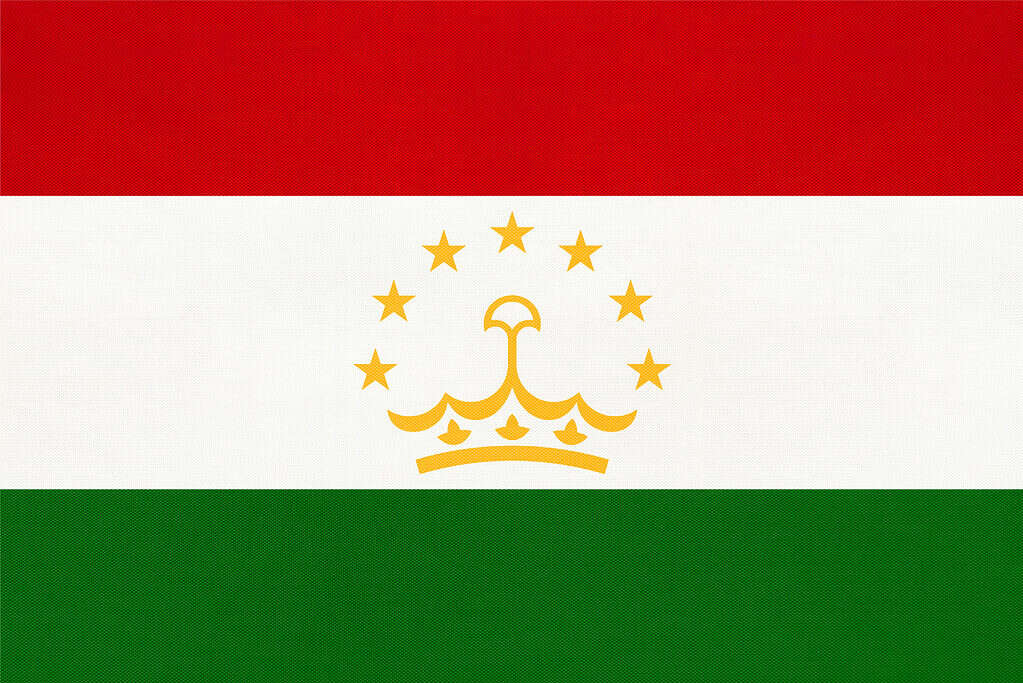
Tajikistan’s flag has the pan-Slavic colors of red, green, and white
©Anastassia Guseva/Shutterstock.com
Thailand
Thailand is one of the few countries never colonized by European powers. The Kingdom’s official flag was adopted in 1917. The flag was designed the same year Thailand joined the Allies in WWI, and the colors match those of Russia, France, the USA, and the UK.
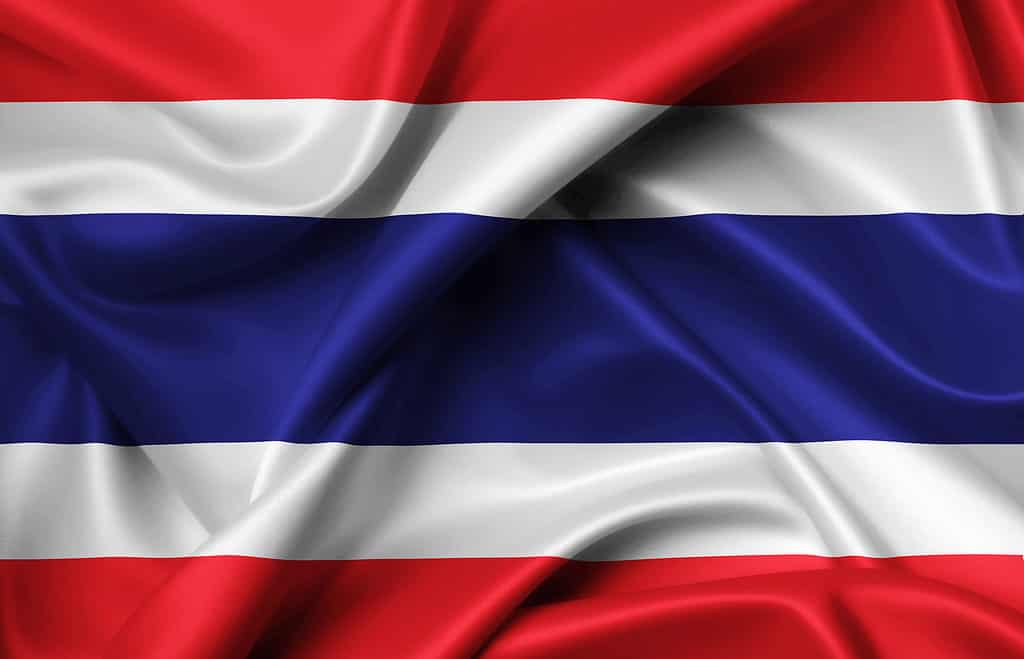
The flag of Thailand features stripes in red, white and blue.
©IznoDesign/Shutterstock.com
Timor-Leste
Timor-Leste is one of the newest independent nations, having only gained autonomy from Indonesia in 2002. The flag was first used in 1975 but wasn’t made official until 2002.
Turkey
Turkey was once the head of the Ottoman Empire. But after WWI, it became a republic. The current flag is essentially the same as the Ottoman flag that has been used since 1844.
Turkmenistan
Turkmenistan gained independence from the USSR in 1991. That same year, it developed its flag. The stars of the flag represent the 5 regions of the country.
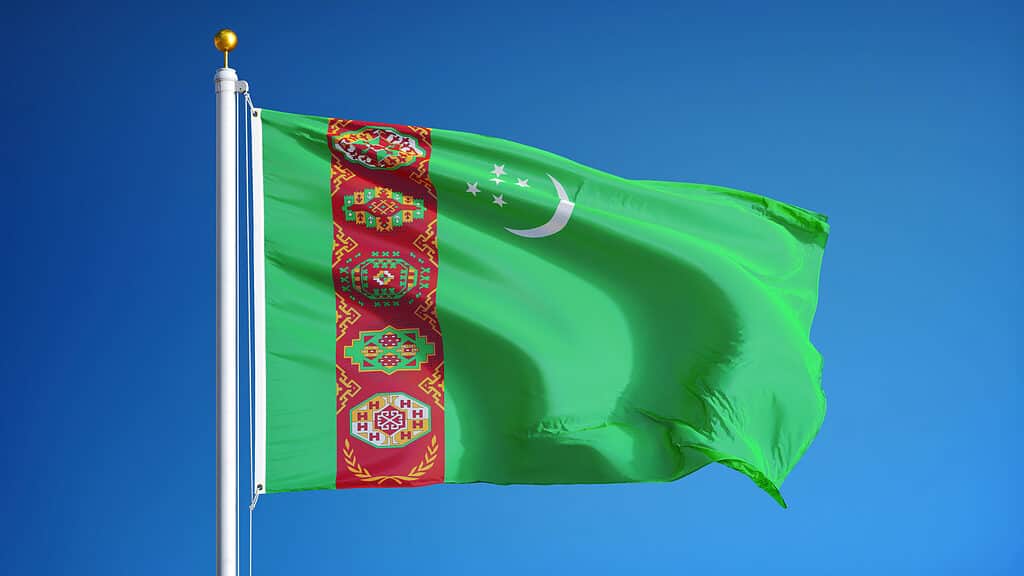
The flag of Turkmenistan is intricate and intriguing.
©railway fx/Shutterstock.com
United Arab Emirates
Prior to 1971, the UAE was a collection of various emirates, many of which were part of the UK. The tricolor flag was adopted in 1971.
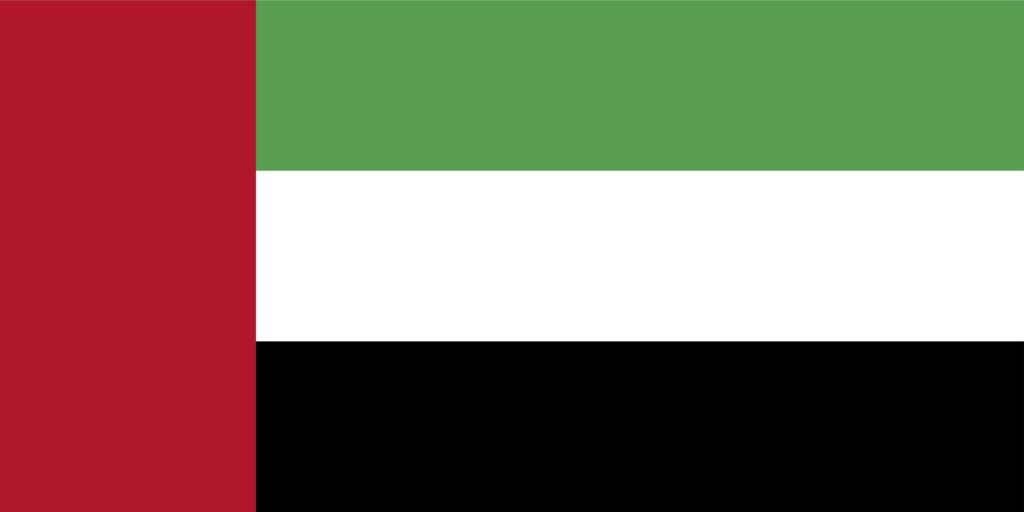
The flag of the United Arab Emirates features a vertical red stripe beside three stripes in green, white and black.
©CreativeBee Maroc/Shutterstock.com
Uzbekistan
In 1991, Uzbekistan hoisted its own flag after declaring independence from the Soviet Union that same year. The blue, white, red, and green colors represent the blue sky, peace, good harvests, and life.
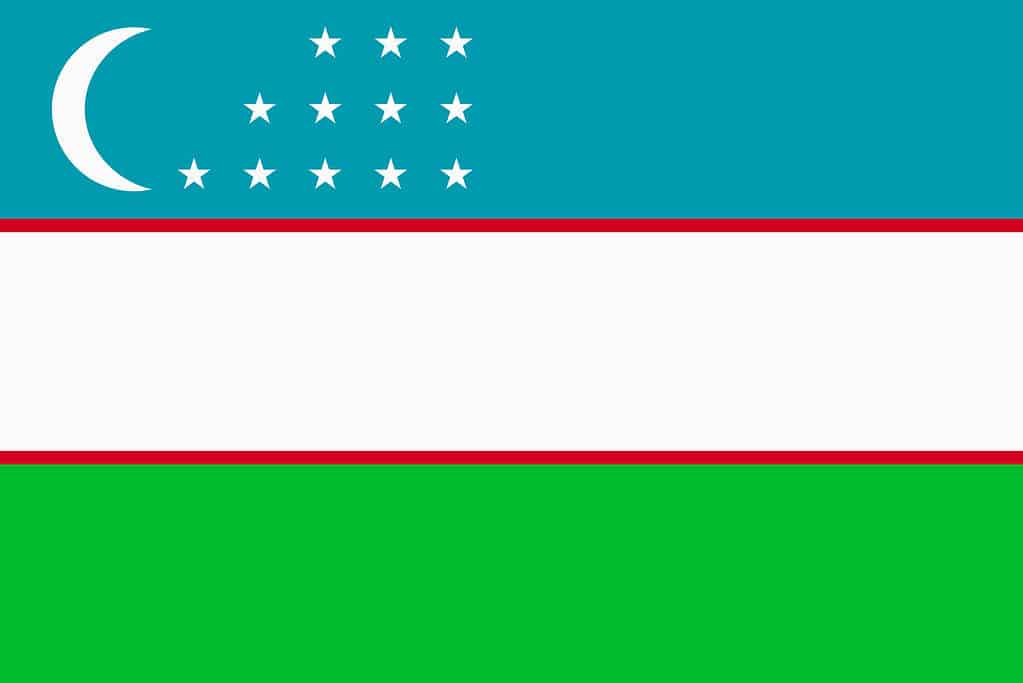
The flag of Uzbekistan features cool colors of green and aqua along with red and white.
©iStock.com/Ivan Burchak
Vietnam
Vietnam declared independence from France in 1945 and was partitioned into North and South Vietnam in 1954. The flag was first adopted in 1945 and was flown over North Vietnam until reunification in 1976.
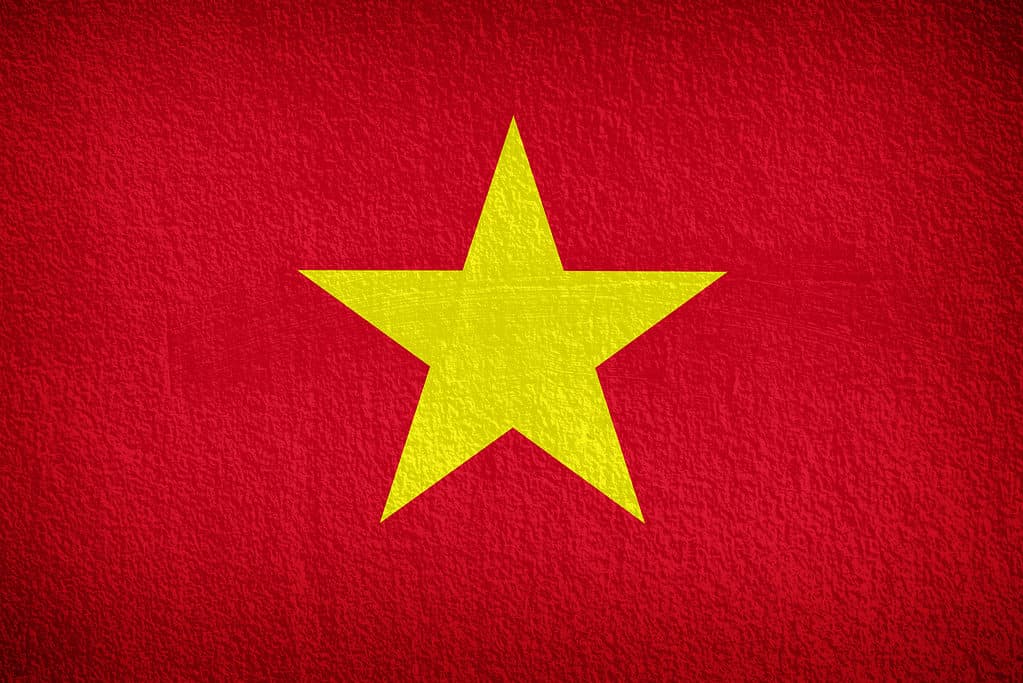
The Vietnam flag is a red background with a large five-point yellow star.
©Paisan Changhirun/Shutterstock.com
Yemen
Until 1990, Yemen was divided into North and South Yemen. However, the country was reunified and now flies the current flag over the entire country. The flag shares many similarities with Egypt, Syria, and Iraq.
Europe
Albania
The flag of Albania as we know it was standardized in 2002, but it was first raised in 1912 when the country gained independence from the Ottoman Empire.
Andorra
Andorra gained independence from France in 1814, and the historical flag was used until 1866, after which the blue, yellow, and red tricolor was adopted.
Austria
The Austrian flag was first flown in 1230, making it one of the oldest national symbols still in use. This flag reappeared in 1945 and has been the national flag ever since.
Belarus
The flag of Belarus was first used in 1951 when the country was still a republic of the Soviet Union. The Belarusian flag as we know it today was introduced in 2012.
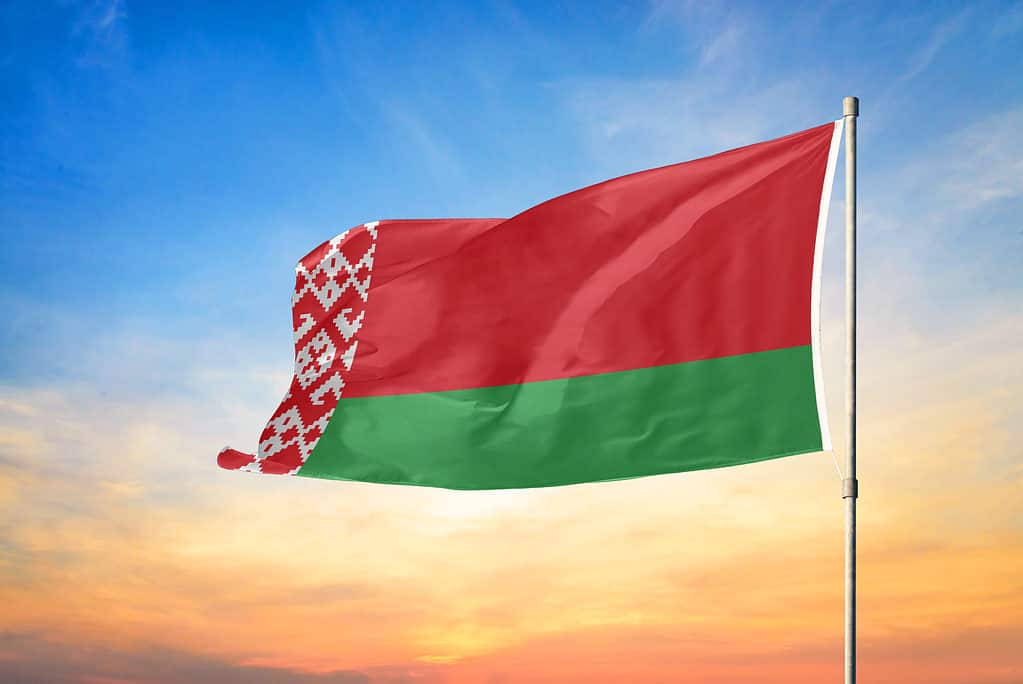
The flag of Belarus features red and green stripes with a red and white outer edge.
©Tatohra/Shutterstock.com
Belgium
Belgium became an independent nation in 1830, and the flag was adopted in 1831. The black, yellow, and red horizontal colors were based on the Duchy of Brabant’s coat of arms.
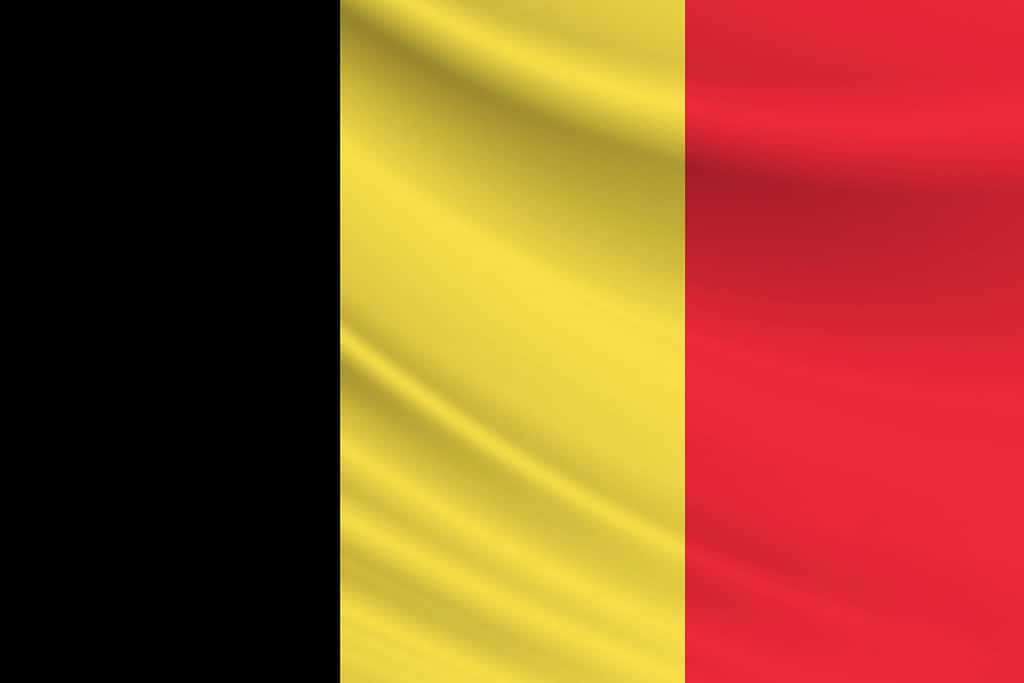
The Belgium flag is tricolor with yellow, black, and red.
©Faievych Vasyl/Shutterstock.com
Bosnia and Herzegovina
The country was founded in 1992, following the 1992 Bosnian independence referendum that led to the breakup of Yugoslavia. The flag of Bosnia and Herzegovina was adopted in 1998.
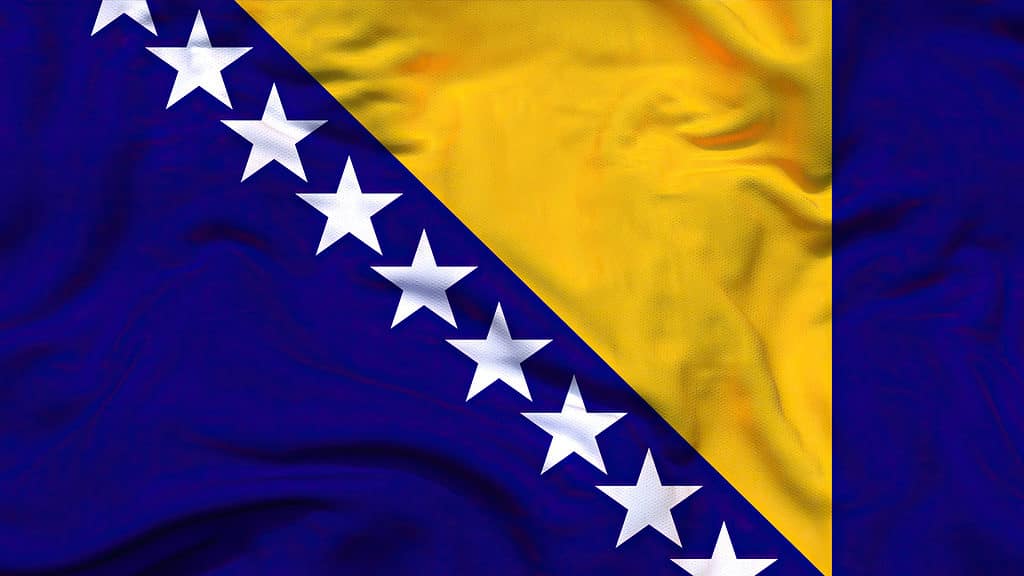
The flag of Bosnia and Herzegovina is blue and yellow.
©iStock.com/EA
Bulgaria
Bulgaria’s flag was first adopted in 1879 after the Russo-Turkish War. And the flag was readopted in 1990 with the Constitution of the Republic of Bulgaria.
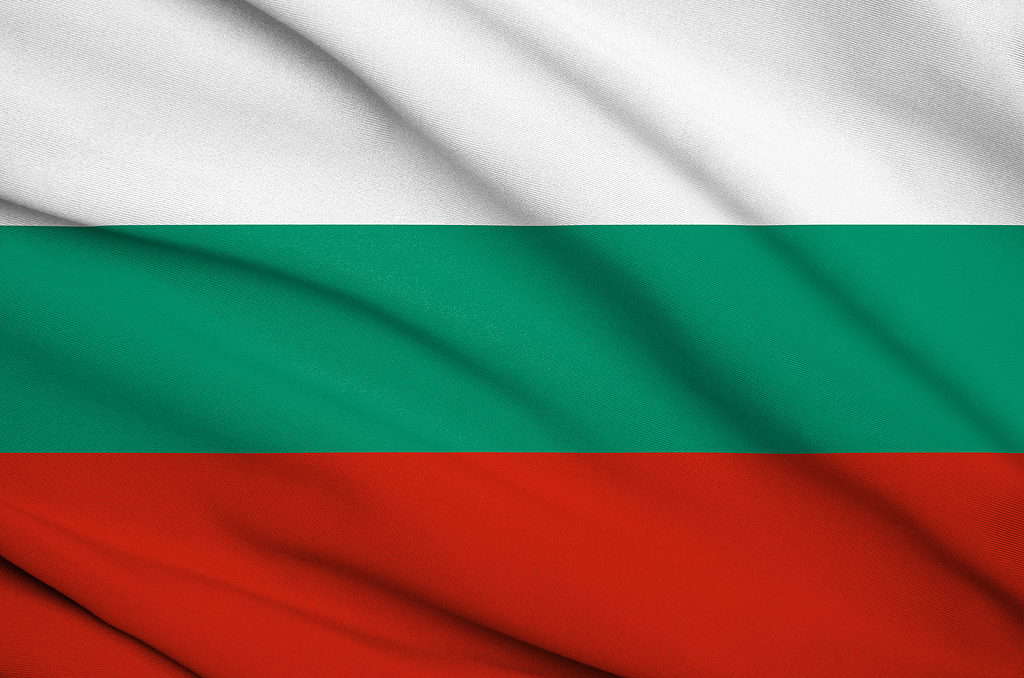
The flag of Bulgaria is white, green, and red.
©MriMan/Shutterstock.com
Croatia
The flag of Croatia became the official national flag of the country in 1990. Croatia gained independence from Yugoslavia almost a year after adopting the flag.
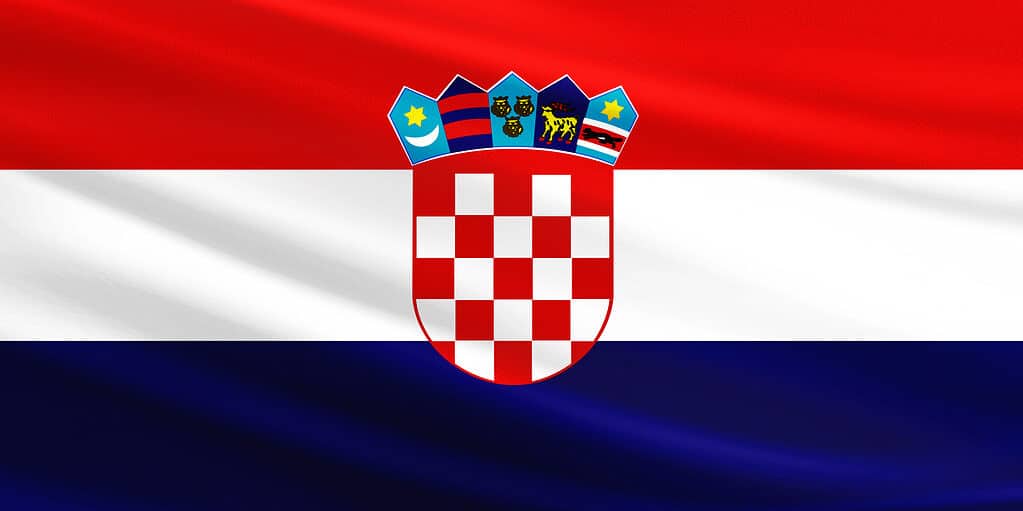
The flag of Croatia features red, white, and blue.
©Osman Bugra Nuvasil/Shutterstock.com
Cyprus
The original design of the Cyprus flag was adopted in 1960 when the country gained independence from the UK. The current flag has been in use since 2006.
Czech Republic
The Czech flag is the same as that of Czechoslovakia, which was adopted in 1920. When the Czech Republic became its own country in 1993, it kept the Czechoslovak flag.
Denmark
The flag of Denmark first gained popularity in the 16th century. While it was briefly outlawed from 1834 to 1854, it holds the record for the oldest continuously used national flag.
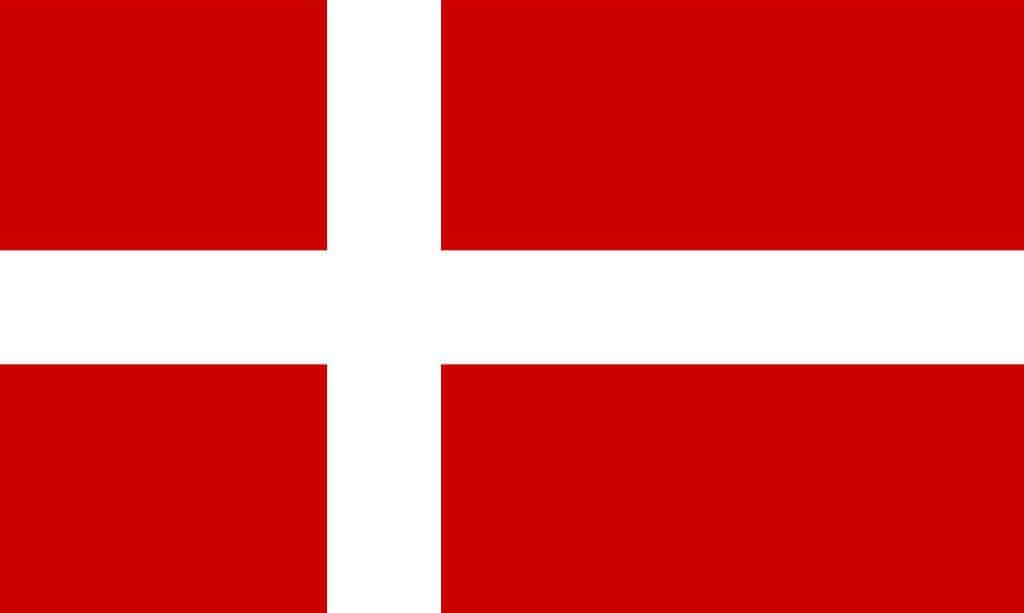
The flag of Denmark has a red field and a Nordic cross in white that is positioned off-center.
©iStock.com/prospective56
Estonia
The Estonian flag was adopted in 1918 and officially confirmed as the national flag in 1922. The flag was still in use by Estonians in exile from 1940 to 1991.
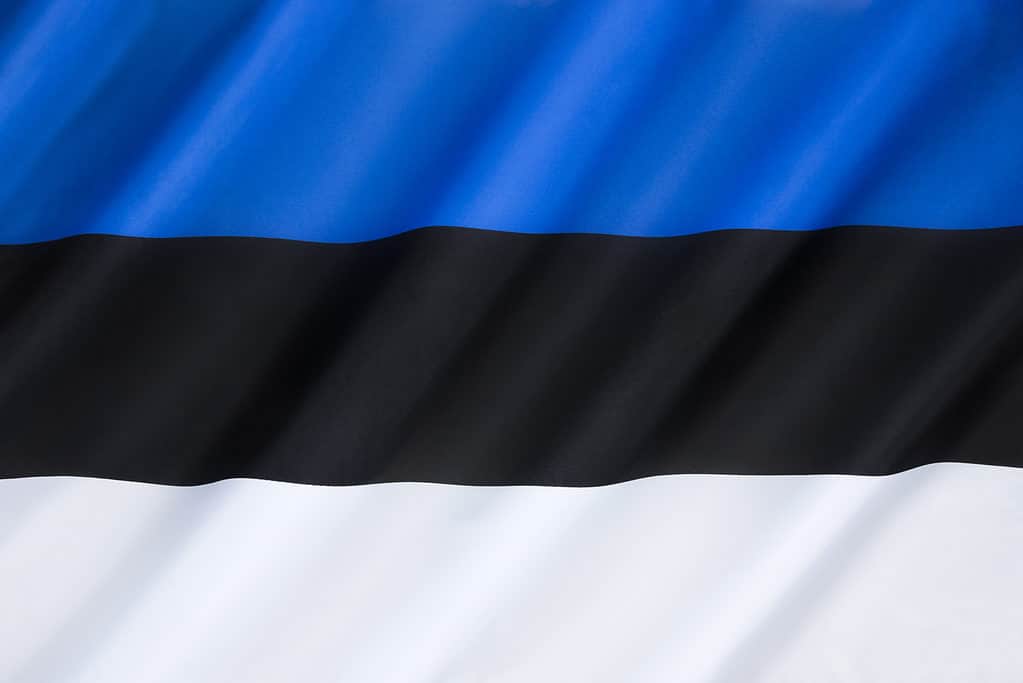
Estonia’s flag has three main colors, black, blue, and white. Each stripe represents something unique about the country and its history.
©Steve Allen/Shutterstock.com
Finland
The flag of Finland was adopted in 1918 after the Finnish Civil War, which was ignited after the country gained independence from the Russian Empire.
France
The French flag with darker shades of blue, white, and red was adopted in 1794. But the newer flag with lighter shades became the official national flag in 1974.
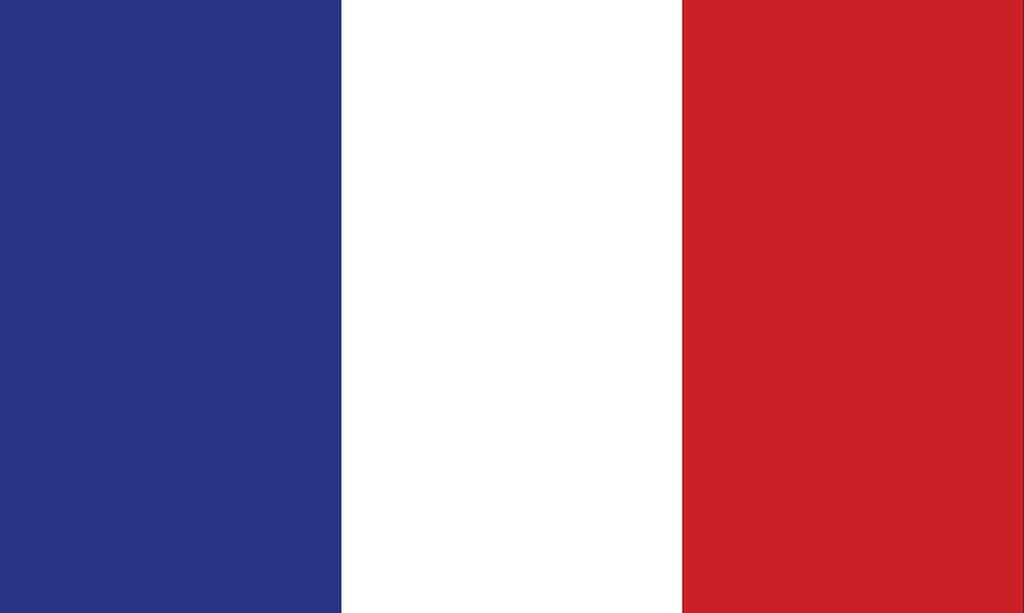
The French flag has red, white, and blue colors.
©iStock.com/-ELIKA-
Germany
The flag of Germany was first adopted in 1919 and again in 1949. After the reunification, many Germans cut the emblem out of the East German flag.
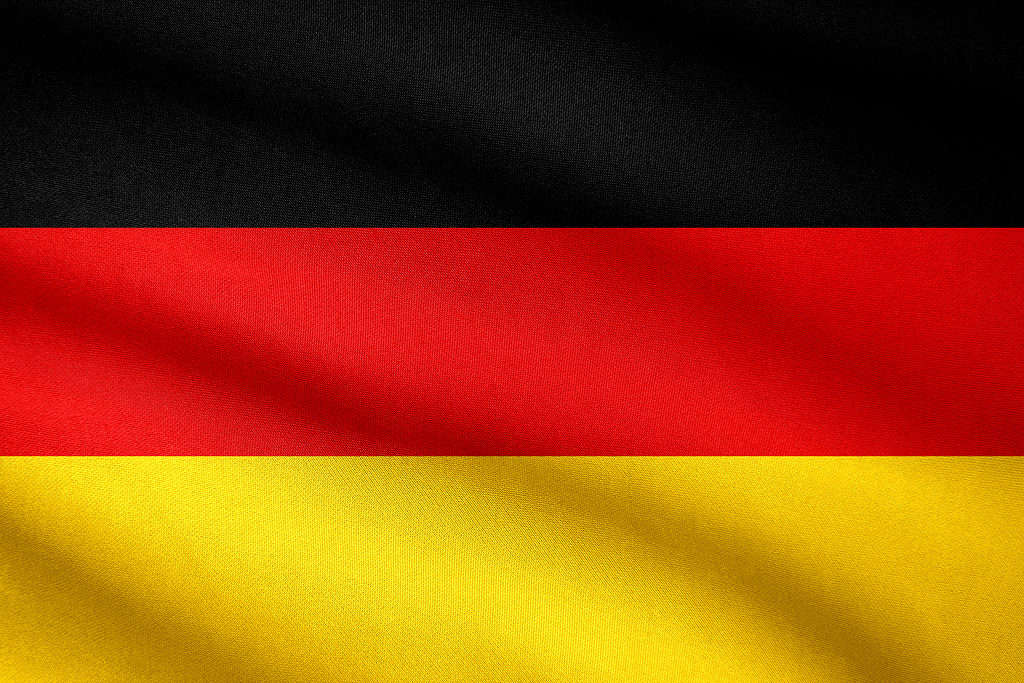
The flag of Germany is highly recognizable, featuring stripes in black, red and gold.
©Osman Bugra Nuvasil/Shutterstock.com
Georgia
The flag of Georgia, also called the five-cross flag, was adopted in 2004. The country gained independence from the Soviet Union in 1991. However, the flag was first used in the 12th century!
Greece
The national flag of Greece was adopted in 1978 when the sea flag was adopted as the national flag. Greece gained independence from the Ottoman Empire in 1830.
Hungary
The national flag of Hungary as we know it today has been in use as the official flag since 1957, and it was reaffirmed in 1990. The flag symbolizes strength, faithfulness, and hope.
Iceland
The flag of Iceland was officially adopted in 1944 when it became an independent republic. While the country’s first national flag was flown in 1897, the modern flag dates back to 1915.
Ireland
The tricolor flag of Ireland was adopted in 1922 and was given constitutional status in 1937. This flag has been in use as early as 1916 in both Northern Ireland and the Republic of Ireland.
Italy
The flag of Italy was founded in 1946, along with the Italian Republic. However, the green, white, and red tricolor flag became a popular symbol for Italian unification in 1797.
Kosovo
Kosovo declared independence from Serbia in 2008, and the national flag of Kosovo has been flown since then. The Serbian government has yet to recognize Kosovo’s sovereignty officially.
Latvia
The Latvian flag was used from 1918 to 1940 when the Soviet Union occupied the country. The flag was restored in 1990, shortly before the country regained its independence.
Liechtenstein
The flag of Liechtenstein has been in use since 1764 and became official in 1921. There have been a few modifications since then, with the last one in 1982. In 1936, the crown was added when it was discovered that the flag was identical to Haiti’s flag.
Lithuania
The flag of Lithuania was first adopted in 1918 during the country’s first period of independence until 1940. The flag was reinstated in 1989, a year before the country declared independence.
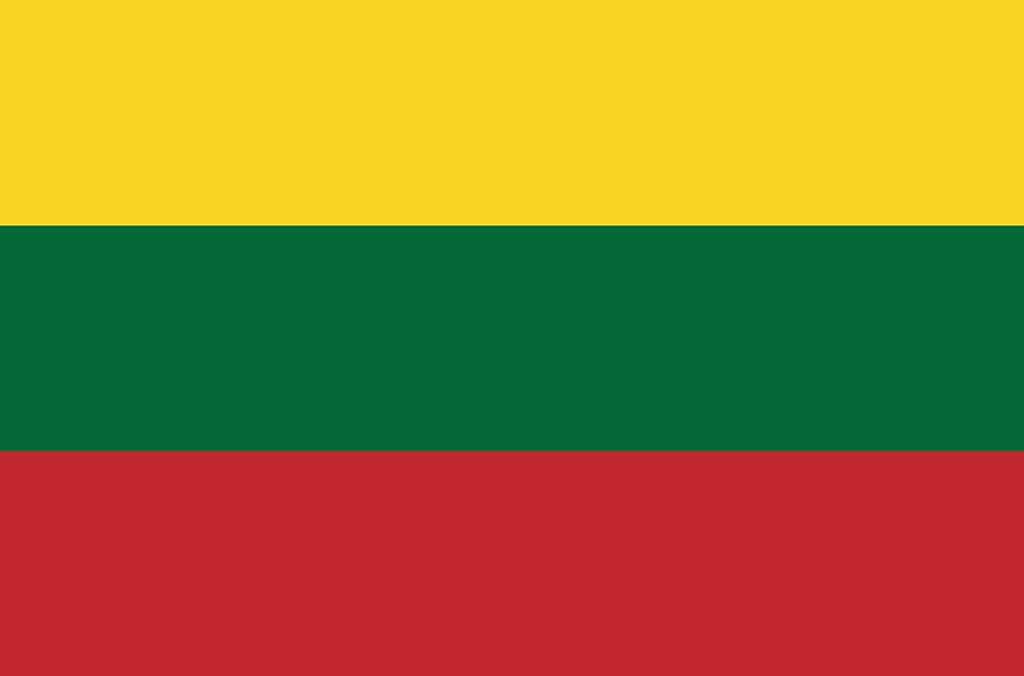
The flag of Lithuania is a distinctive tricolor of yellow, green, and red bands.
©DHAYAWATHI/Shutterstock.com
Luxembourg
Although Luxembourg was founded in 1815, it had no flag until 1830. The Luxembourg flag was first used in 1845 and was adopted in 1993. The flags colors were inspired by the French flag.
Malta
The Maltese flag was first recognized in 1952, and it was officially adopted in 1964 when the country gained independence from the UK. The George cross appears in the corner which was awarded to Malta after WWII.
Moldova
The vertical triband flag of Moldova was adopted in 1990, a year before it gained independence from the Soviet Union in 1991. The flag is very similar to Romania, as the two countries share many cultural similarities.
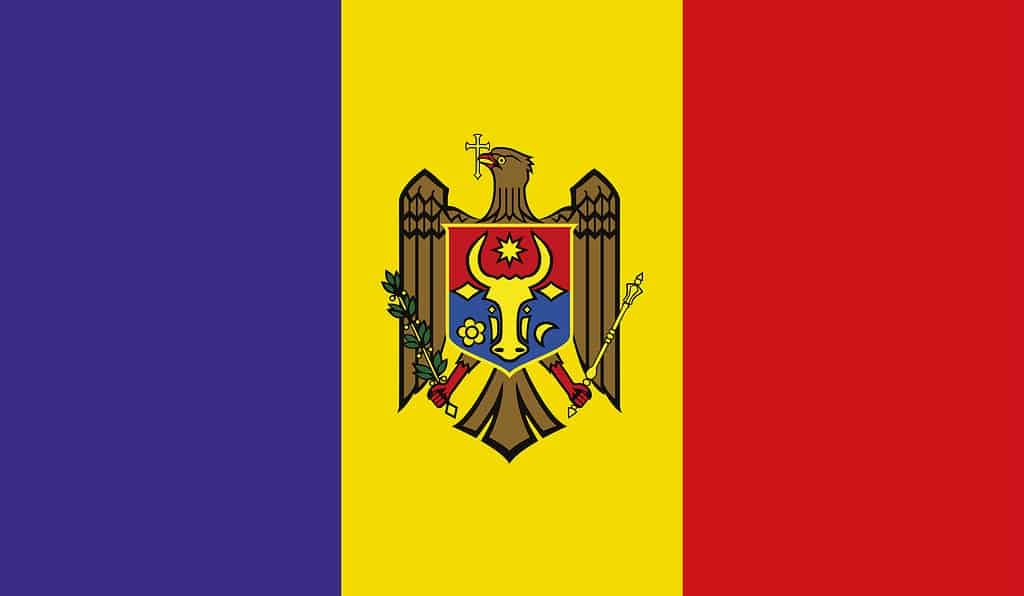
The flag Of Moldova features stripes in red, blue and gold with an emblem at the center.
©iStock.com/Burak Ceyhan
Monaco
The red and white bicolor flag of Monaco was adopted in 1881, but the colors have been the heraldic colors of the House of Grimaldi since 1339.
Montenegro
The flag of Montenegro was officially adopted in 2004 before the country became the Republic of Montenegro. After the country gained independence in 2006, the flag remained.
Netherlands
The Netherlands flag was first depicted in 1575. After a few changes, the red of the tricolor was reinstated in 1937, and the colors have been standardized since 1949.
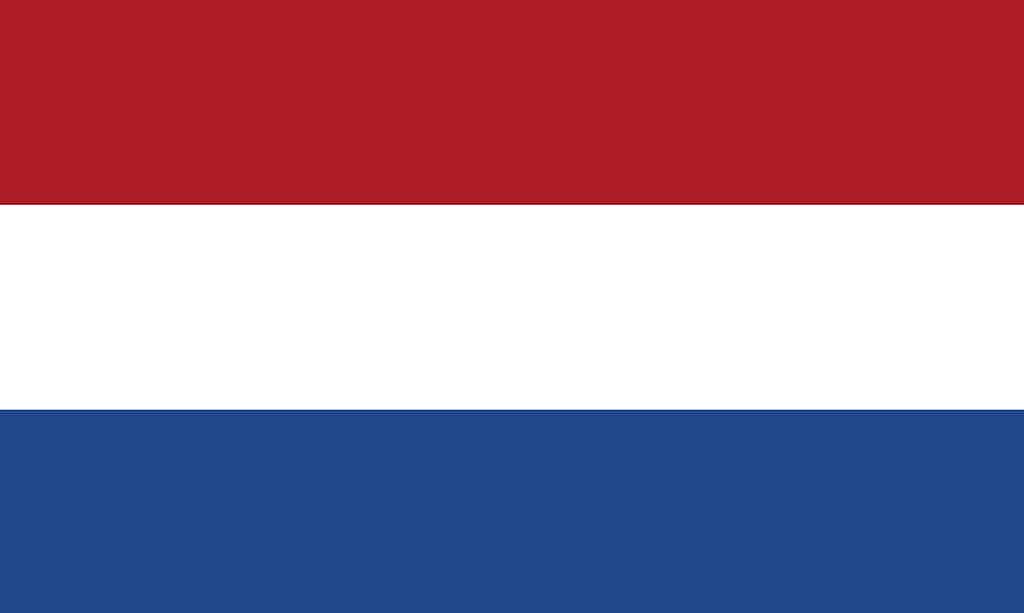
The flag of the Netherlands (Dutch flag) features a simple red, white and blue striped design.
©iStock.com/flowgraph
North Macedonia
The first post-Yugoslavia flag of North Macedonia was flown in 1992, and the current flag of North Macedonia was adopted in 1995. The eight rayed sun represents the new sun of liberty.
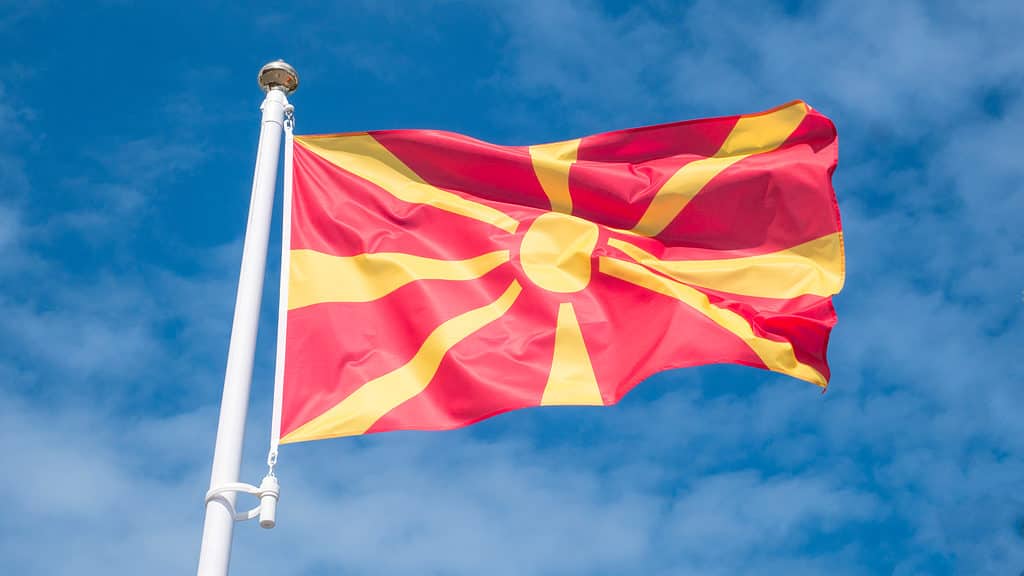
The Macedonian flag features red and gold colors.
©V.Lawrence/Shutterstock.com
Norway
The flag of Norway was adopted in 1821. Although the king did not sign the flag law, it was approved for civilian use. The cross represents the majority Christian faith.
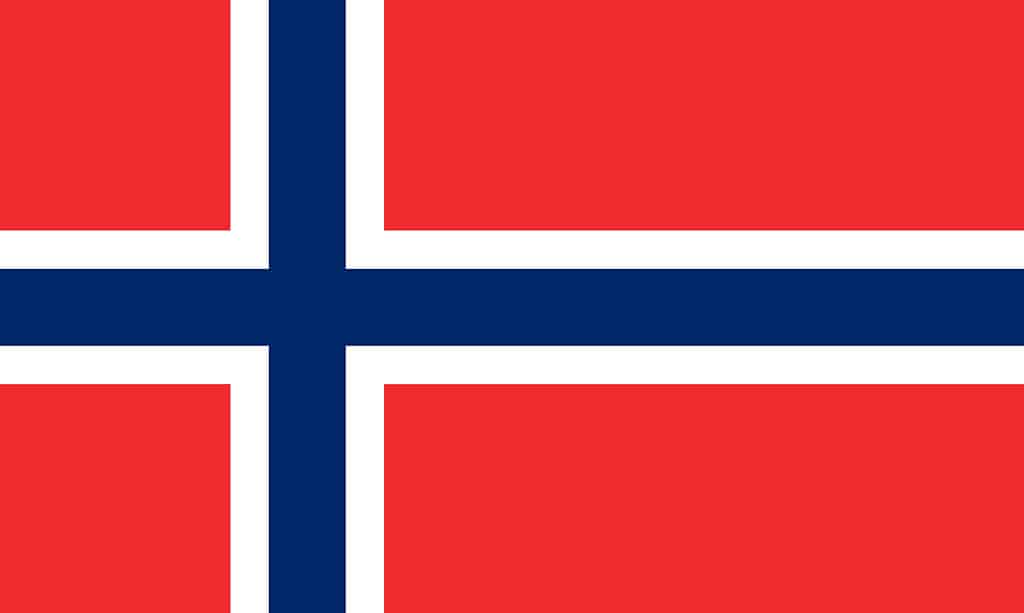
The colors red, white and blue used in the flag of Norway symbolize the country’s freedom and independence.
©iStock.com/flowgraph
Poland
The flag of Poland was first officially recognized in 1919 along with the Second Republic. The flag was restored in 1990 with the establishment of the Third Republic.
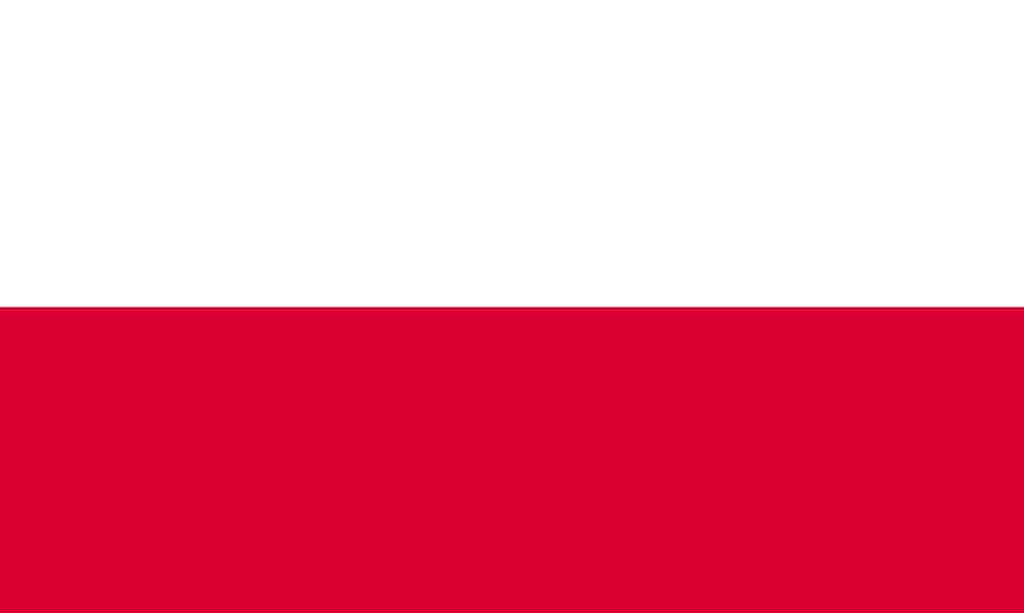
The Polish flag has white and red colors, which stand for purity and love, and are reminiscent of Catholic ideals and symbolism.
©iStock.com/bndart
Portugal
The downfall of the constitutional monarchy led to Portugal becoming a Republic in 1910. Shortly after, in 1911, the flag of Portugal became the official national flag.
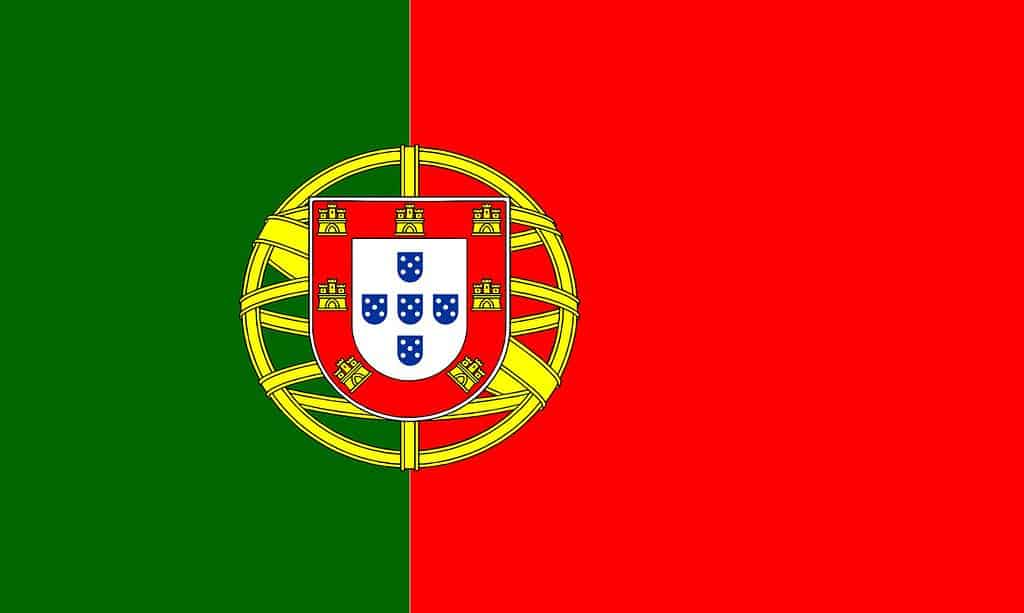
The flag of Portugal has green and red colors that are separated vertically. An armillary sphere in yellow and a shield in red can be seen in the center of the flag.
©iStock.com/Art illustration
Romania
The blue, yellow, and red tricolor flag of Romania was first adopted in 1834. Different versions of the Romanian flag have flown since then, with the last modification in 1989.
Russia
The flag of Russia was initially adopted from 1696 to 1923 by the Russian Empire. After the dissolution of the Soviet Union in 1991, the tricolor was adopted again.
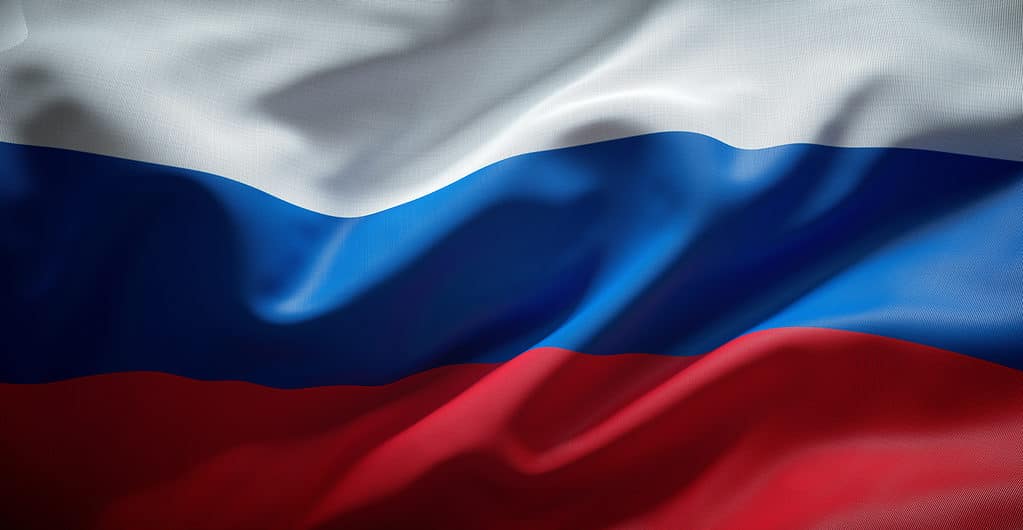
The Russian flag features three stripes in red, blue and white.
©Negro Elkha/Shutterstock.com
San Marino
The first use of the national colors was seen in 1797, and the coat of arms was adopted in 1862. The flag of San Marino was officially standardized in 2011.
Serbia
The Serbian flag was first adopted in 1882. Variations have been used since then, with the current form of the flag being adopted in 2004. The flag was officially standardized in 2010.

The current flag of Serbia was standardized in 2010.
©Faievych Vasyl/Shutterstock.com
Slovakia
The current Slovakian flag was first raised in 1990 as the Slovak Republic flag within Czechoslovakia. In 1992, the coat of arms was added, a year before Slovakia became an independent nation.
Slovenia
Slovenia became independent from Yugoslavia in 1991, and the flag of Slovenia was officially adopted. The Slovene tricolor flag has been flown since 1848.
Spain
The original Spanish flag was adopted in 1785, and the current version of the flag was adopted in 1981 when it was established in the constitution. The coat of arms represents the Spanish constitutional monarchy.
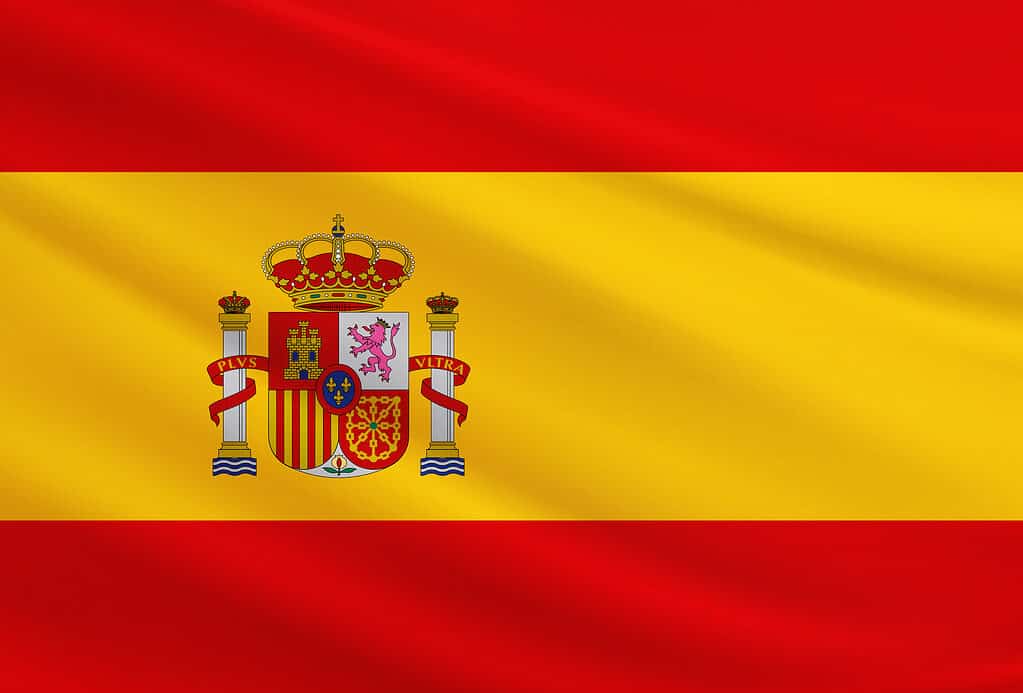
The Spanish flag is red and yellow.
©Osman Bugra Nuvasil/Shutterstock.com
Sweden
The blue and yellow of the Swedish flag have been in use since 1275. However, the current design of the flag was only adopted in 1906, after Norwegian independence the previous year.
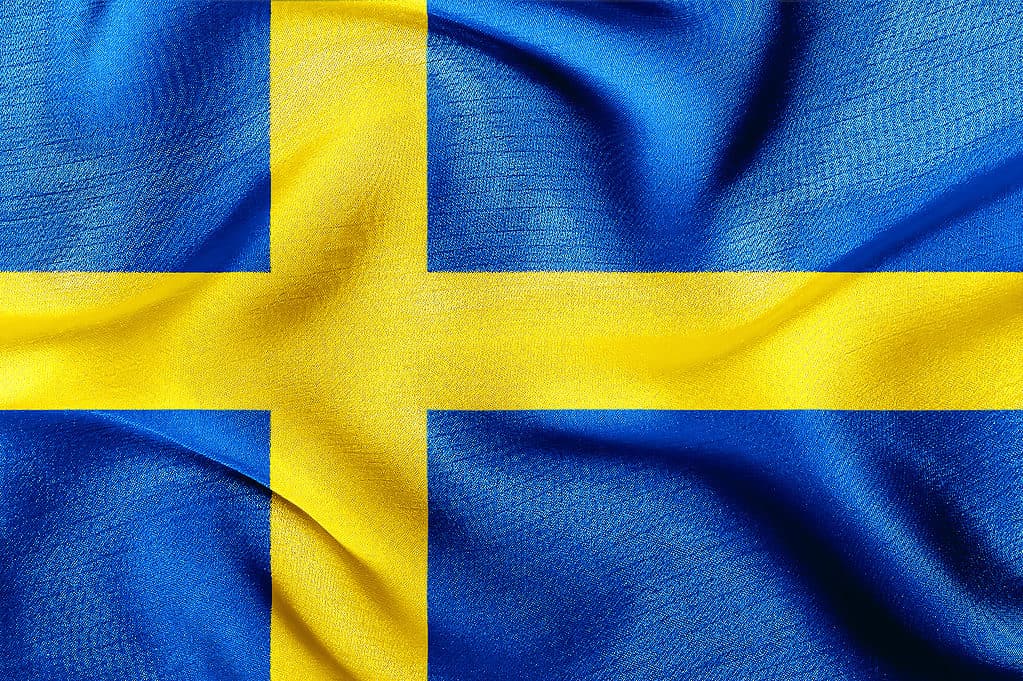
The flag of Sweden features yellow and blue.
©Marques/Shutterstock.com
Switzerland
The national flag of Switzerland was first used in 1841, and while the flag was recognized for the army, it was not officially adopted as the national flag on land until 1889.
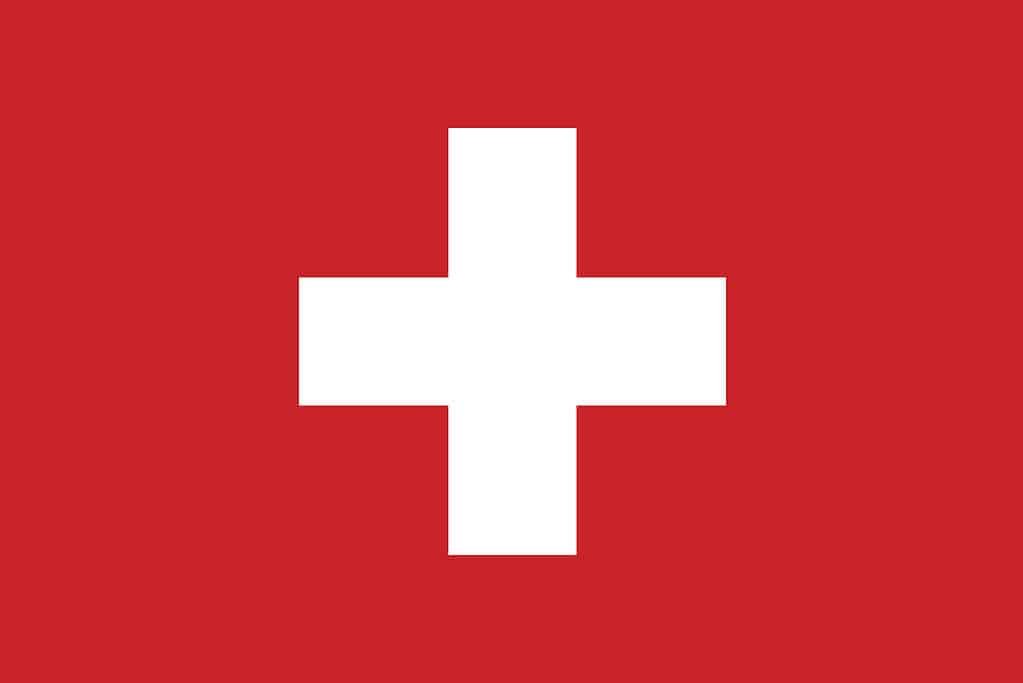
Flag of Switzerland is also known as the Swiss flag and features a red background with a white cross at its center.
©iStock.com/mehmetbuma
Ukraine
The blue and yellow bicolor Ukrainian flag was adopted in 1918 and restored in 1991 when the country gained independence from the Soviet Union. The yellow represents the fields of grain, as Ukraine is the breadbasket of Europe.
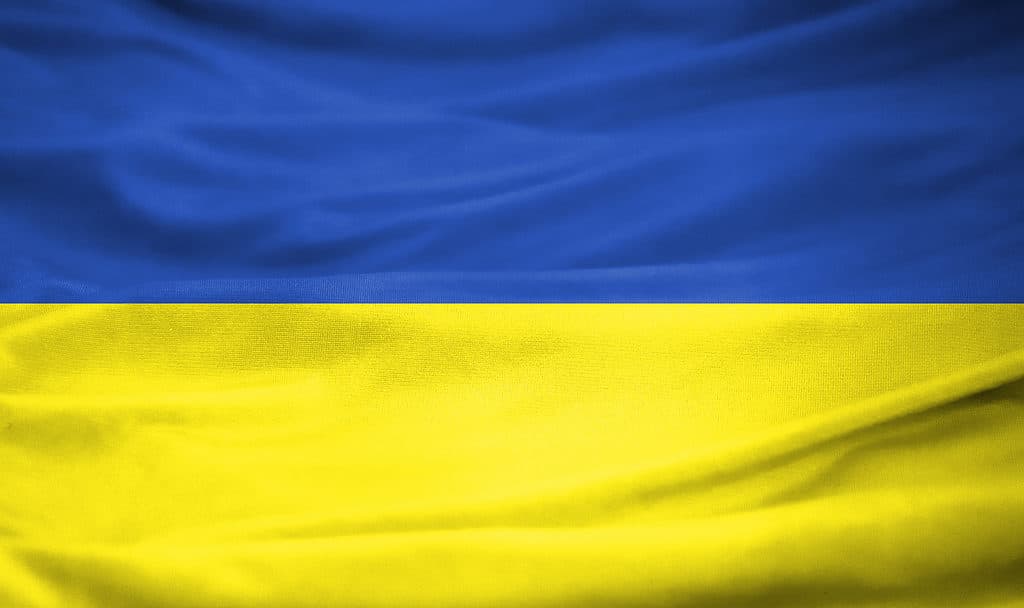
The Ukrainian flag is blue and yellow.
©Millenius/Shutterstock.com
United Kingdom
The flag of the UK, also called the Union Jack, was officially adopted in 1801 when the United Kingdom of Great Britain and Ireland was created It is a combination of the British, Northern Irish, and Scottish flags.
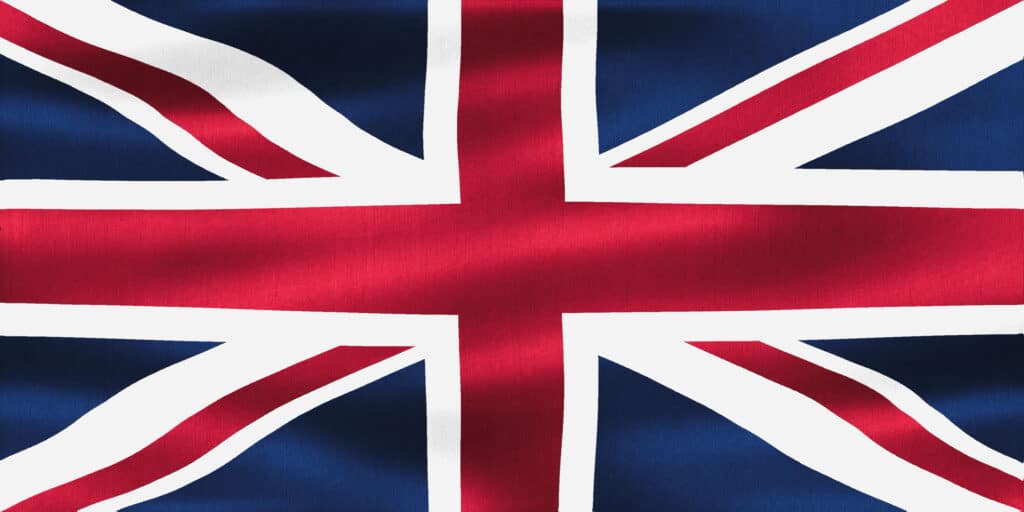
The Union Jack flag is one of the most recognizable flags in the world.
©MP_Foto/Shutterstock.com
Vatican City
The flag of Vatican City was adopted in 1929 when the newly independent state was created with the signing of the Lateran Treaty. The flag depicts the papal keys and tiara.
Africa
Algeria
Algeria was a French colony for over 100 years, from 1830 to 1962. The current national flag is similar to the revolutionary flag used in the decades leading up to independence.
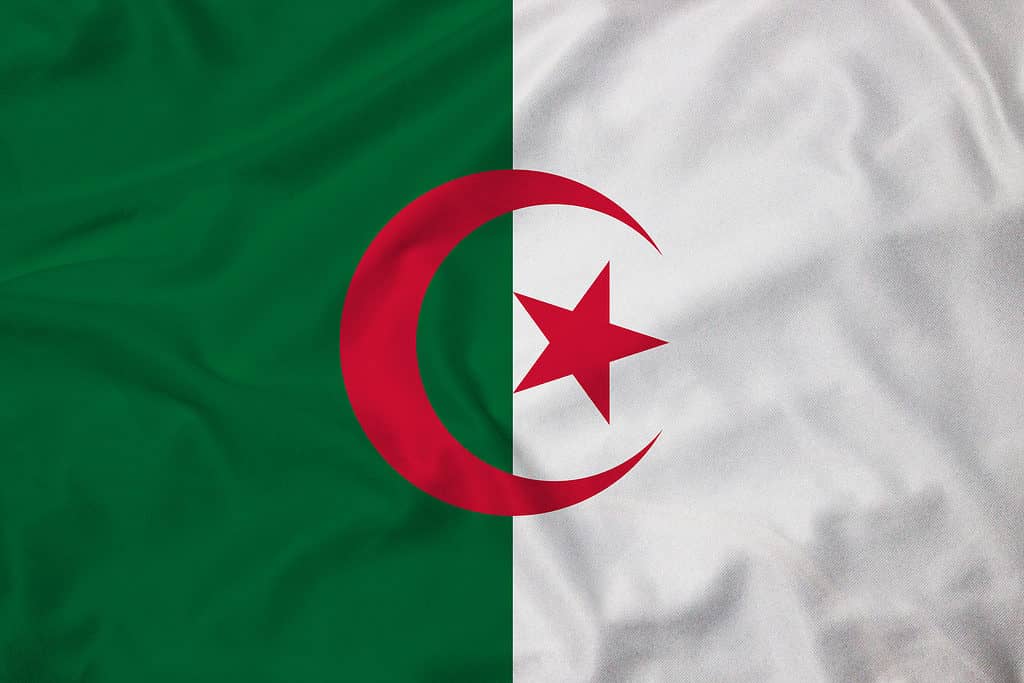
The flag of Algeria represents Islam and purity and the blood shed by its people.
©Royal Graphics/Shutterstock.com
Angola
Angola was a Portuguese colony for centuries until it gained independence in 1975 through a bloody revolution. The current national flag has been in place since 1975. The gear and machete represent Angolas working class.
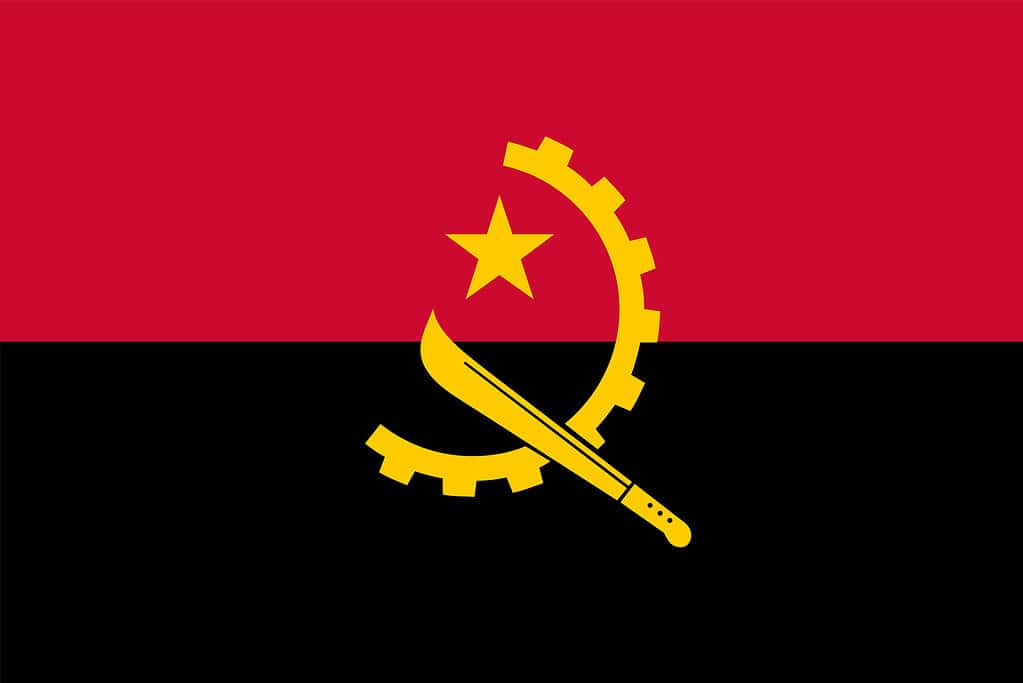
The flag of Angola features three bold colors: red, black and gold.
©iStock.com/Muhammad Fadlan
Benin
Benin gained independence from France in 1960. The French tricolor was first taken down in 1959 and replaced by the official flag of Benin. The colors represent democracy, the ancestors, and the treasures of the country.
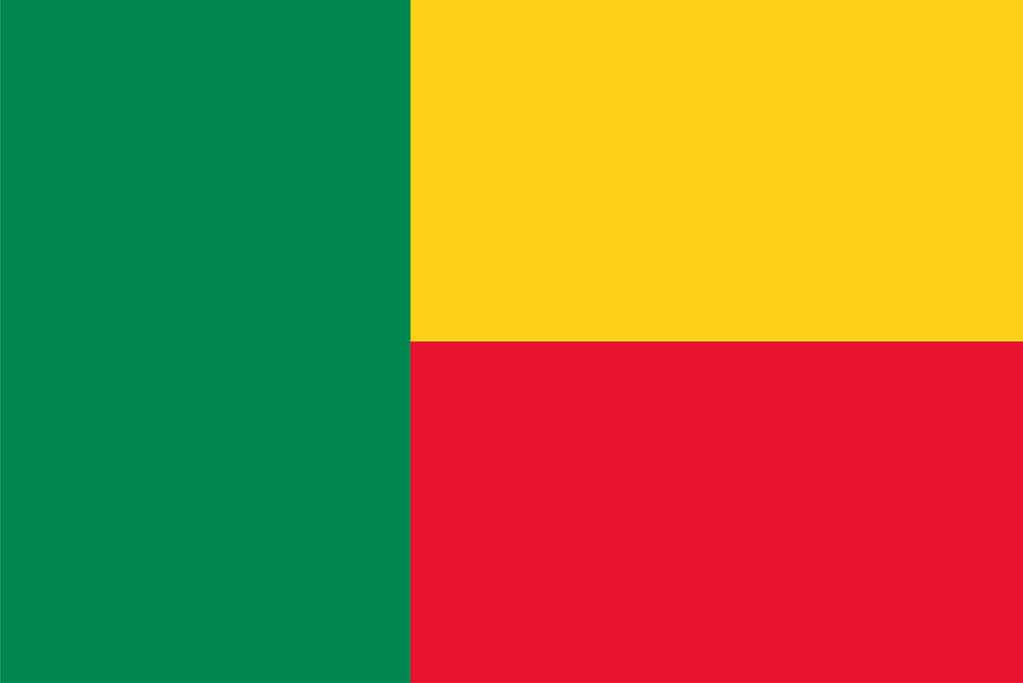
The flag of Benin features a simple design of green, gold and red.
©iStock.com/TAK
Botswana
Botswana gained independence from the UK in 1966. That same year the flag was designed and hoisted to replace the Union Jack. The flag represents the hope for racial equality.
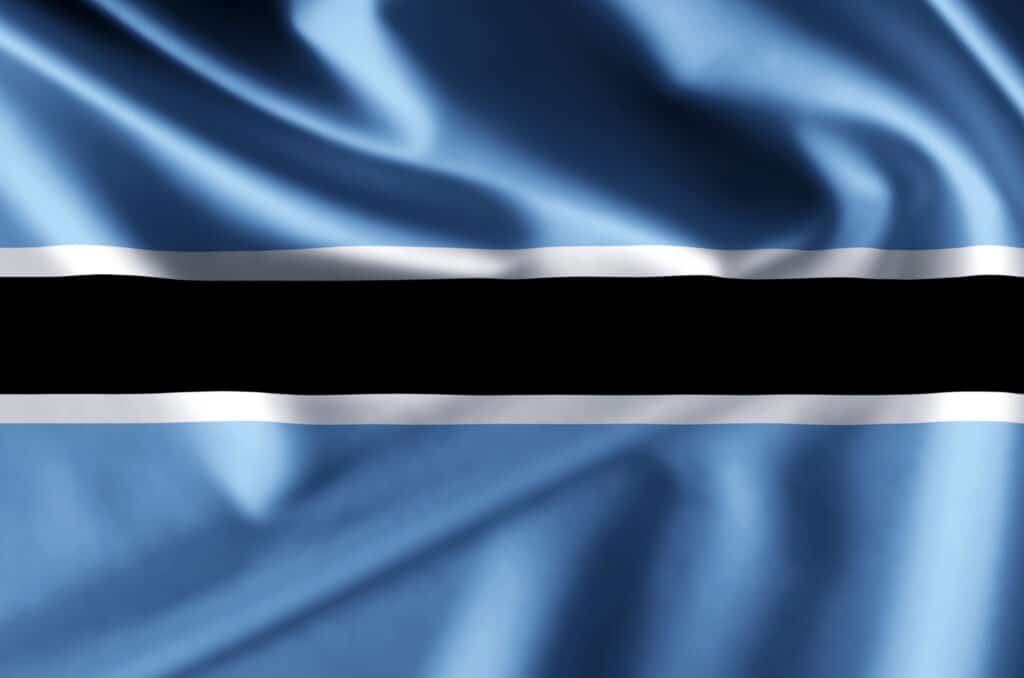
The Bostwana Flag represents a sky blue field cut horizontally by a black stripe with a thin white frame
©Stockphotos RBL/Shutterstock.com
Burkina Faso
Burkina Faso has had several coups since its independence from France in 1960. The current flag dates back to 1984. Before 1984, Burkina Faso was called Upper Volta.
Burundi
Burundi was originally part of German East Africa but was occupied by Belgium during WWI. The country gained independence in 1962, and its current flag has been in use since 1967.
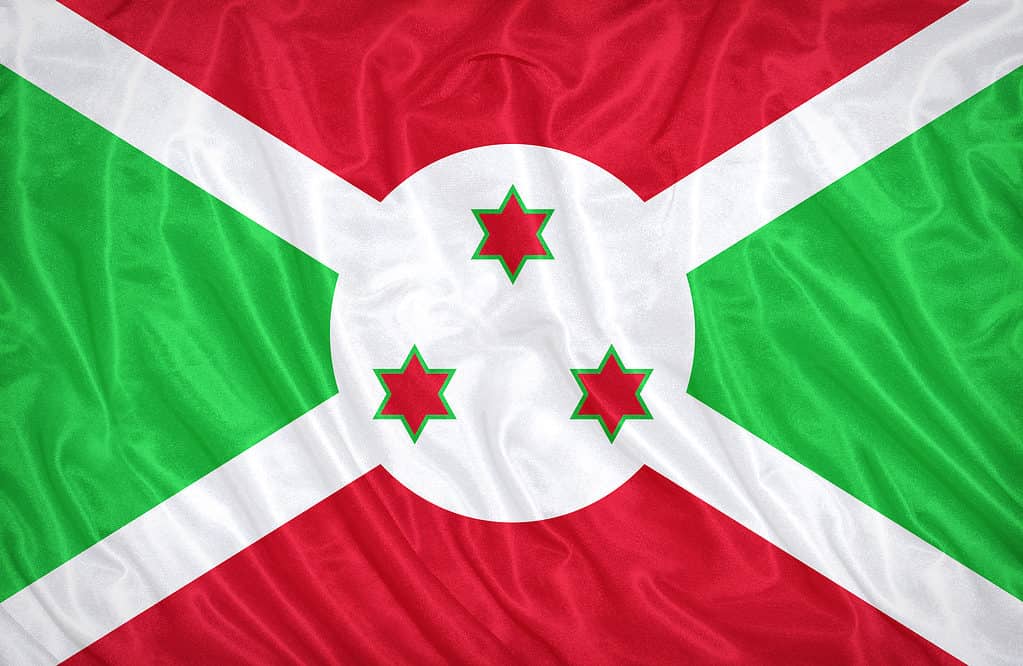
Burundi’s flag is red, green, and white.
©Wasan Ritthawon/Shutterstock.com
Cameroon
Cameroon gained independence from France in 1960 and from the UK in 1961. The nation has used several flags, but the current version was designed in 1975.
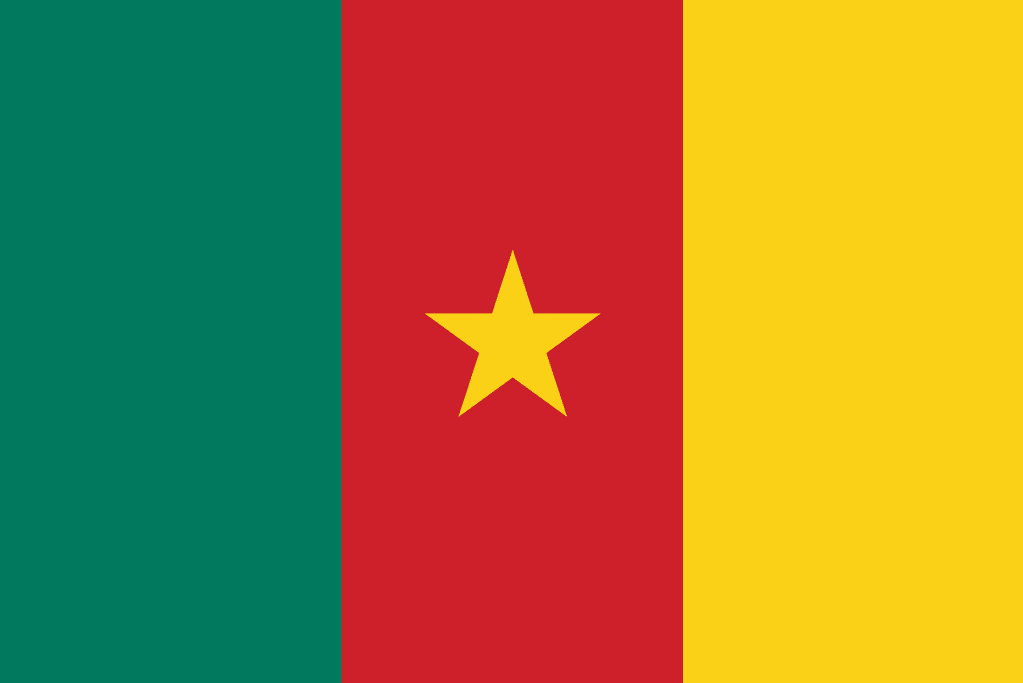
The flag of Cameroon features stripes in green, red and gold with a gold star at its center.
©T. Lesia/Shutterstock.com
Cabo Verde
Cabo Verde gained independence from Portugal in 1975. The nation used a different flag until the current design was adopted in 1992. The 10 stars represent the different islands of the nation.
Central African Republic
The Central African Republic was part of France until 1960, and the Central African Empire from 1976 to 1979. The national flag has been in use since 1954. The colors of the flag mash up French colors with African ones to symbolize unity.
Chad
Chad declared independence from France in 1960, and its official national flag was adopted in 1959. The flag remains very similar to the flag of Romania, however, neither country has changed the flag.
Comoros
Comoros is a small island in the Indian ocean that gained independence from France in 1975. The current national flag was adopted in 2001. The crescent represents the Muslim religion and the 4 stars represent the 4 main islands.
Côte d’Ivoire
Côte d’Ivoire (or the Ivory Coast) was a French colony until it gained independence in 1960. The flag, which looks very similar to the Irish flag, was adopted in 1960.
Democratic Republic of the Congo
The DRC gained independence from Belgium in 1960 and, from 1971 to 1997, was under a military dictatorship called Zaire. The country’s current flag has only been used since 2006.
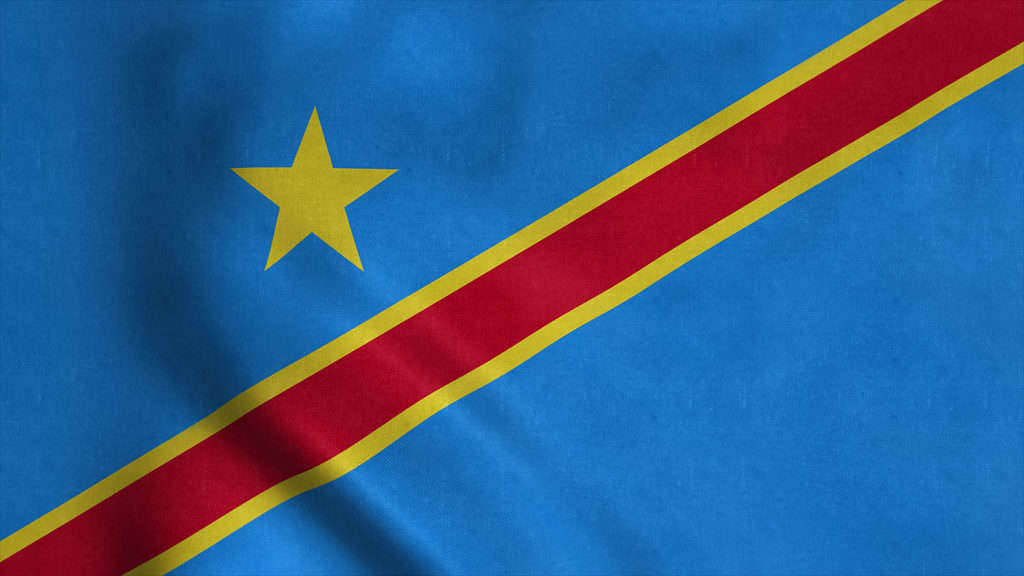
The flag of the Democratic Republic of Congo has red, blue, and yellow colors, with a star in the upper left corner and a red stripe with two thinner yellow stripes running diagonally across it.
©iStock.com/Дмитрий Ларичев
Djibouti
Djibouti gained independence from France in 1977. The current national flag was adopted that same year. The colors represent the sky, earth, blood, and peace.
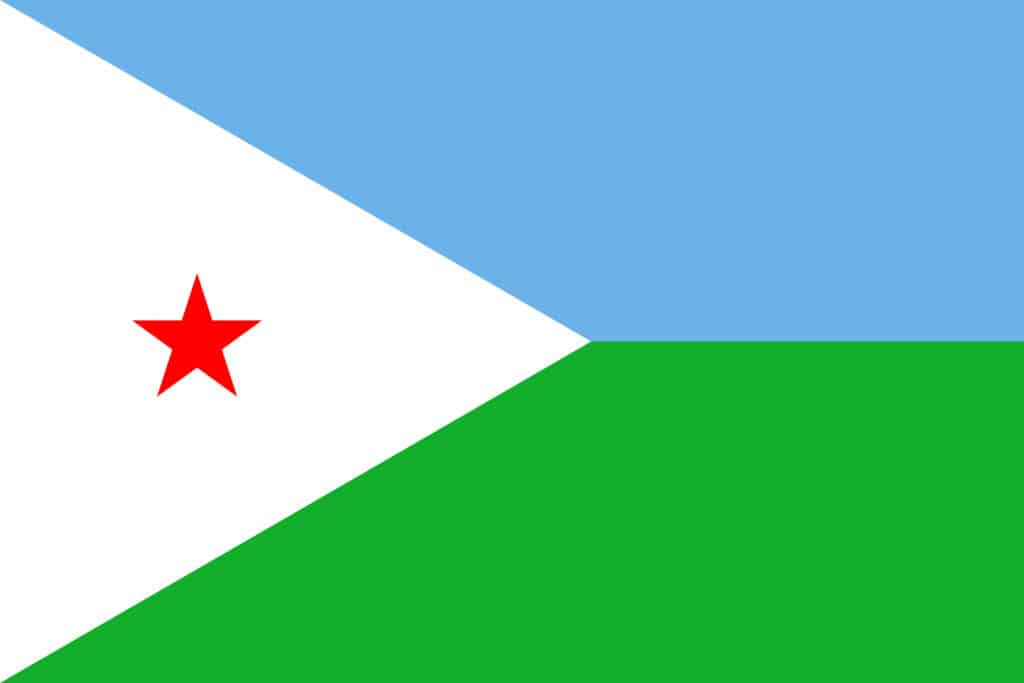
The flag of Djibouti contains white, blue, and green, with a red star.
©Atlaspix/Shutterstock.com
Egypt
Egypt was a British colony until 1922 and has undergone several regime changes. The current flag has been in use since 1984. The eagle in the center represents strength and power.
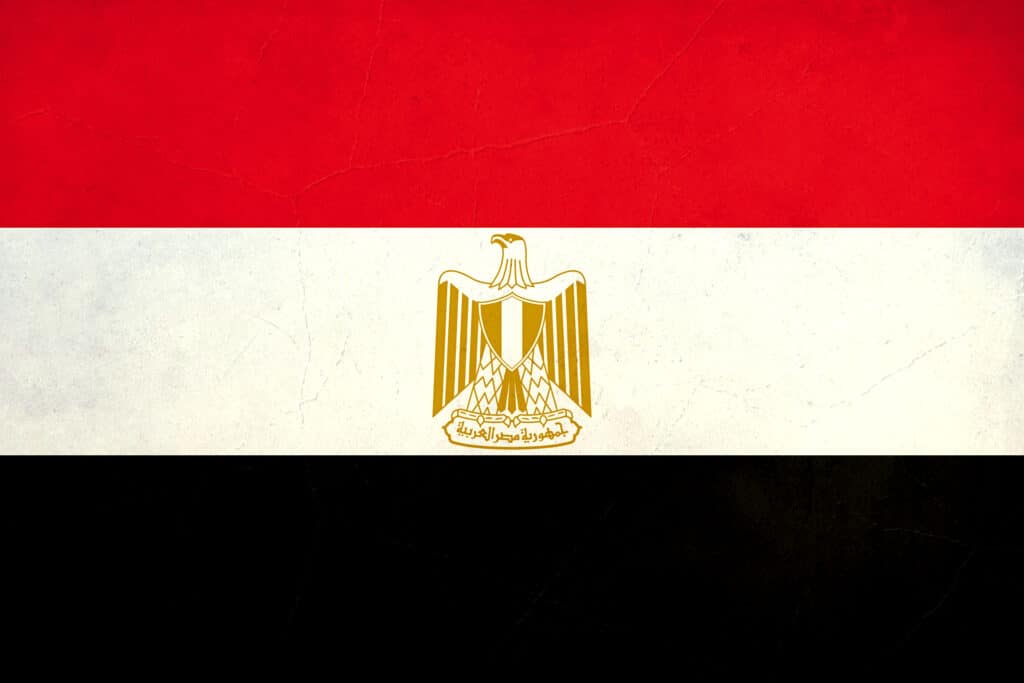
The Egyptian flag features red, white, and black horizontal stripes.
©H.studio/Shutterstock.com
Equatorial Guinea
Equatorial Guinea was part of the Spanish Empire until 1968. That same year, it gained independence and adopted its official flag. The coat of arms contains 6 stars and a silk cotton tree.
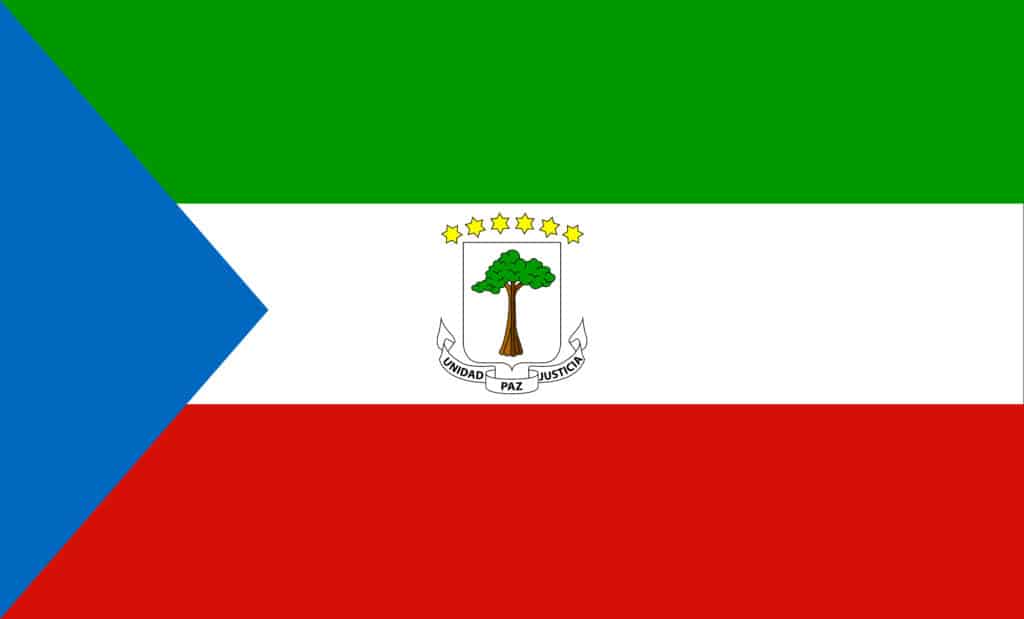
The flag of
Equatorial Guinea
features blue, green, white and red coloring.
©Lana2016/Shutterstock.com
Eritrea
Eritrea was colonized by the Ottoman empire for centuries and then by Italy until after WWII. The nation was then annexed by Ethiopia until 1993, when it gained sovereignty. The current flag has been in use since 1995.
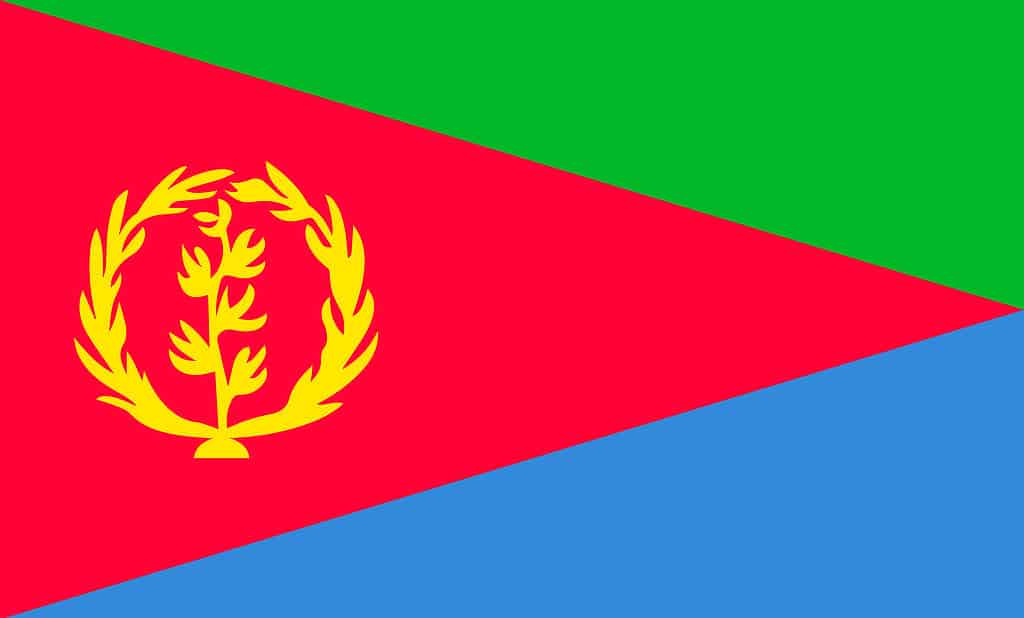
The flag of Eritrea features a unique design of three triangles in differing colors.
©Lana2016/Shutterstock.com
Eswatini
Eswatini (formerly Swaziland) was part of the UK until it gained independence in 1968. That same year, the nation adopted its national flag. The flag contains a tribal shield and spears, symbolizing the nations defense.
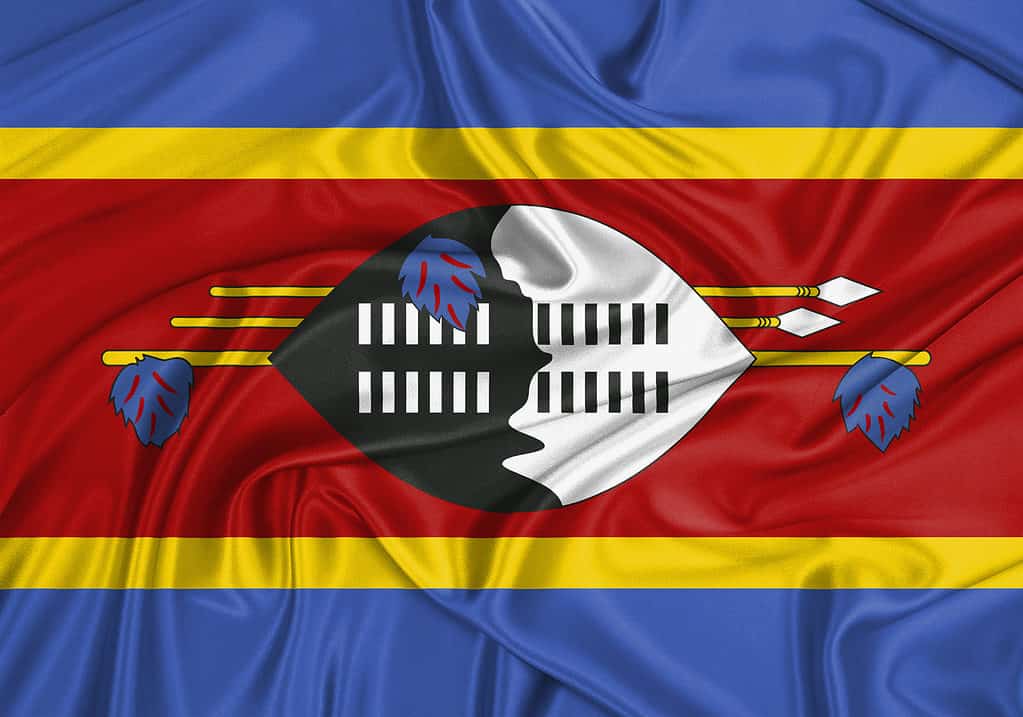
The flag of
Eswatini
was adopted in 1968.
©Hybrid Gfx/Shutterstock.com
Ethiopia
Ethiopia was one of 2 African countries that were never colonized by a European power (however, it was occupied by Italy during WWII). The current version of the official flag has been in use since 1996.
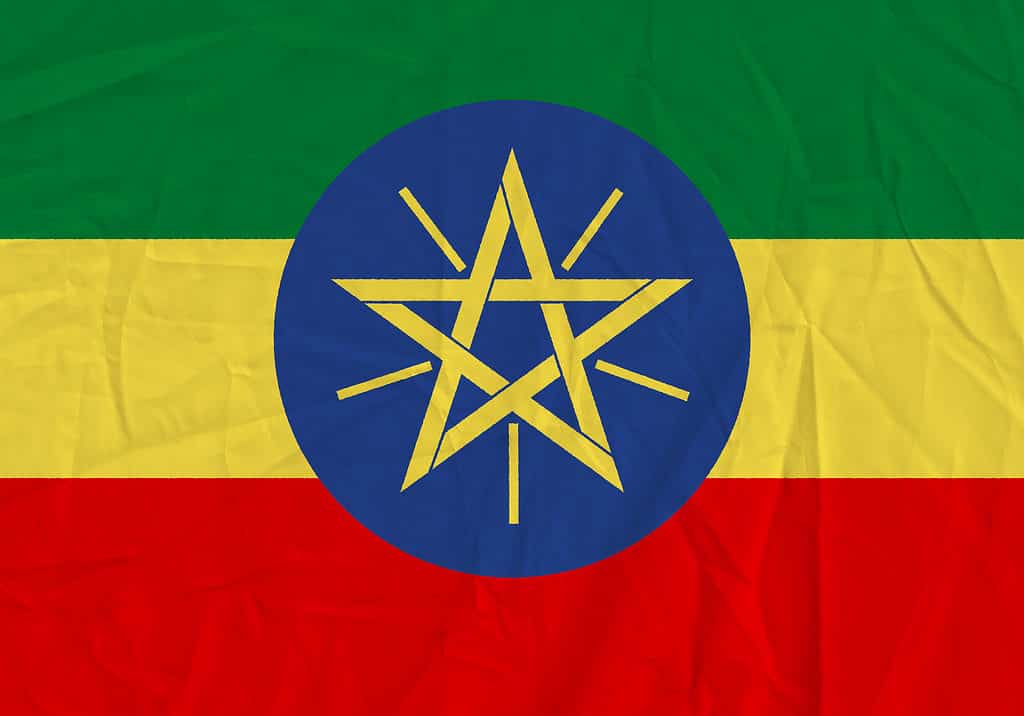
On October 31, 1996, Ethiopia adopted its current flag. The National Emblem, a golden pentagram on a blue disc, is overlaid in the middle of the tricolor, which is composed of green, yellow, and red.
©Olleg/Shutterstock.com
Gabon
Gabon became independent from France in 1960 and adopted its national flag that same year. The yellow stripe symbolizes the equator, because Gabon sits between the northern and southern hemispheres.
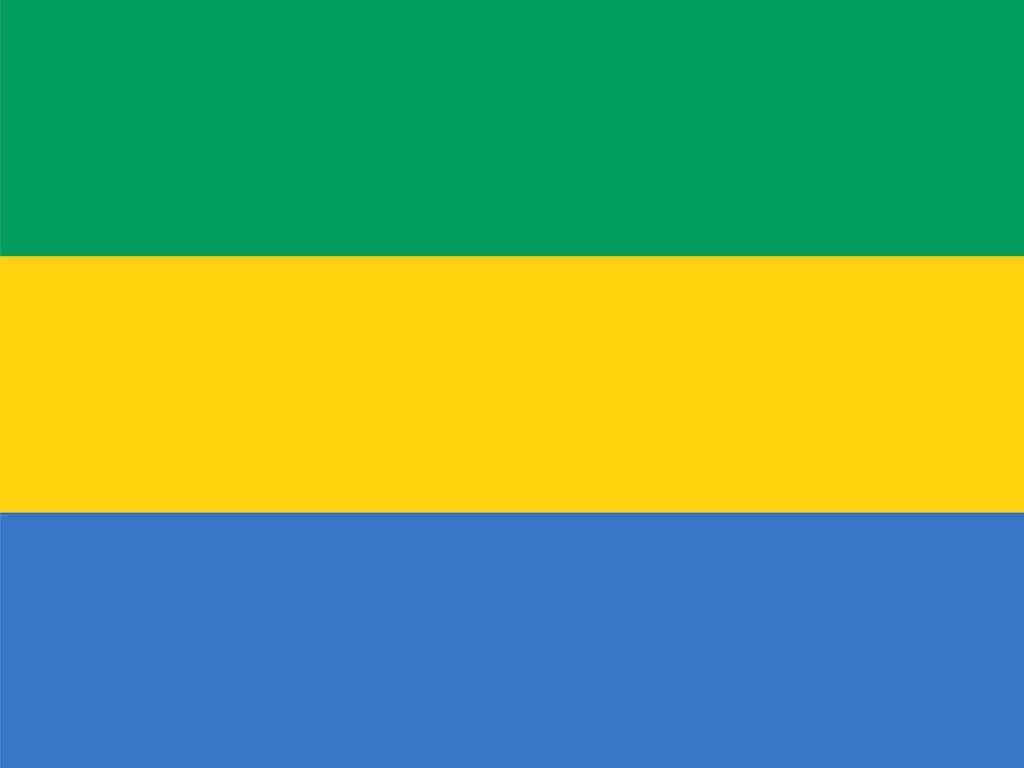
The flag of Gabon features a simple design of green, gold and blue stripes.
©iStock.com/TAK
Gambia
Gambia gained independence from the UK in 1965. In 1965, the nation raised its first national flag over the country. The blue stripe represents the river that takes up much of the country.
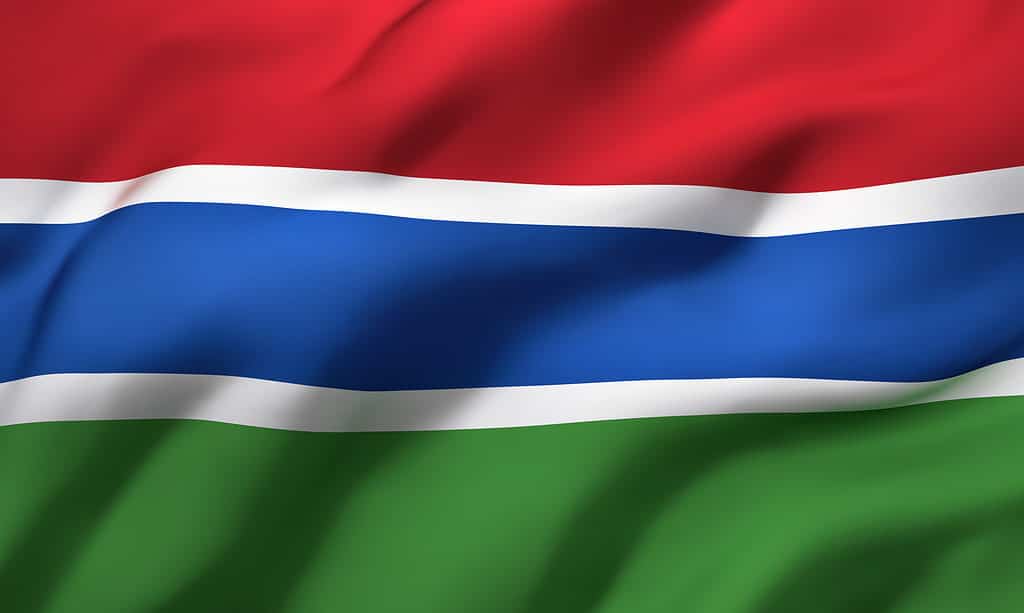
The flag of Gambia has three horizontal stripes of red, blue, and green that are divided by two slender white lines
©iStock.com/titoOnz
Ghana
Ghana became an independent nation in 1960 after the UK relinquished control of the country. In 1957, the government designed and adopted the national flag.
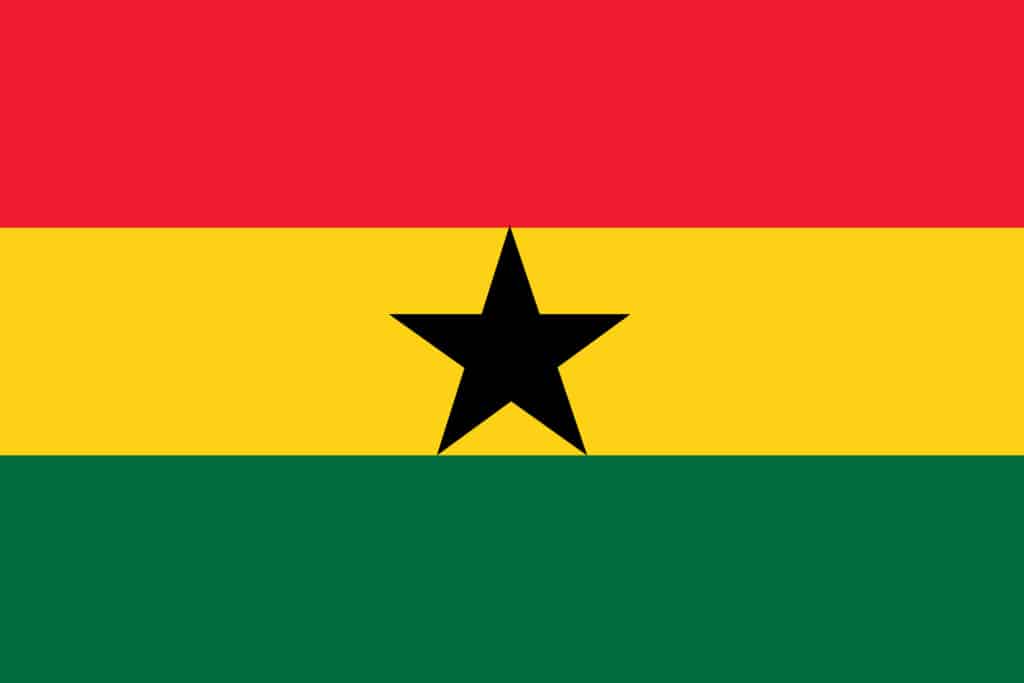
The flag of Ghana features a three-striped style of red, gold, and green. A black star rests in the center. Red represents the blood of those who died during Ghana’s struggle for independence, gold represents Ghana’s mineral wealth, and green symbolizes the forestry of Ghana. The black star represents the Lodestar of African Freedom.
©Julinzy/Shutterstock.com
Guinea
Guinea gained independence from France in 1958. That same year the nation lowered the French tricolor and raised its official flag. The black star represents the determination of the African people.
Guinea-Bissau
Guinea-Bissau gained independence from Portugal in 1975. 2 years earlier, revolutionaries created an official flag using similar colors as the Portuguese flag.
Kenya
The UK colonized Kenya until 1964. One year prior, Kenya adopted their official flag, which is still in use today. The center piece is a Maasi shield and spears.
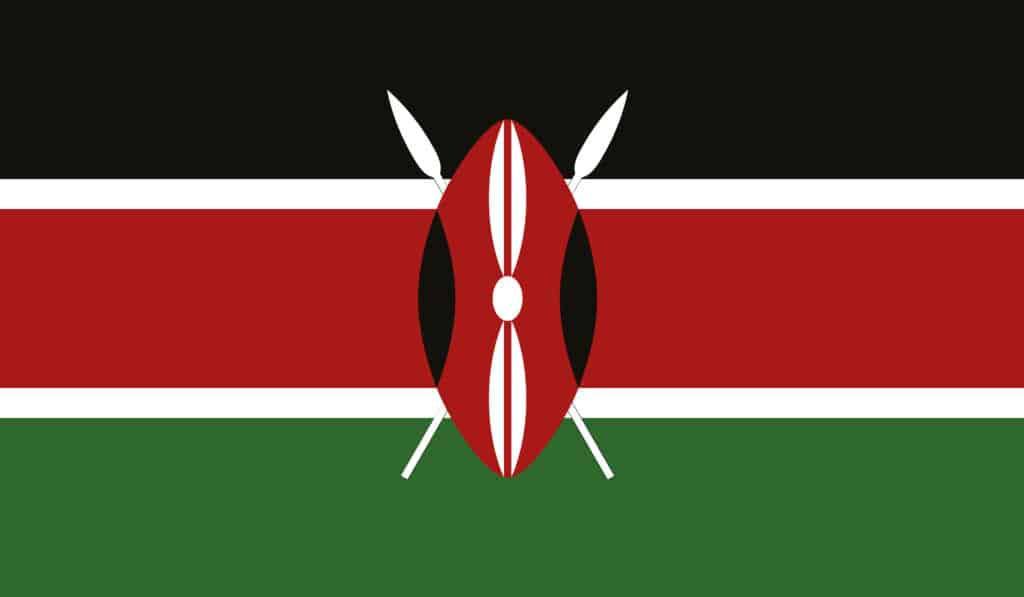
The flag of Kenya features a background of black, red and green stripes.
©iStock.com/Burak Ceyhan
Lesotho
Lesotho declared independence from the UK in 1966. The nation used several flags until it settled on the current flag in 2006. The center piece is a Mokorotlo hat representing the indigenous people of the nation.
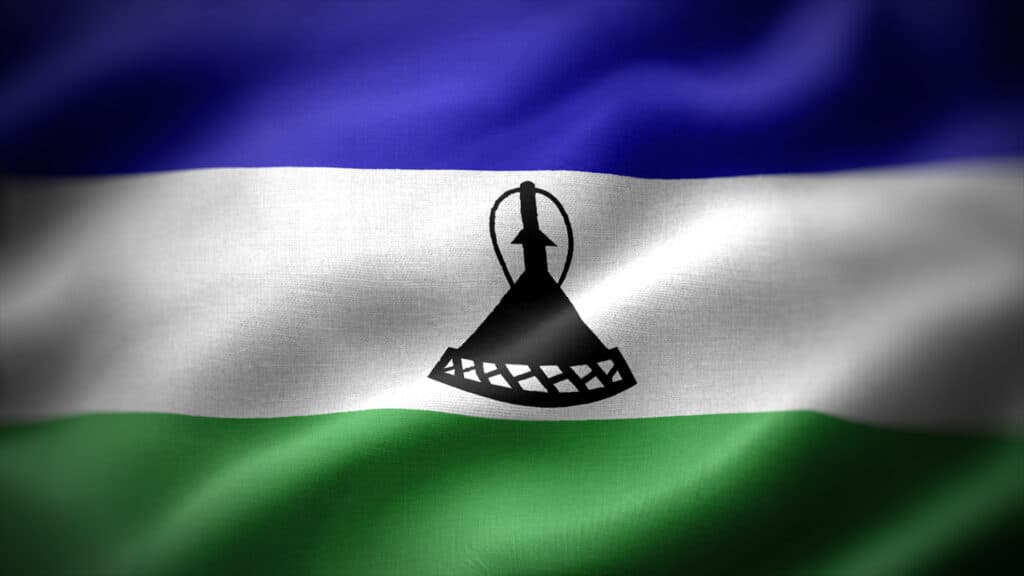
The flag of Lesotho has blue, white and green stripes.
©Tatohra/Shutterstock.com
Liberia
Liberia was not colonized by European powers, but the US set up several colonies in the early 19th century for Free African Americans. The country was deemed an independent nation in 1847, and its flag has been in use since that same year.
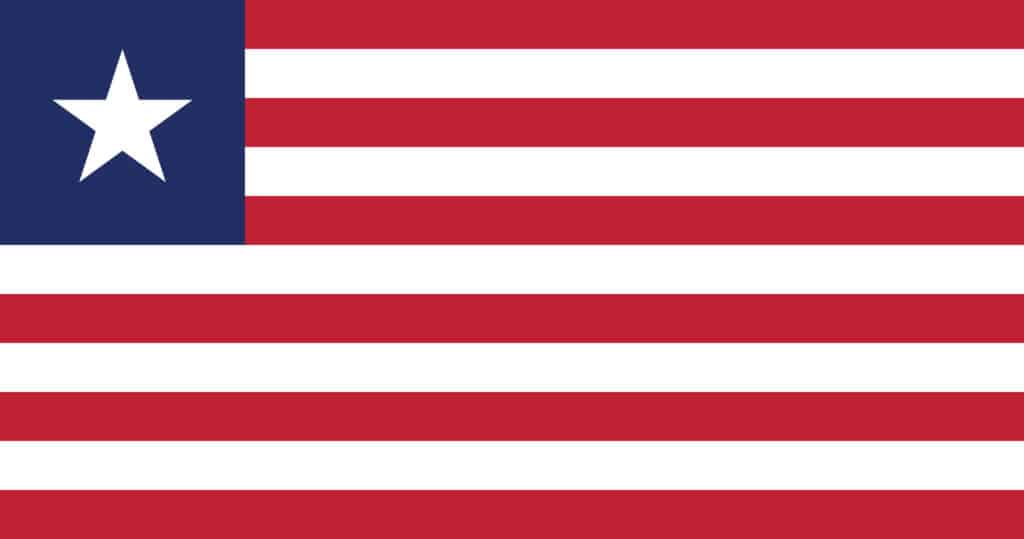
The 11 stripes represent each of the 11 men that signed Liberia’s Declaration of Independence. The blue canton symbolized the native lands of black Africans. The single star reflected Liberia’s pride in being the only independent Westernized state on the African continent and the liberation of former slaves, who came to colonize Liberia.
©Gil C/Shutterstock.com
Libya
France colonized Libya until 1947 when it gained independence. The current flag was originally adopted in 1951. However, it was not used between 1969 and 2011 during the reign of Muammar Gaddafi.
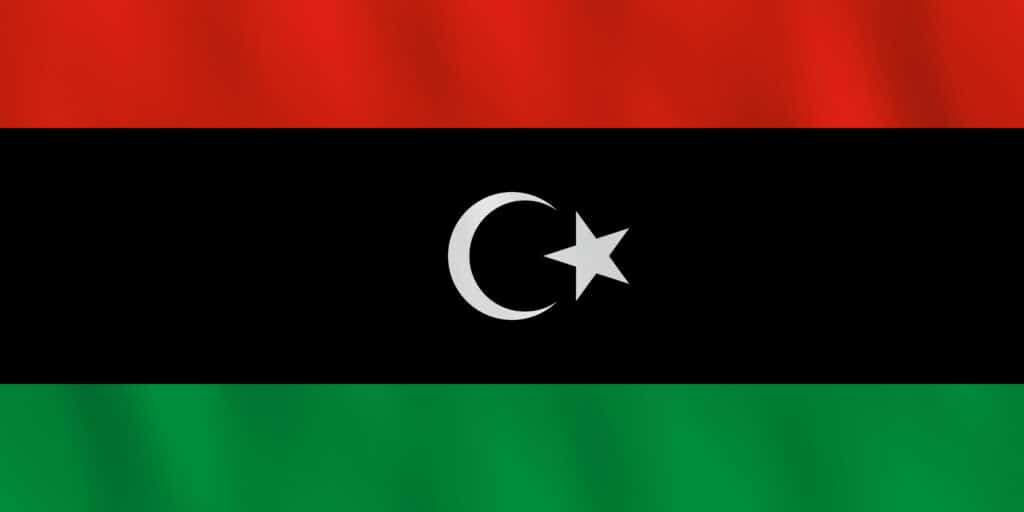
The flag of Libya includes red, black, and green.
©BOLDG/Shutterstock.com
Madagascar
Madagascar declared independence from France in 1960. The nation’s official flag was adopted in 1957. The colors stand for purity sovereignty and hope.
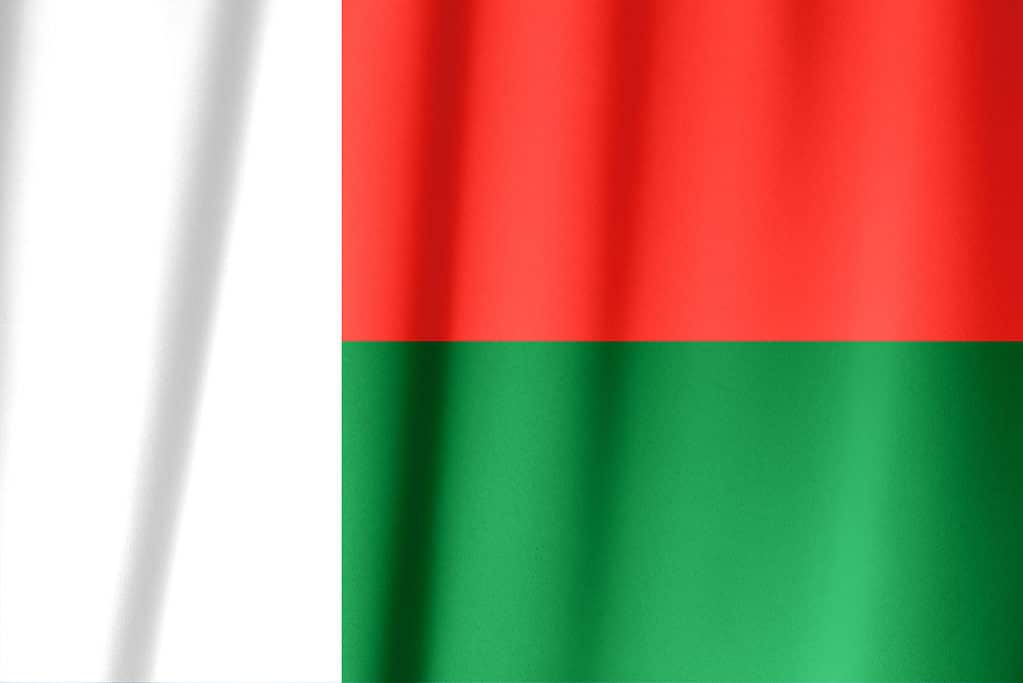
The flag of Madagascar features red, white, and green.
©Foxytail/Shutterstock.com
Malawi
Malawi gained independence from the UK in 1966. The current flag has been in use since 1964.
Mali
Mali was a French colony until 1960 when it declared independence. Mali’s official flag was adopted in 1961. Malawi was the 31st independent African nation, which is represented by the 31 ray sun.
Mauritania
Mauritania gained independence from France in 1960. However, the nation only recently adopted its current flag in 2017. The colors are Yellow for the Sahara desert, green for Islam, and red for sacrifice.
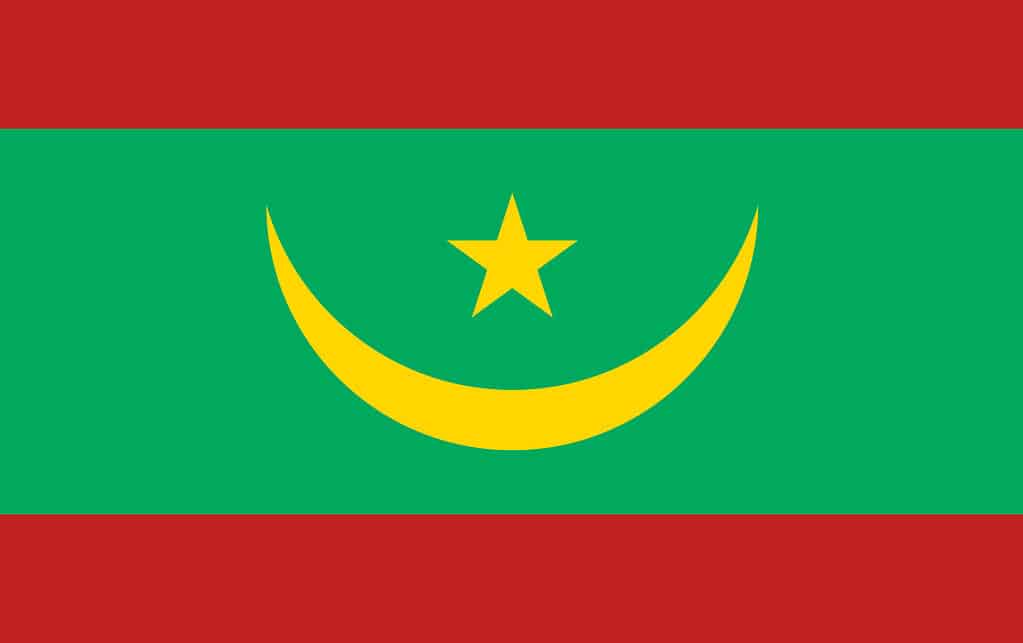
The flag of Mauritania features red and green stripes with a gold crescent moon and star.
©iStock.com/New Vectors
Mauritius
The flag of Mauritius was adopted when the country gained independence from the United Kingdom in 1968. The colors both have symbolic and political symbolism.
Morocco
The national flag of Morocco was adopted in 1915 when Sultan Yusef signed a decree that the Moroccan flag be red with a green pentangle in the middle.
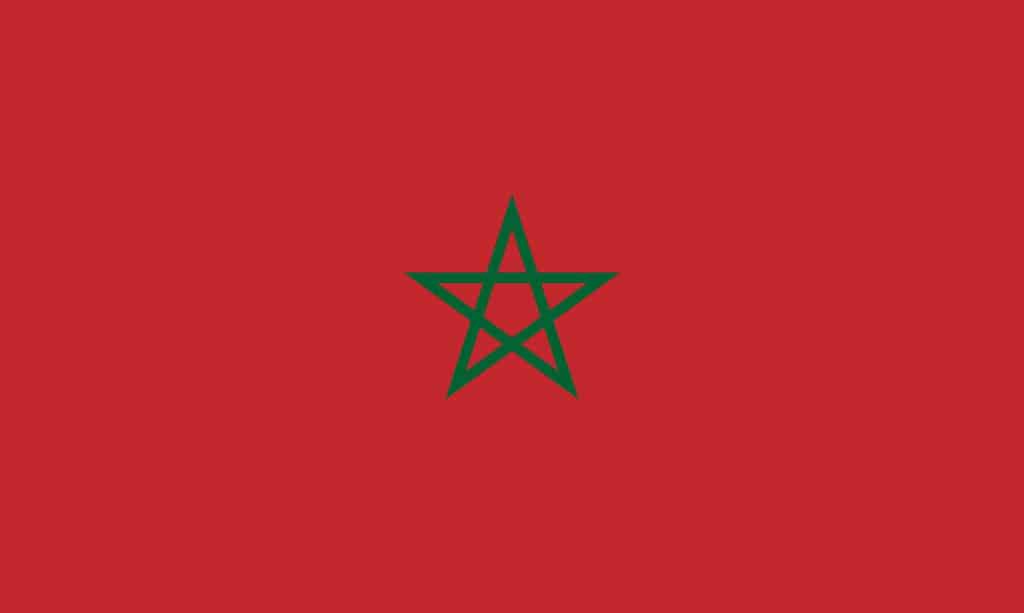
The flag of Morocco is made up of a red field with a green star in the center.
©iStock.com/VanReeel
Mozambique
When Mozambique gained independence from Portugal in 1975, the country used a flag based on the leading political party. But the flag was redesigned in 1983. It contains a bible, an assault rifle, and a hoe.
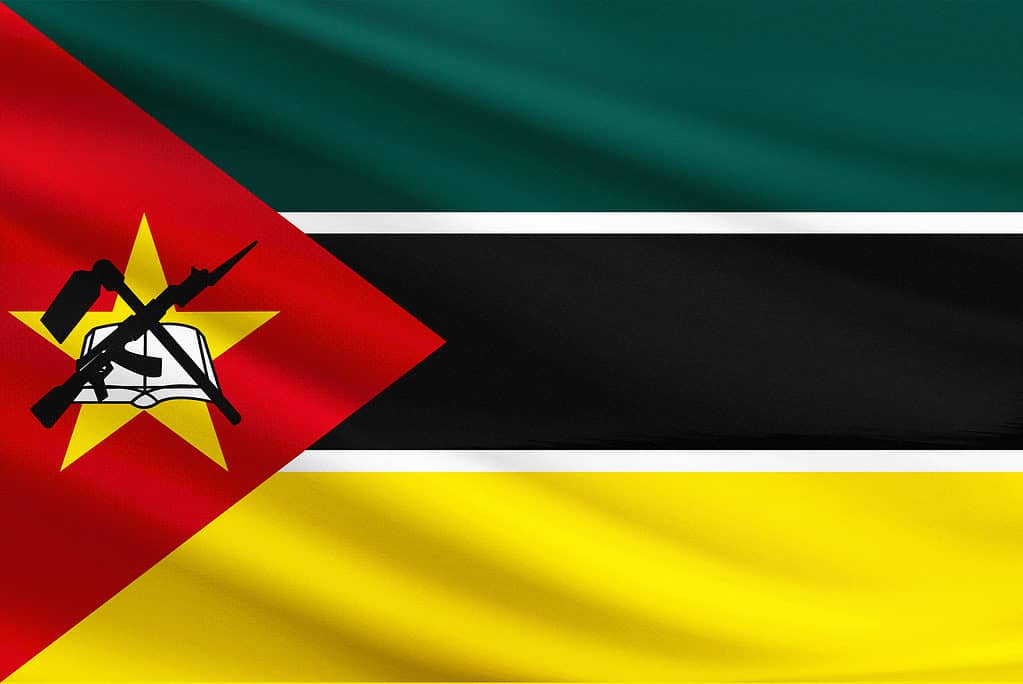
The flag of Mozambique features the colors of red, black, white, yellow, and green.
©Osman Bugra Nuvasil/Shutterstock.com
Namibia
When Namibia gained independence from South Africa in 1990, the flag of Namibia was flown for the first time. The golden sun represents life and energy.
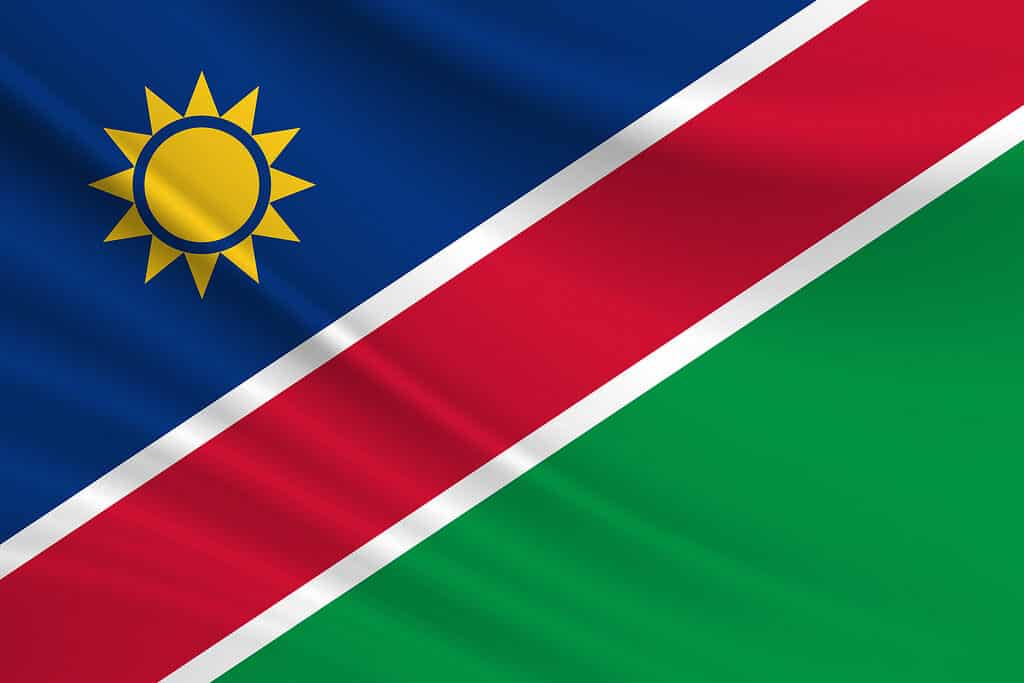
Namibia’s flag has diagonal stripes in blue, red, and green.
©Faievych Vasyl/Shutterstock.com
Niger
The flag of Niger has been in use since 1959, a year before the country gained independence from France. The flag represents the Sahara, the Niger river, and the fertile regions of Niger.
Nigeria
The flag of Nigeria was first raised in 1960 when the country declared independence from the UK. The flag design was chosen from a competition hosted in 1958.
Republic of the Congo
The flag of the Republic of the Congo was first adopted in 1959 to replace the French flag. In 1970, it was replaced by the flag of the People’s Republic of the Congo. The original flag was readopted in 1991.

The flag of the Democratic Republic of Congo has red, blue, and yellow colors, with a star in the upper left corner and a red stripe with two thinner yellow stripes running diagonally across it.
©iStock.com/Дмитрий Ларичев
Rwanda
Rwanda’s previous flag was a tricolor was the letter R in the middle. This flag was replaced by the present-day flag in 2001. The flag represents peace, development, and prosperity.
Sao Tome and Principe
The flag of Sao Tome and Principe was adopted in 1975 when it finally gained independence, replacing the flag of Portugal. The country is comprised of 2 islands represented by the black stars.
Senegal
Senegal withdrew from the Mali Federation in 1960, after which they adopted their own tricolor flag. The flag drew inspiration from the French flag.
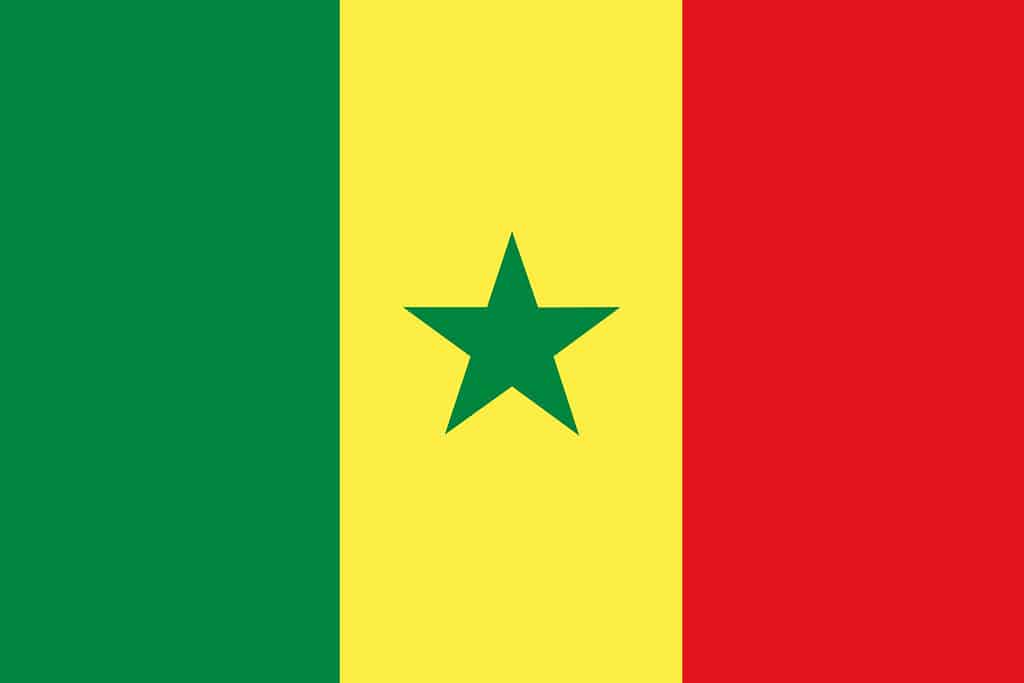
The three colors of the flag of Senegal each represent values important to the native people.
©Pavlo Lys/Shutterstock.com
Seychelles
Seychelles gained independence from the UK in 1976, and three different flag designs have been in use since then. The current design was adopted in 1996.
Sierra Leone
The flag of Sierra Leone was adopted in 1961, the same year the country gained independence from the United Kingdom. The flag is very similar to the flag of the Galapagos Islands.
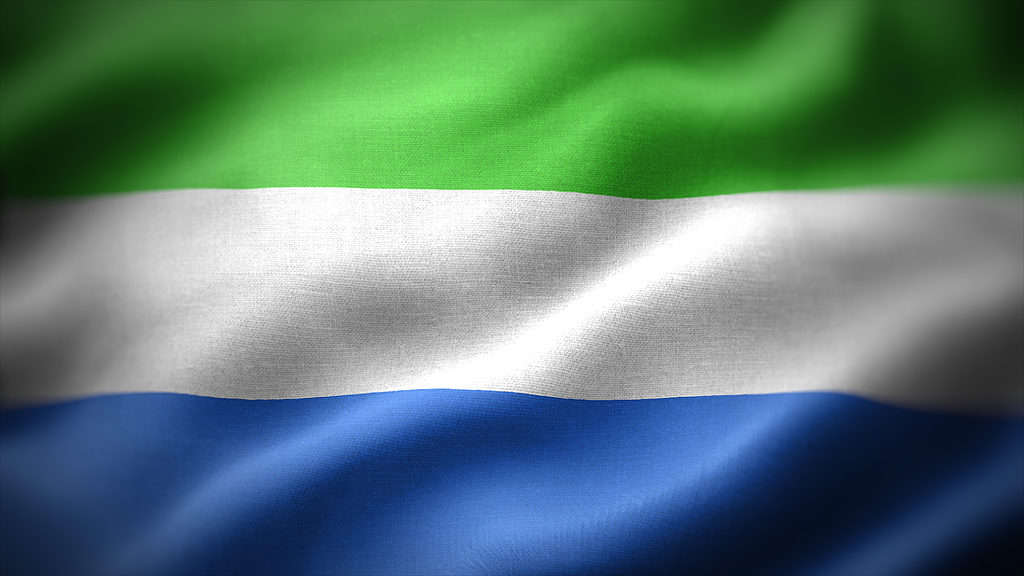
The flag of Sierra Leone represents many different important values.
©Tatohra/Shutterstock.com
Somalia
The Somali flag is also an ethnic flag for the Somali people. This flag was adopted in 1954 and readopted in 2012 with the current constitution. The star stands for the 5 regions in Somalia.
South Africa
The flag of South Africa as we know it today was adopted in 1994 as the country became democratic. This flag replaced the older design that had been in use in 1928.
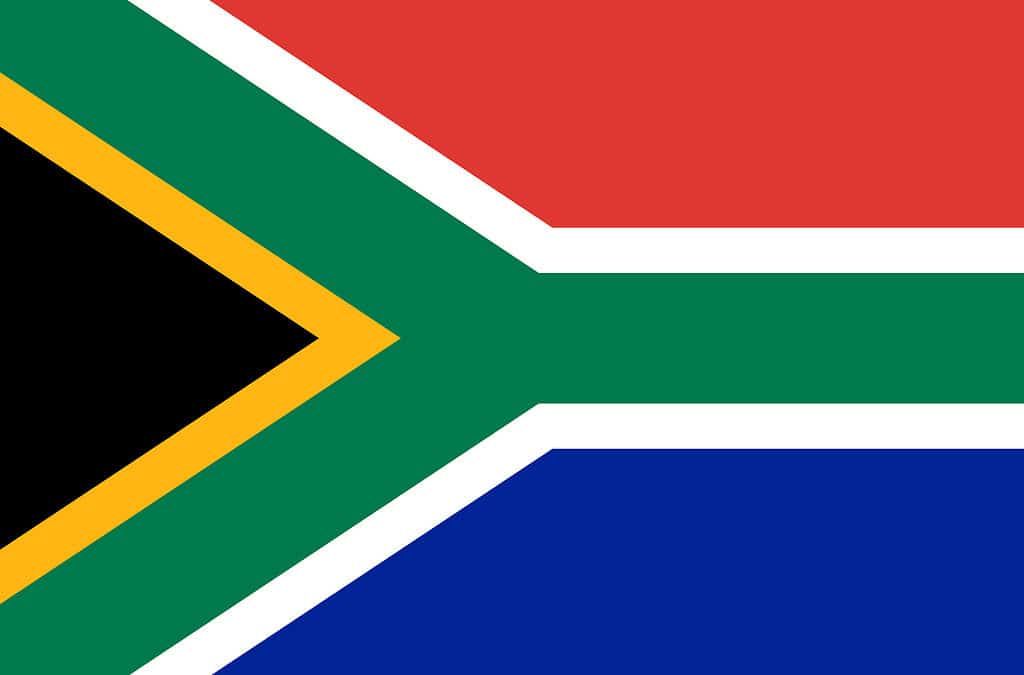
The “Y” shape on the flag of South Africa recognizes the country’s history and acts as a symbol of unity and hope.
©iStock.com/cveiv
South Sudan
The flag of South Sudan is older than the country, as the flag was adopted in 2005, and the country only became independent in 2011. The flag is similar to the Kenyan flag, while the Sudan flag is similar to the Egyptian flag.
Sudan
From the country’s independence in 1956 to 1969, Sudan used a different flag. The modern flag was not adopted until 1970: a tricolor of red, white, and black.
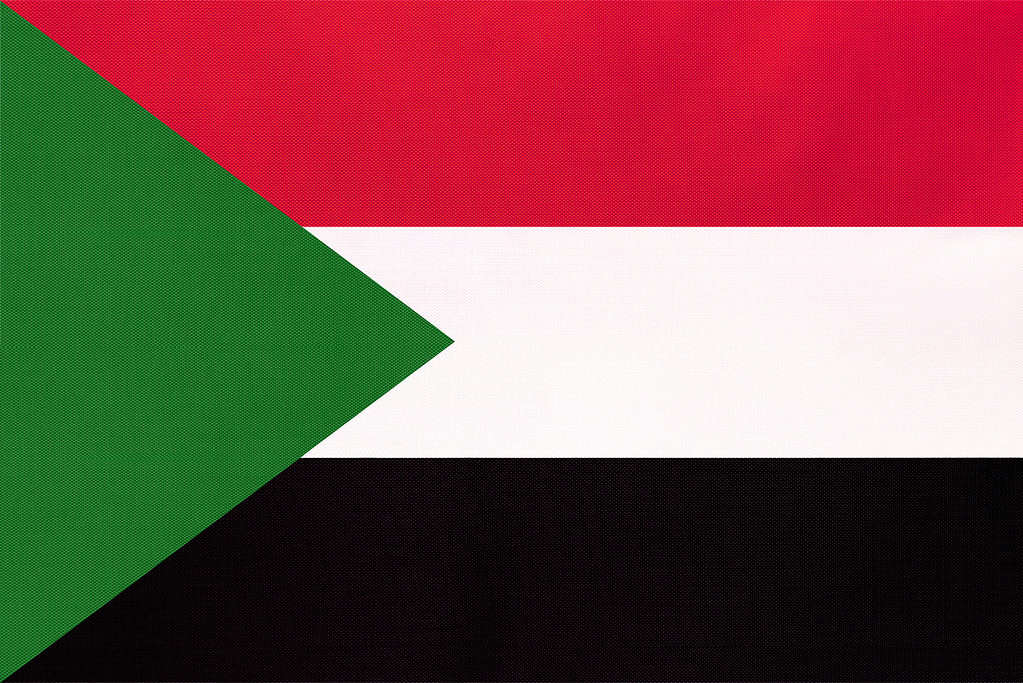
The Sudanese flag features green, red, black, and white.
©Anastasilia Guseva/Shutterstock.com
Tanzania
The flag of Tanzania was adopted in 1964 to replace the individual flags of the two states, Tanganyika and Zanzibar, after they gained independence in 1961 and 1963 respectively.
Togo
Togo’s independence from France was granted in 1960, after which Togo’s national flag was adopted. The flag is part of both the pan-African and Stars and Stripes flag families.
Tunisia
The Tunisian flag has been flown since 1827, and the flag has been unchanged throughout its modern history from independence to a kingdom to a republic.
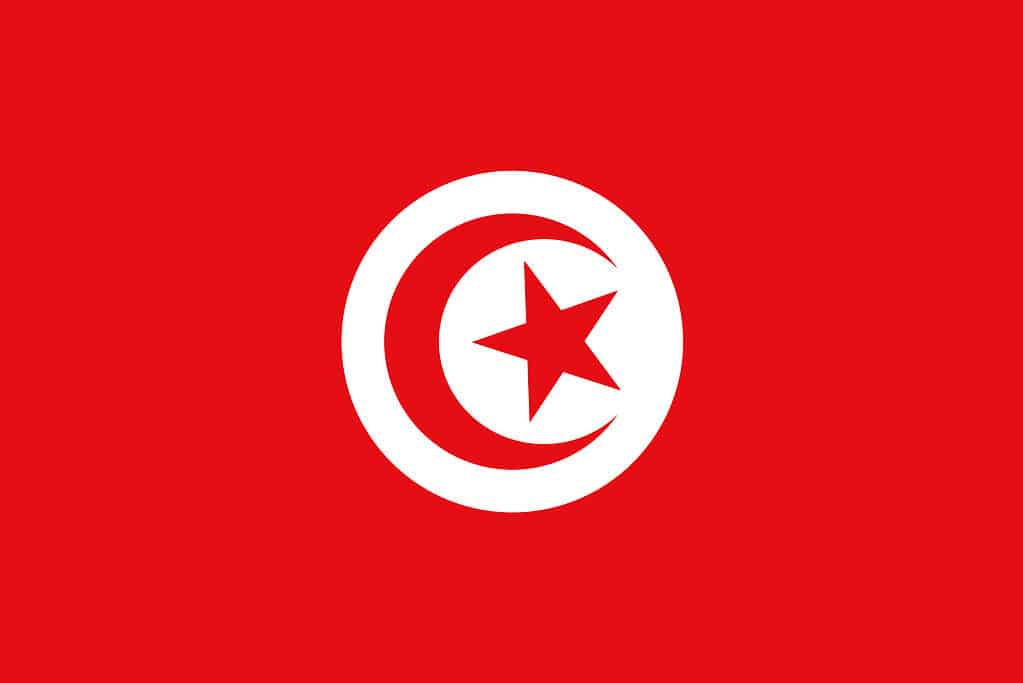
An image of the national flag of Tunisia symbol.
©Peter Etchells/Shutterstock.com
Uganda
The day that Uganda became independent from the UK, 9 October 1962, is also the date that the Ugandan flag was officially adopted for the first time.
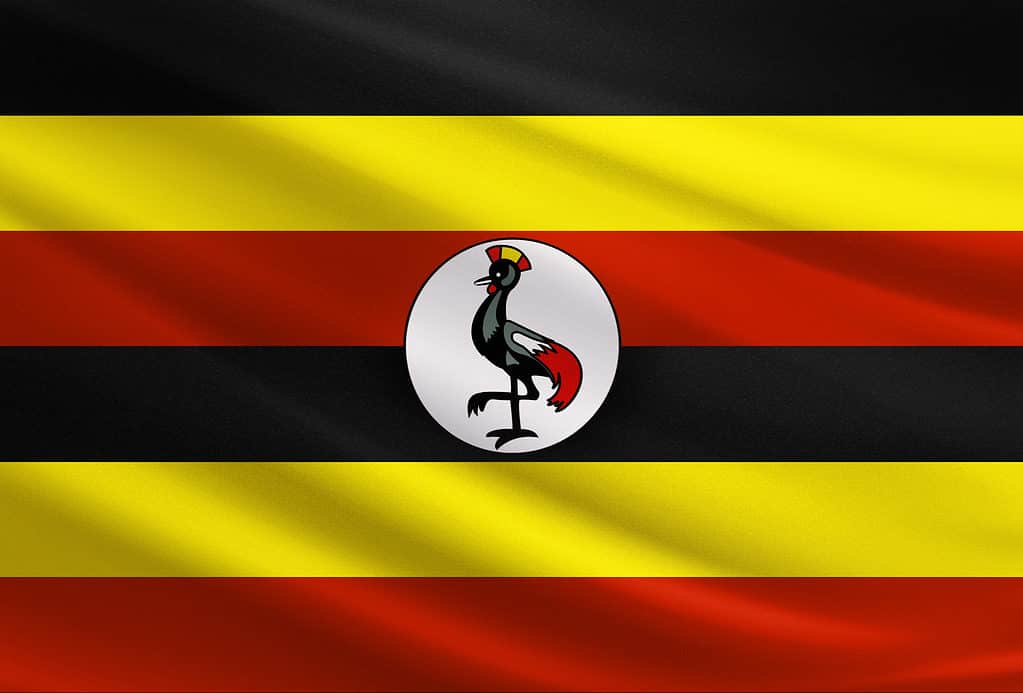
The flag of Uganda features red, yellow, and black.
©Osman Bugra Nuvasil/Shutterstock.com
Western Sahara
Western Sahara is a disputed territory with the majority of the country run by Morocco and the rest run by the Sahrawi Arab Democratic Republic (SADR). The flag of Western Sahara showcases the Islamic star alongside a crescent with the Pan-Arabic hues of black, green, white, and red as well as a triangle representing the country’s journey.
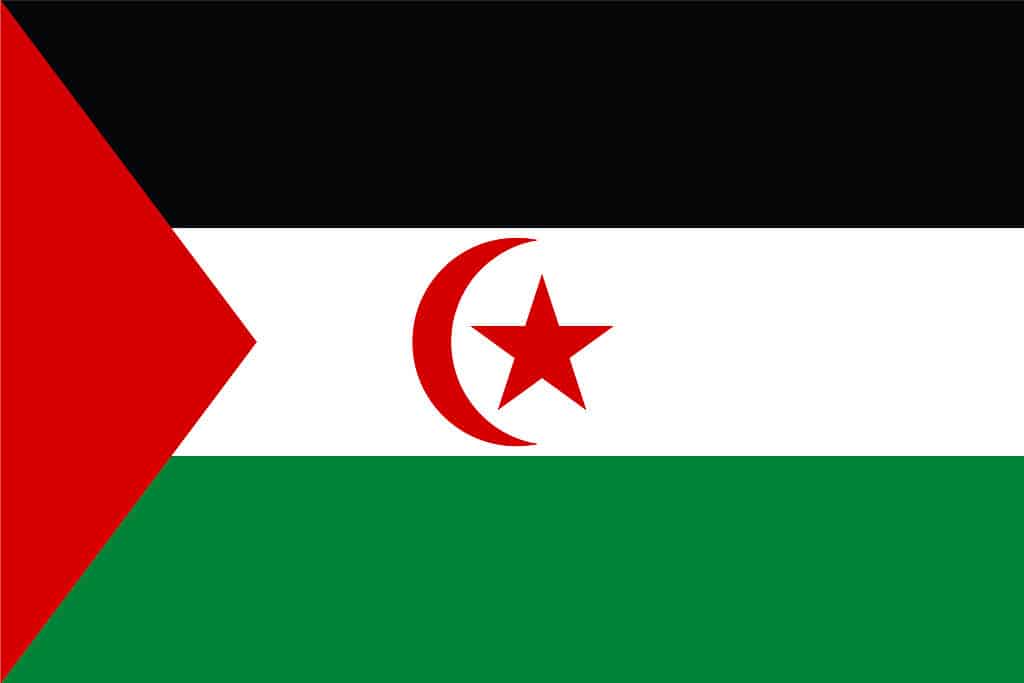
The colors in the flag of Western Sahara symbolize death, life and peace.
©Q STOCK/Shutterstock.com
Zambia
Upon Zambia’s independence from the UK in 1964, the country became a republic, and the flag was flown for the first time. The flag contains an African Fish Eagle representing the Zambian people.
Zimbabwe
Although Zimbabwe declared independence from the UK in 1965, it wasn’t recognized until 1980, which is when the flag of Zimbabwe was adopted.
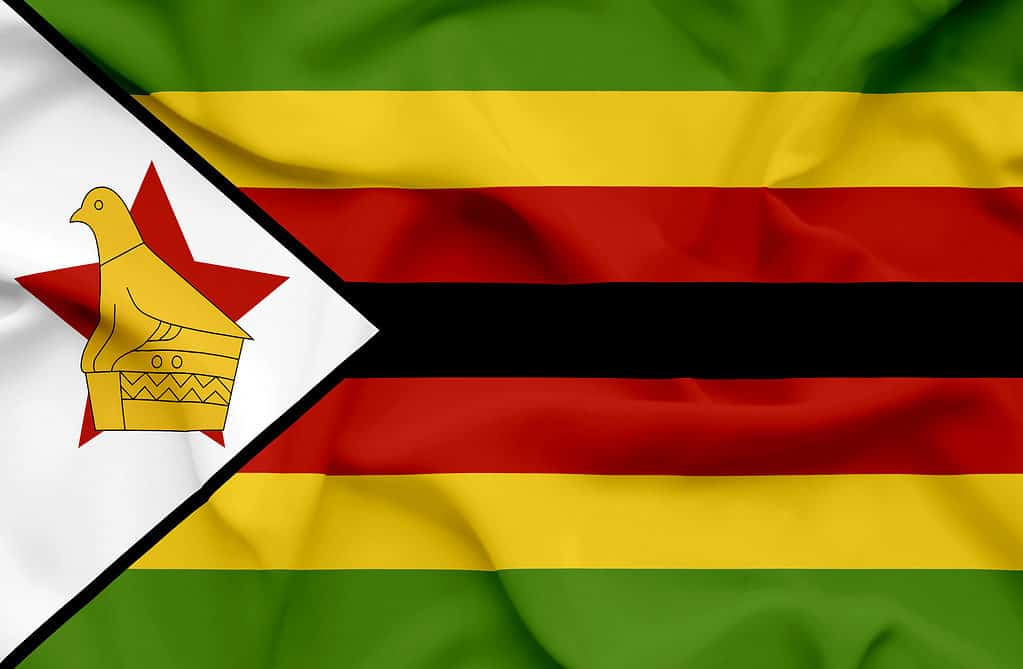
The Zimbabwe flag features stripes of green, gold, red and black with a white triangle on the left side.
©Aleksandar Mijatovic/Shutterstock.com
Oceania
Australia
Australia gained independence from the UK in 1901. And the Australian flag has been used since 1903, but it was amended in 1908 to have seven-point stars instead of six.
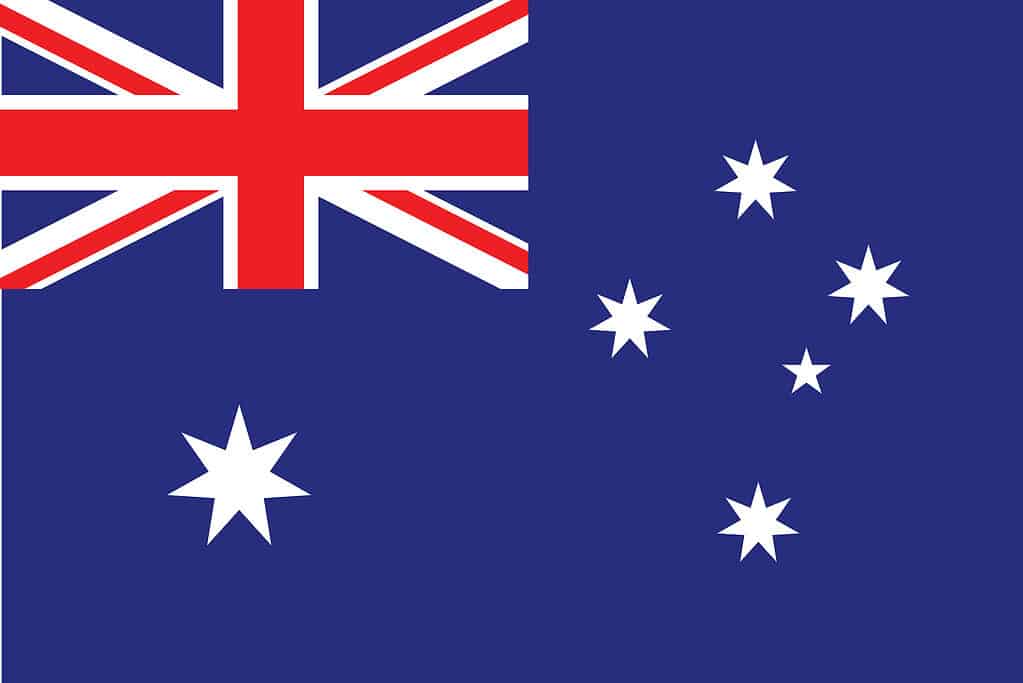
The flag of Australia features a blue background with white stars and a Union Jack design in the top left corner.
©iStock.com/Ardani Saputro
Fiji
The flag of Fiji was adopted in 1970 when the country gained independence from the UK. And the flag has remained the same even when Fiji became a republic in 1987.
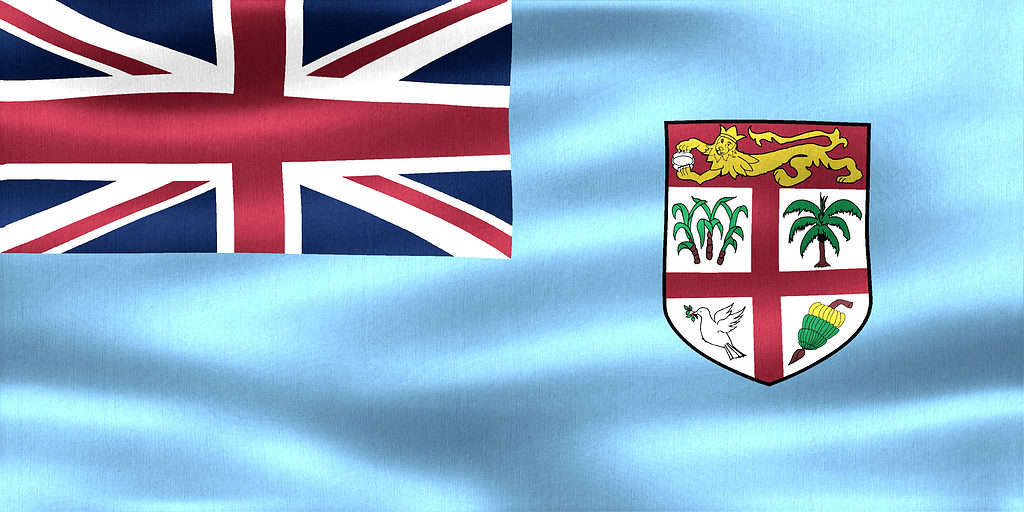
The flag of Fiji also features a Union Jack design in the top left corner along with a light blue background and a coat of arms.
©MP_Foto/Shutterstock.com
Kiribati
The current design of the national flag of Kiribati was adopted in 1979 when the country gained independence from the UK. The flag shows the sun rising over the sea.
Marshall Islands
The flag of the Marshall Islands was adopted when the country gained independence from the United States in 1979. The 24 point star represents the 24 districts in the nation.
Micronesia
The flag of Micronesia was adopted in 1978 before the country declared independence from the United States in 1979. However, it wasn’t until 1986 that Micronesia became a Freely Associated State.
Nauru
When Nauru became independent in 1968, the flag of Nauru was raised for the first time. This date, January 31, 1968, has become known as the country’s independence day.
New Caledonia
New Caledonia, a territory of France, uses two flags. The first is the French flag, which has been in use since 1864. It was the only flag used to represent New Caledonia until 2010, when the Kanak flag of independence was adopted.
New Zealand
The flag of New Zealand as we know it today has been in use since 1902, but its first internationally recognized flag was raised in 1834. The flag is very similar to that of Australia with one less star.
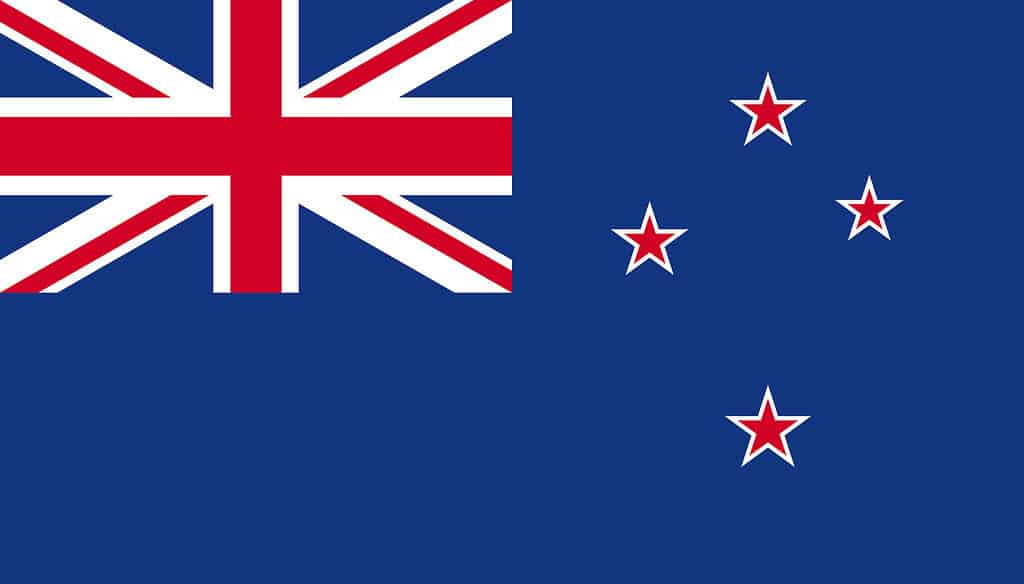
The flag of New Zealand plays tribute to its British history while also honoring to its people and its location.
©iStock.com/LysenkoAlexander
Palau
When the Palau island group separated from the UN trusteeship in 1981, the flag of Palau was raised for the first time. The flag shares many similarities with the Japanese rising sun flag.
Papua New Guinea
The flag of Papua New Guinea was designed by a 15-year-old girl through a nationwide competition in 1971. This flag has been flown ever since.
Samoa
The flag of Samoa was first adopted for UN Trusteeship in 1949, and the country continued to apply until it finally gained independence in 1962. Like many flags in Oceania the flag contains the southern cross constellation.
Solomon Islands
The flag of the Solomon Islands was adopted in 1977, almost a year before the country gained independence from the UK. The number of provinces has changed since then, but the number of stars hasn’t changed.
Tonga
The flag of Tonga became an official part of the country’s constitution and became recognized in 1875. The constitution states that the flag cannot be changed. The cross represents the nation’s commitment to Christianity.
Tuvalu
Tuvalu separated from the Gilbert and Ellice Islands in 1976, and in 1978, it became an independent nation, which is when the country’s flag was flown for the first time.
Vanuatu
Vanuatu gained independence from the UK in 1980. The colors of the party that led the country to independence were chosen to become the flag’s colors.
Up Next
- Countries With Striped Flags
- The Different Flags That Use Crescent Shapes
- The Don’t Tread On Me Flag and Phrase: History, Meaning, and Symbolism
The photo featured at the top of this post is © iStock.com/ChristianThielNet
Thank you for reading! Have some feedback for us? Contact the AZ Animals editorial team.



